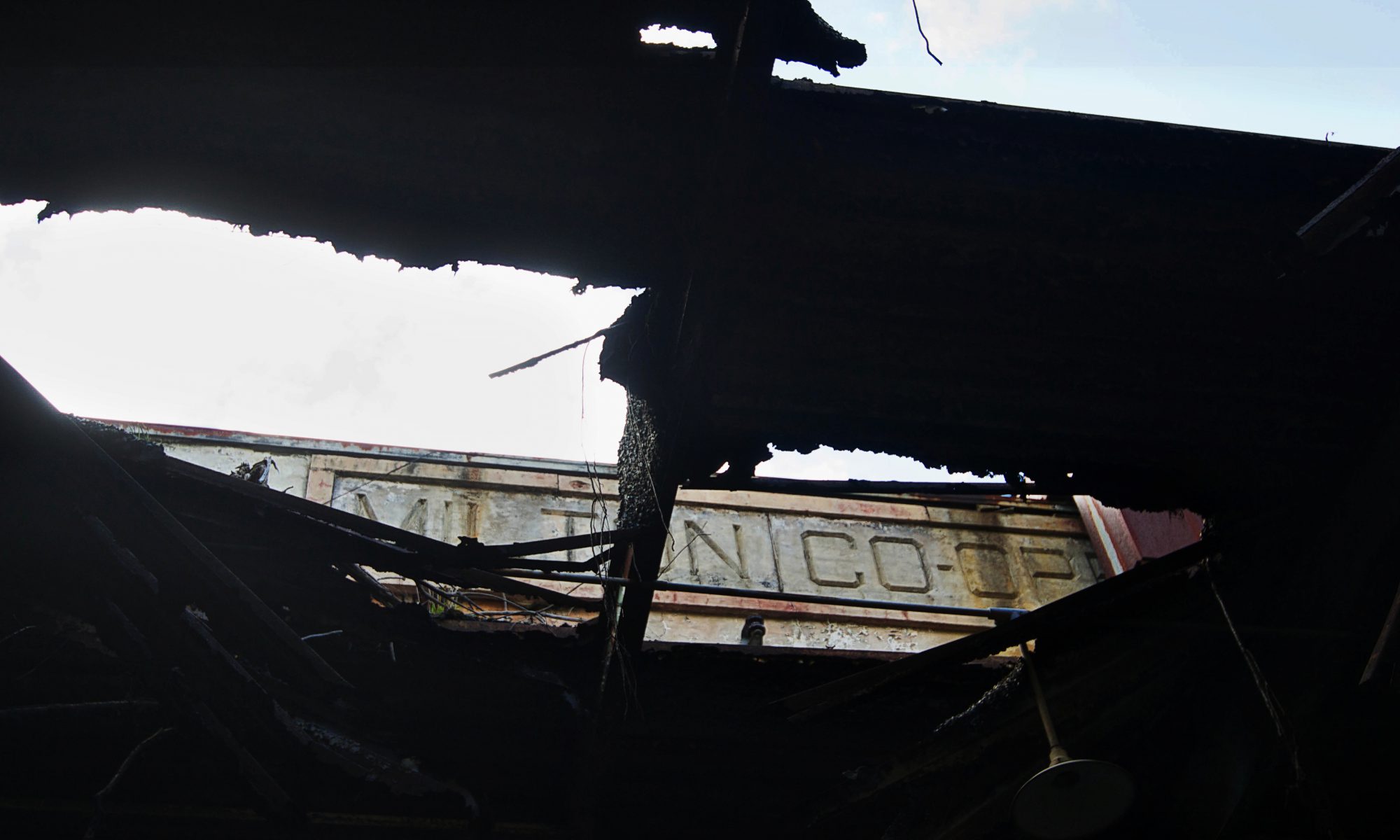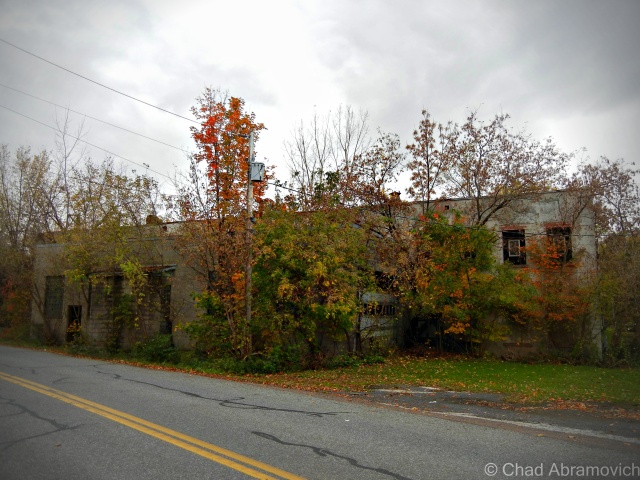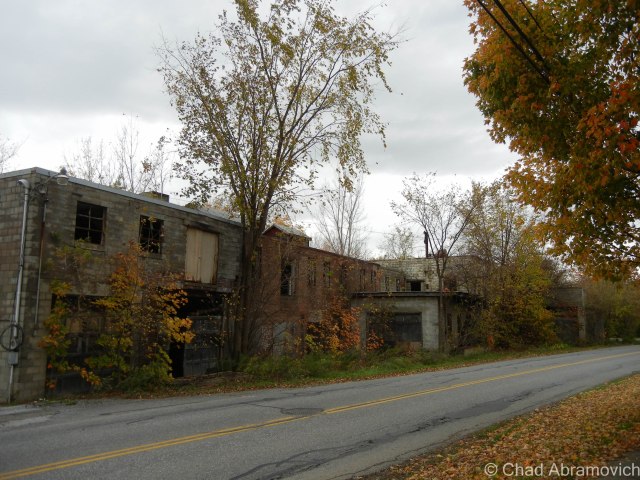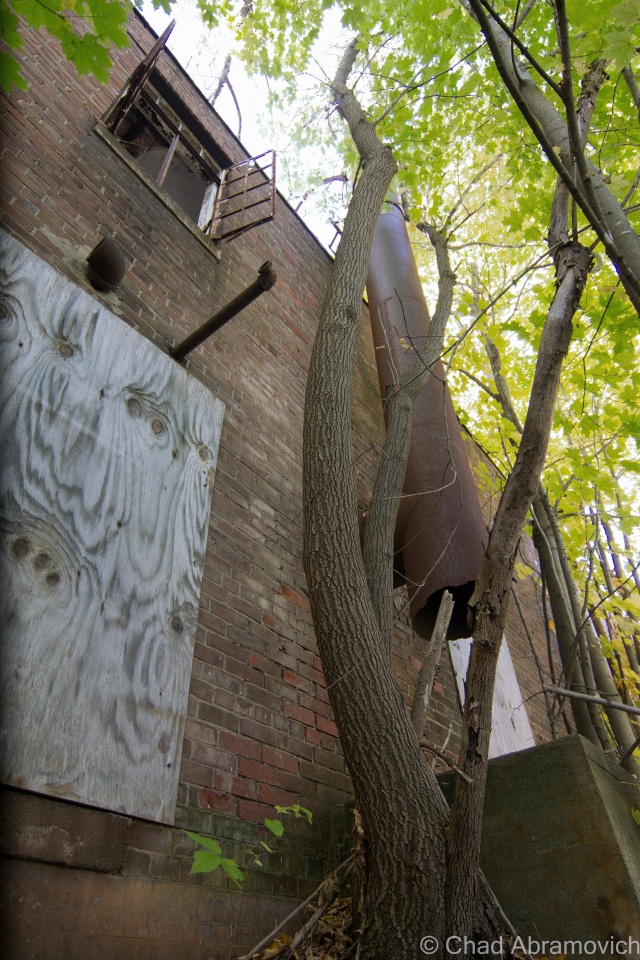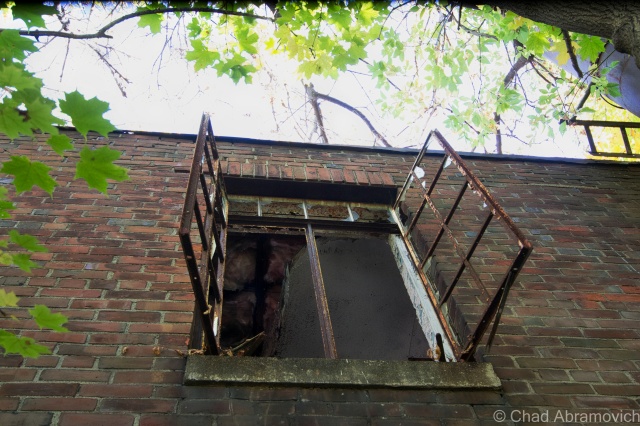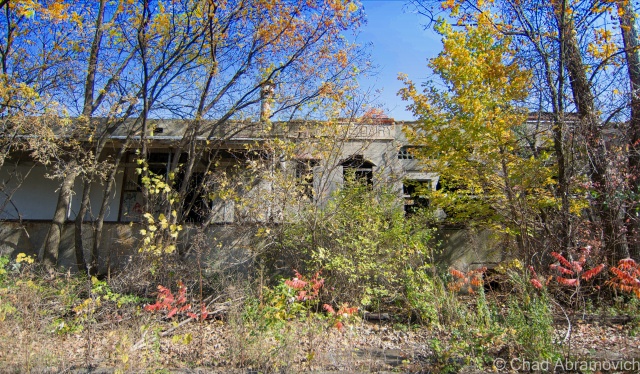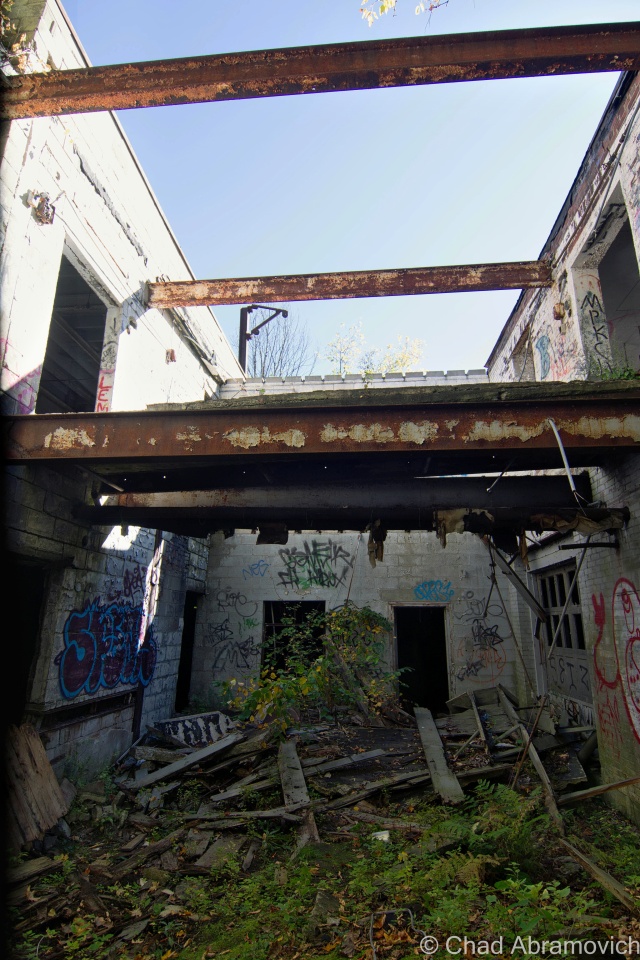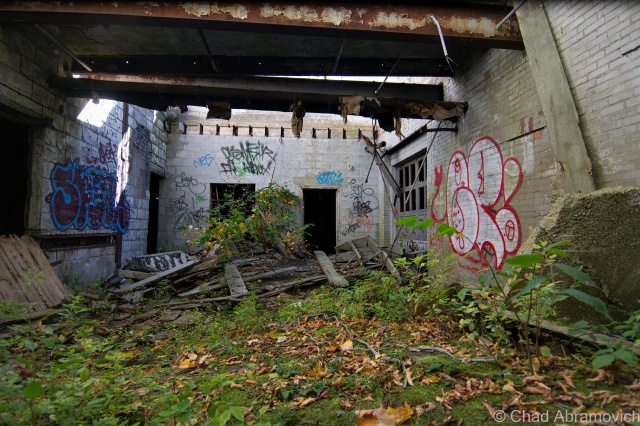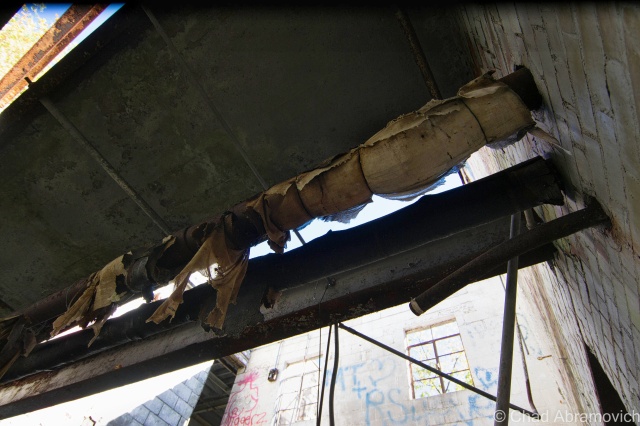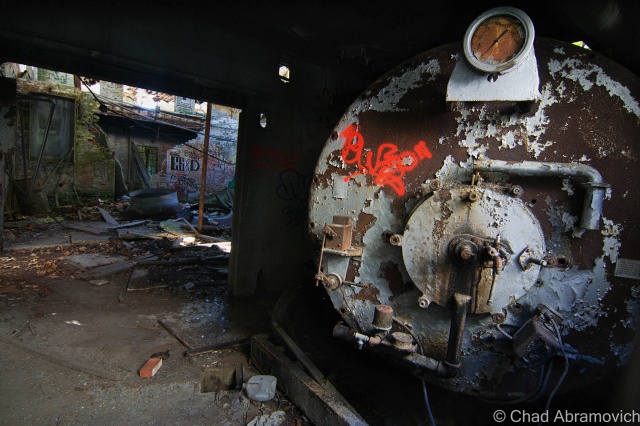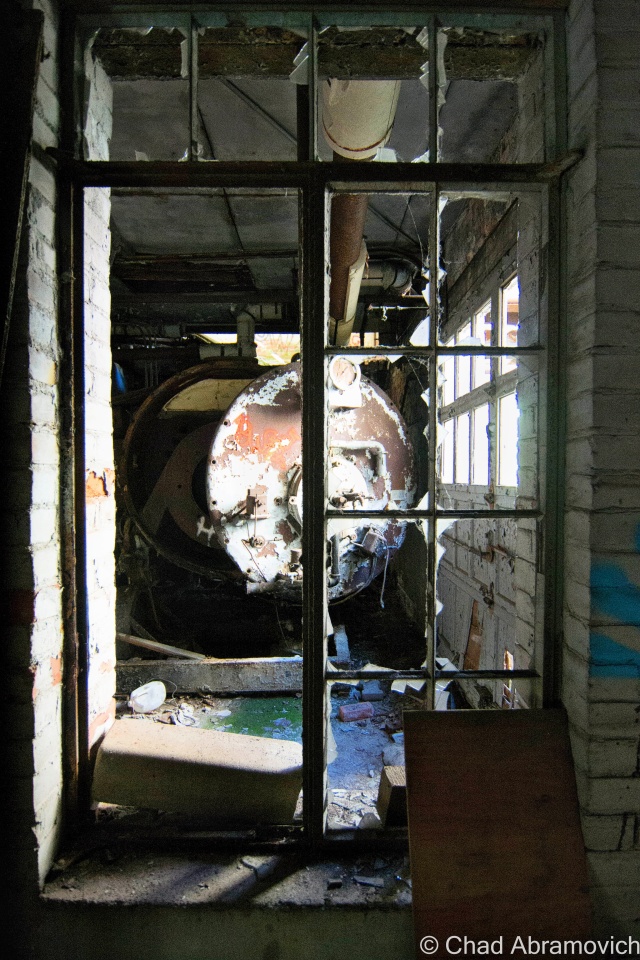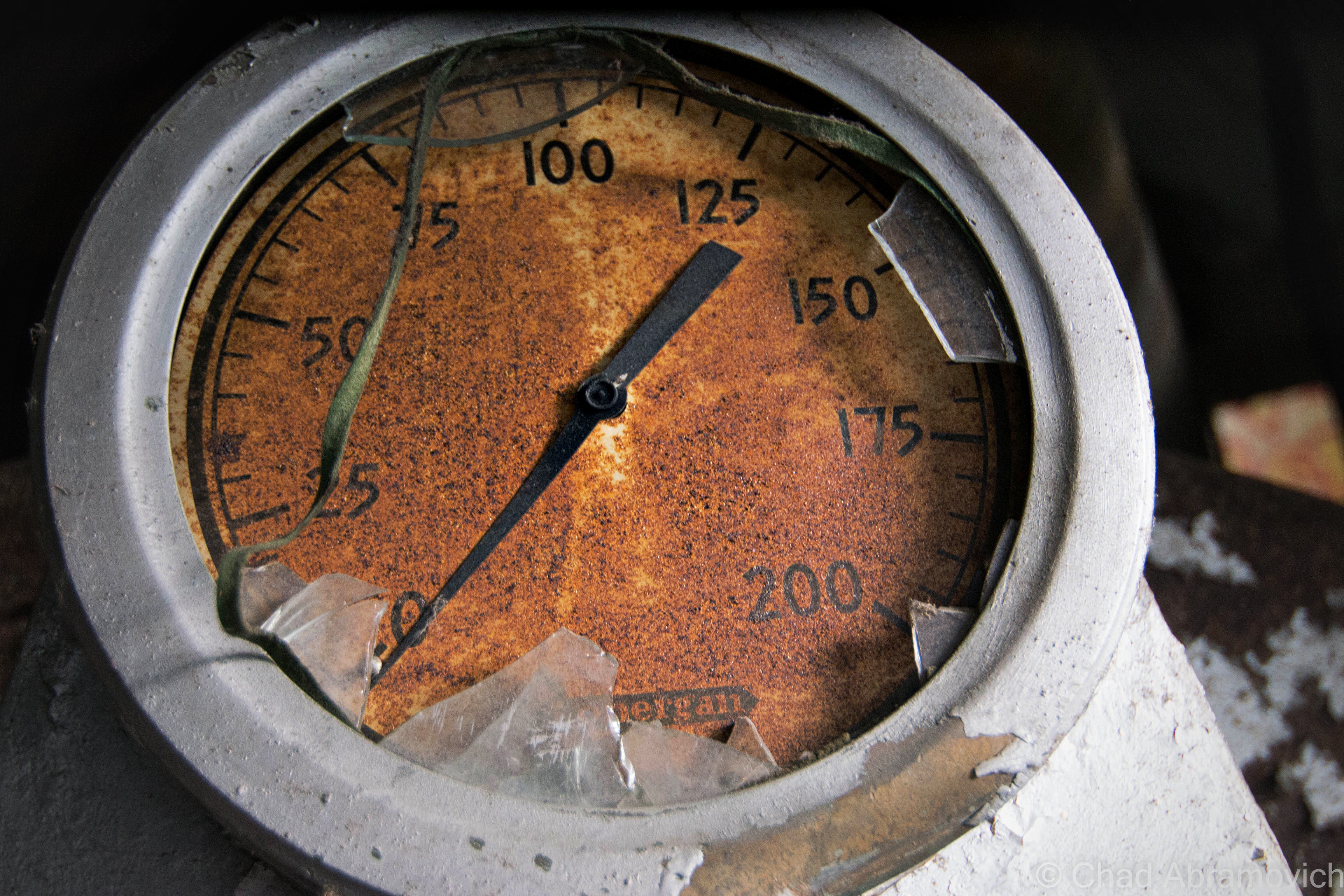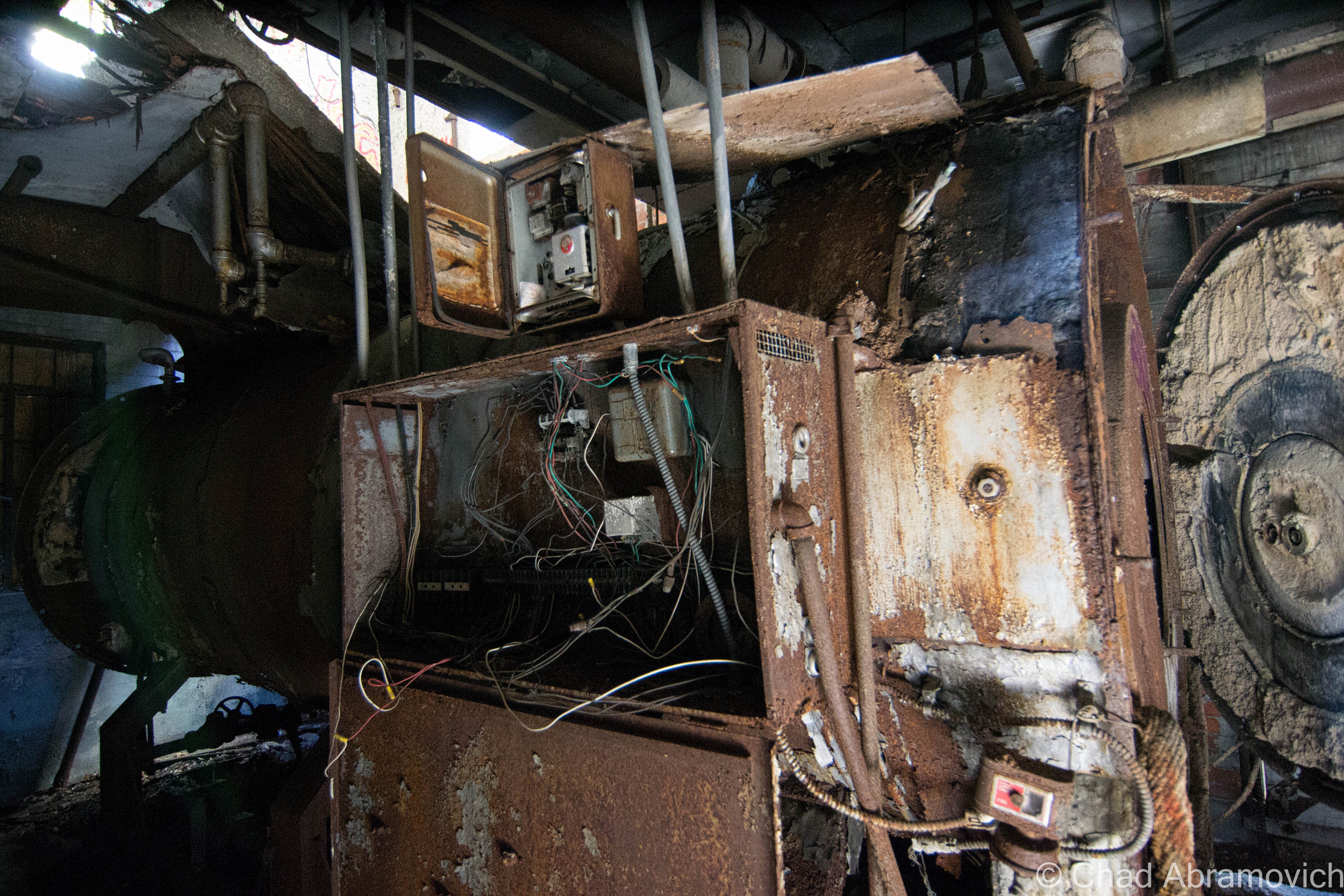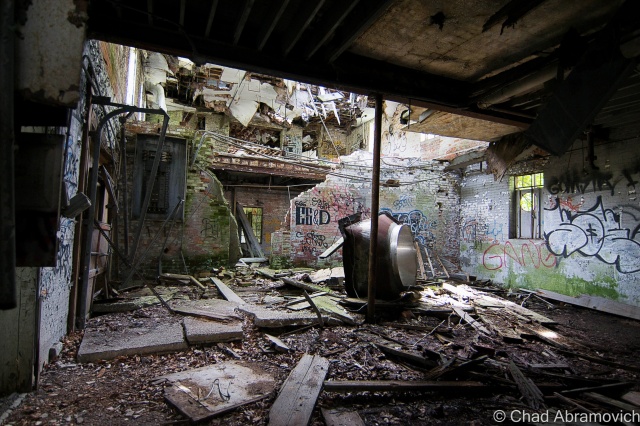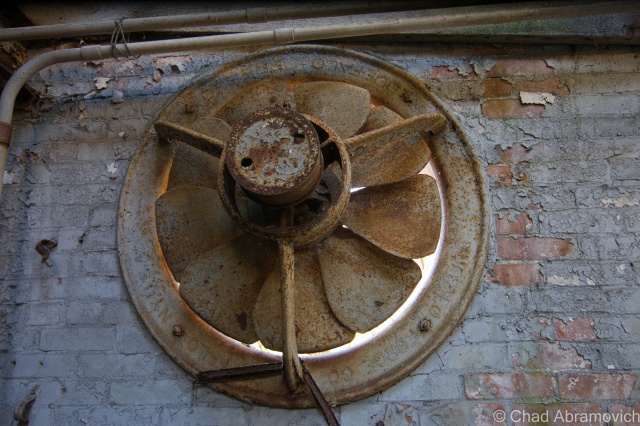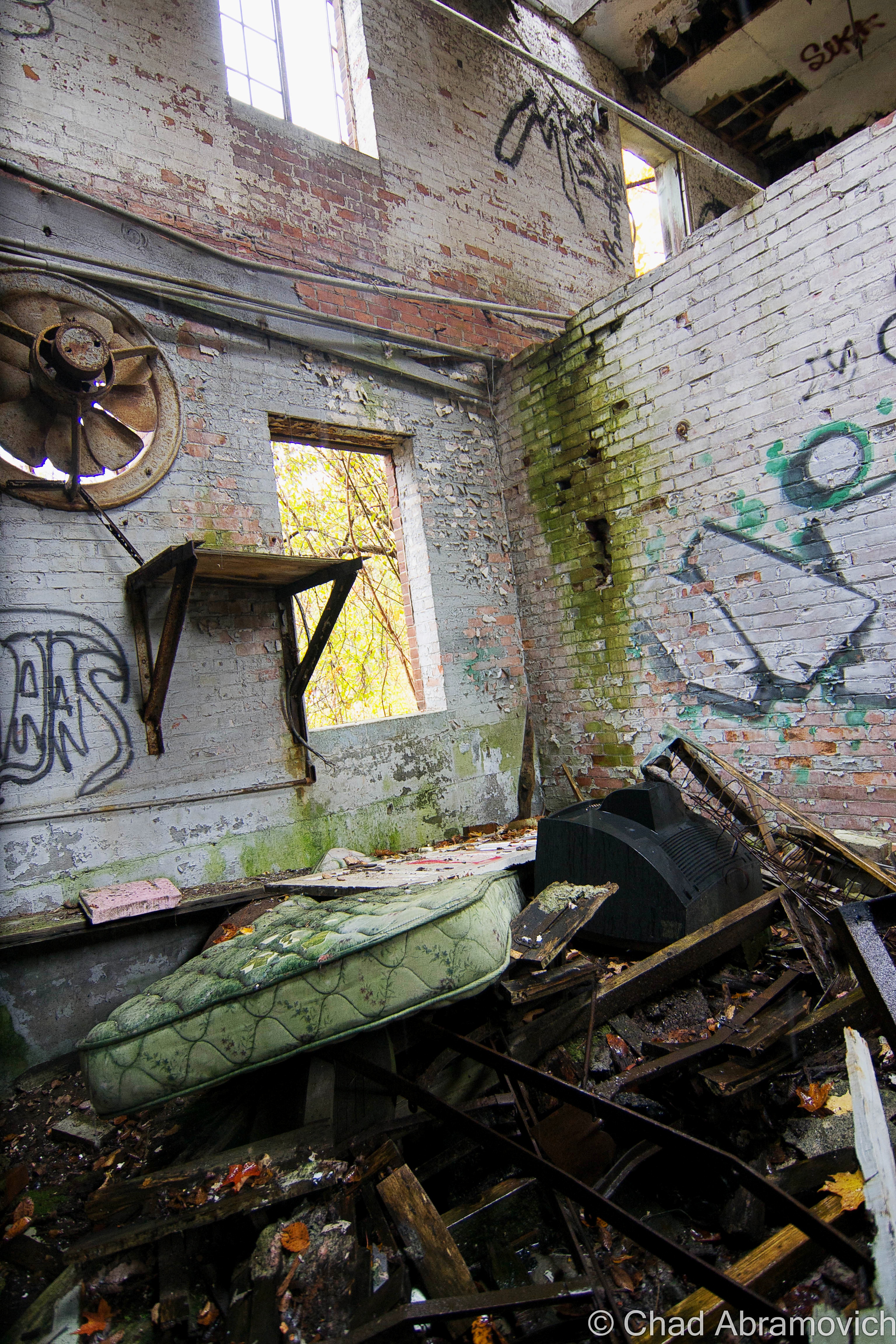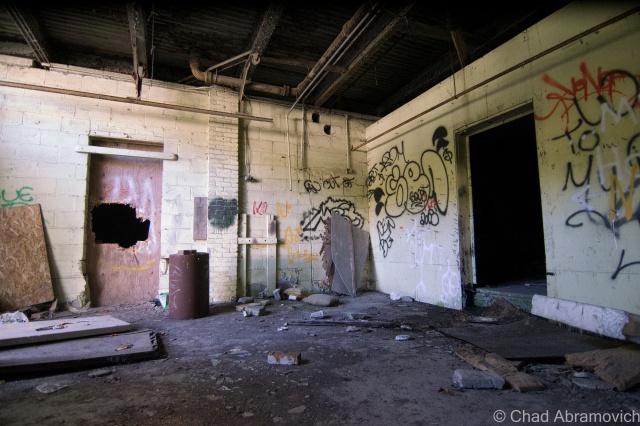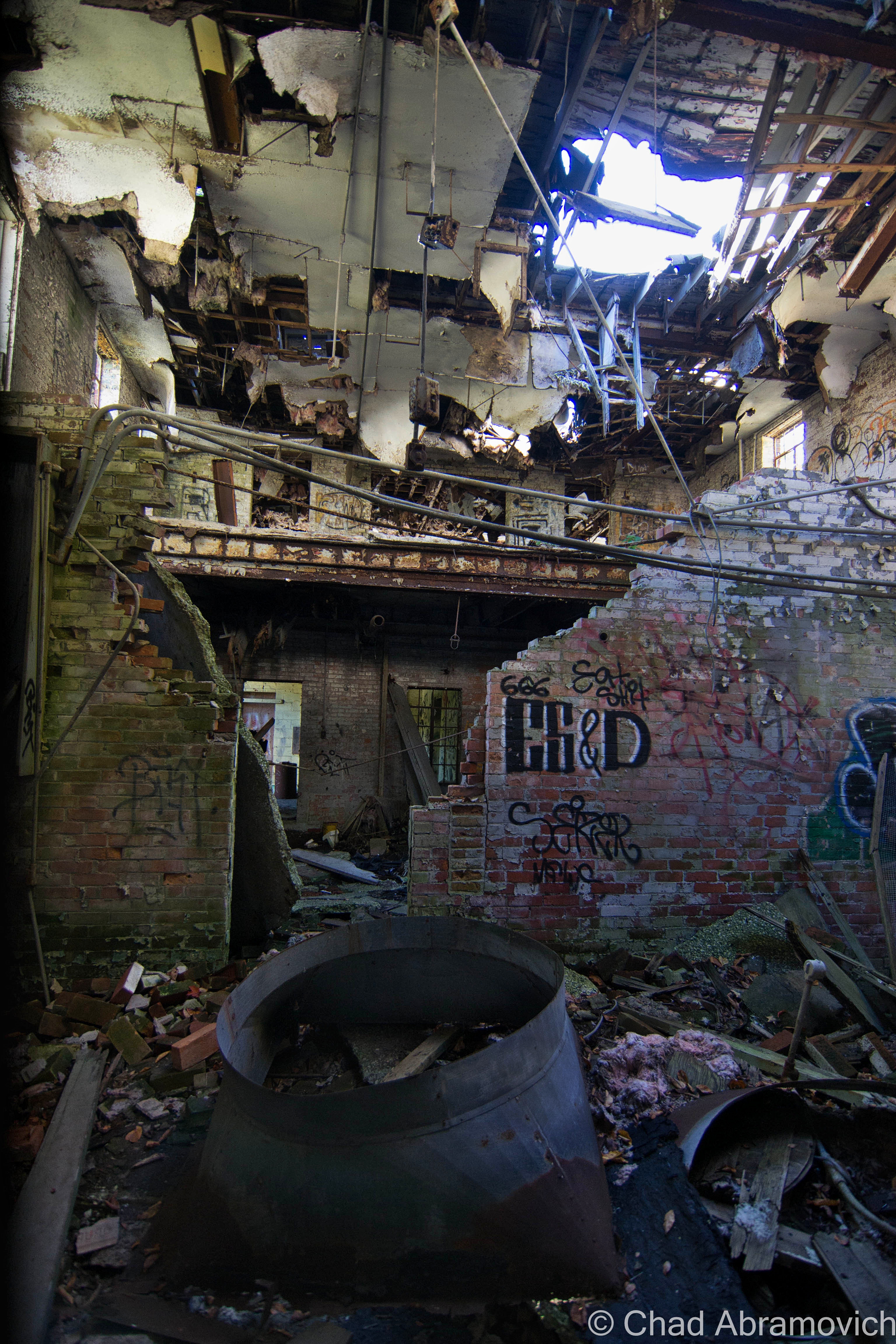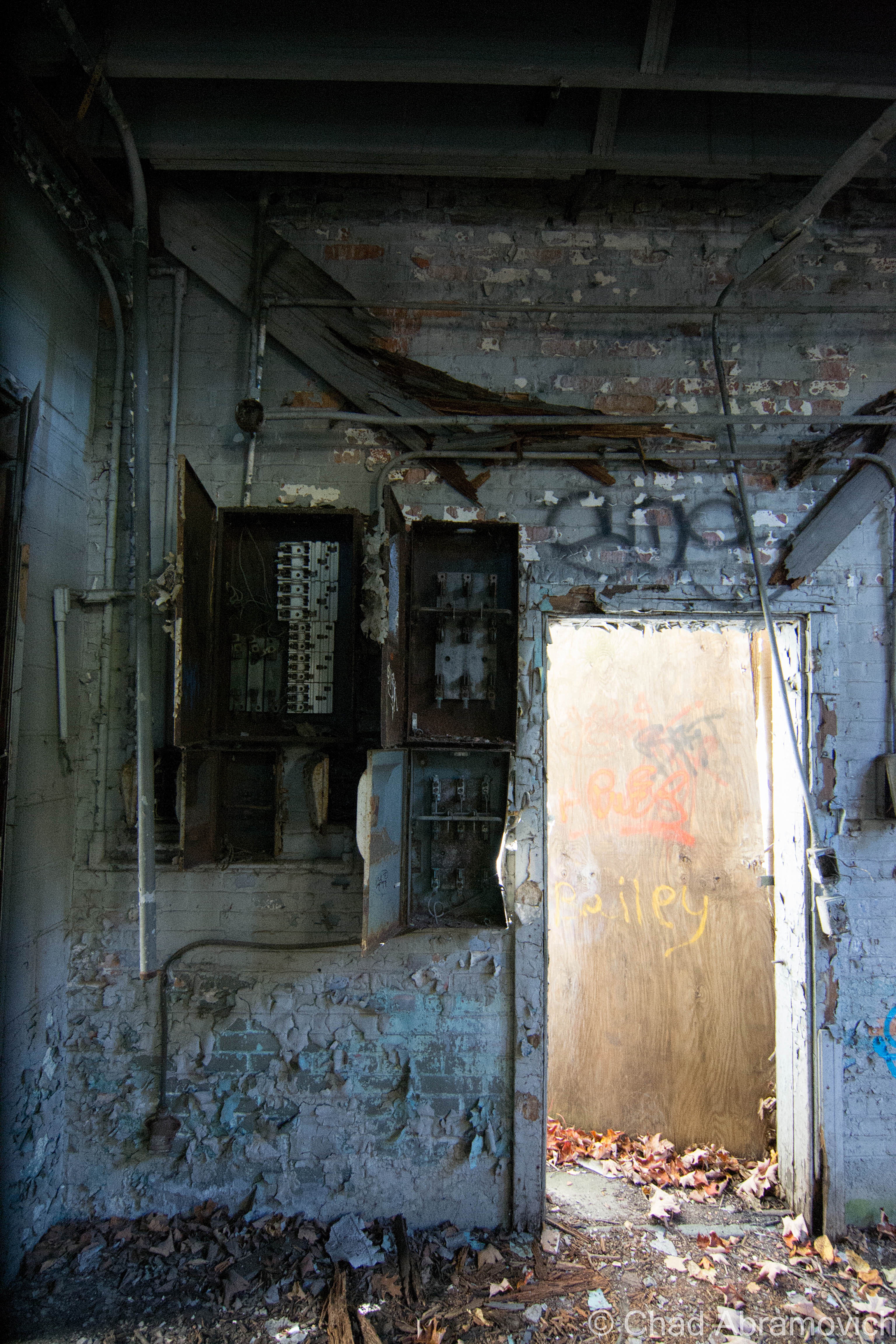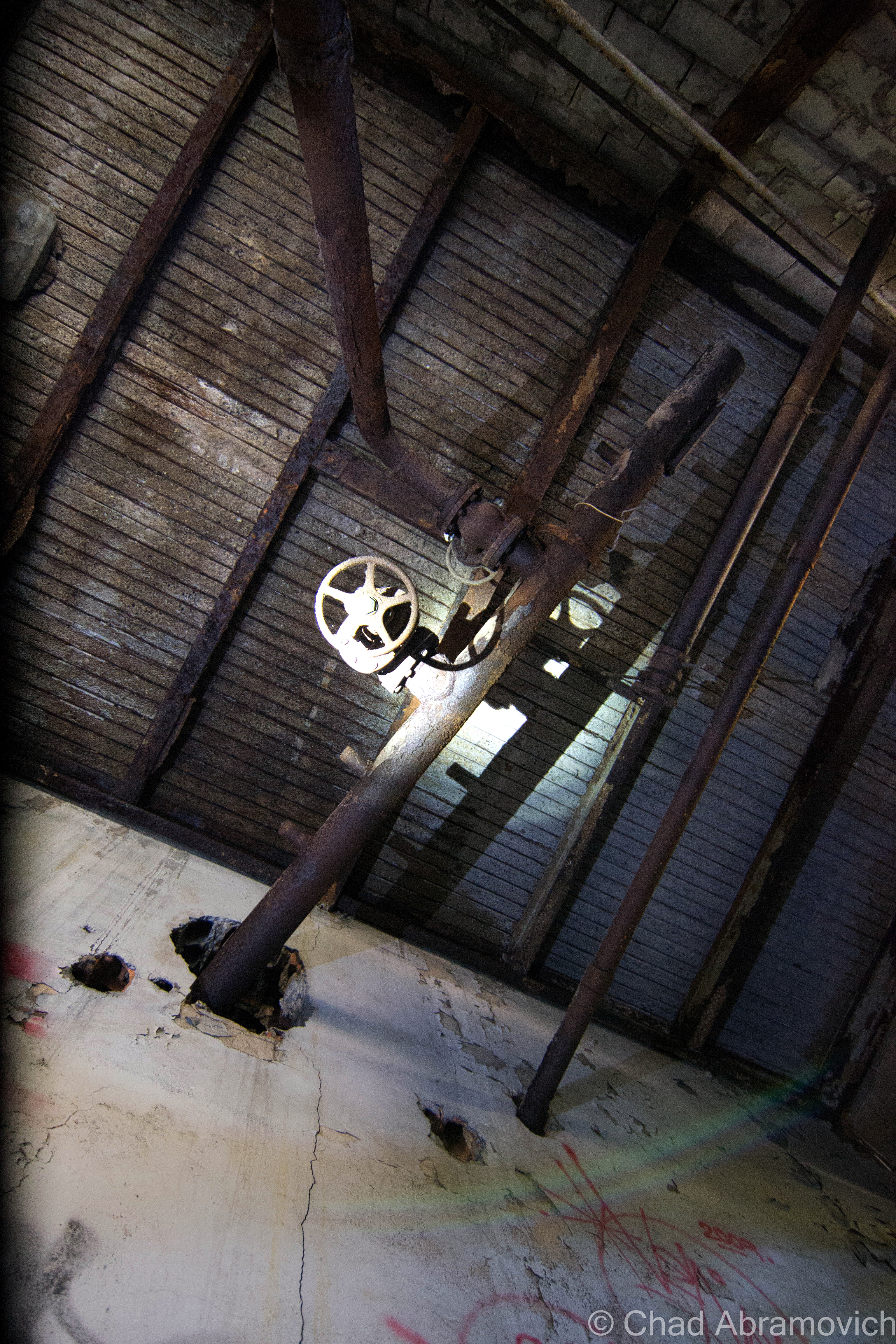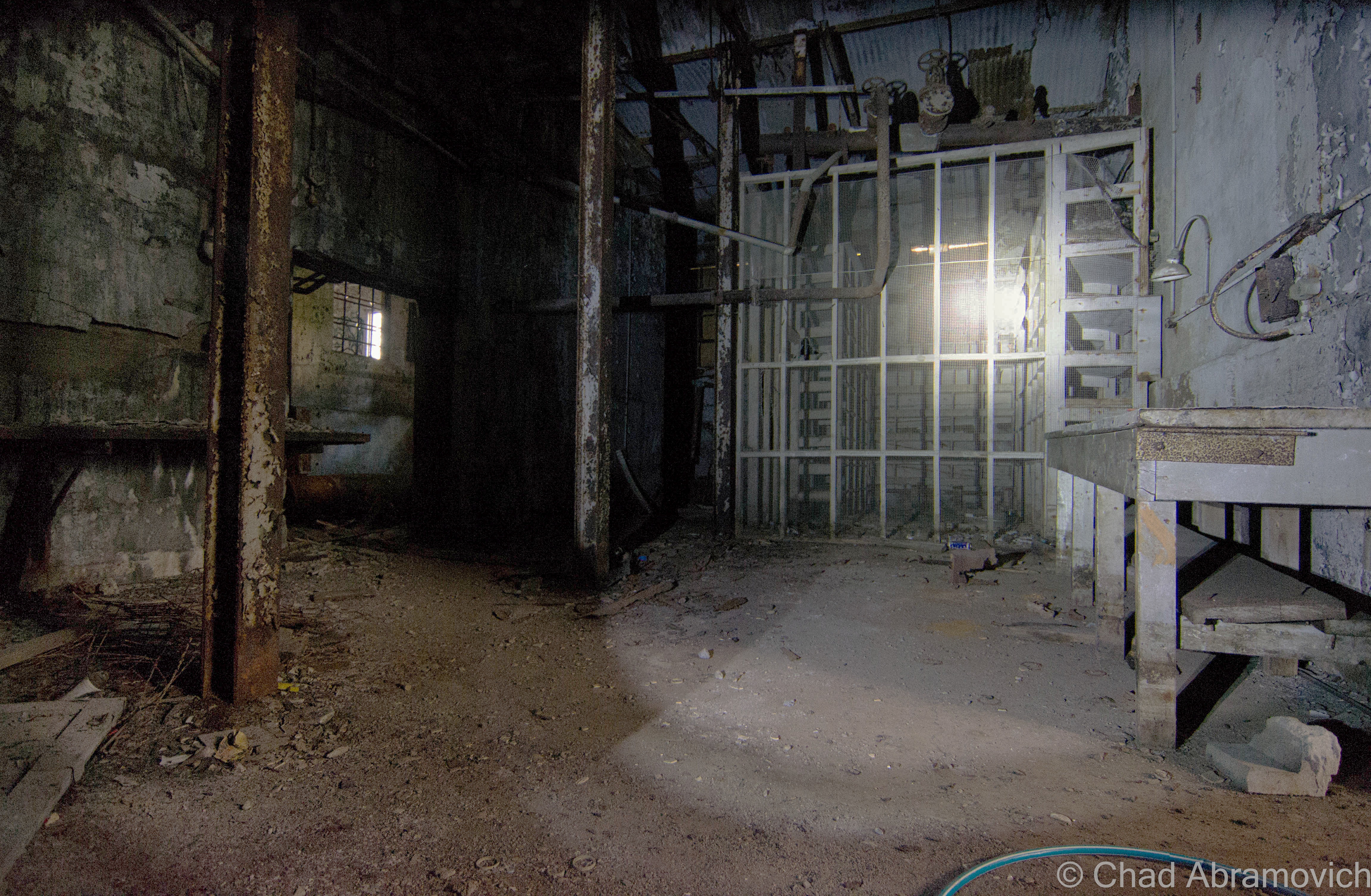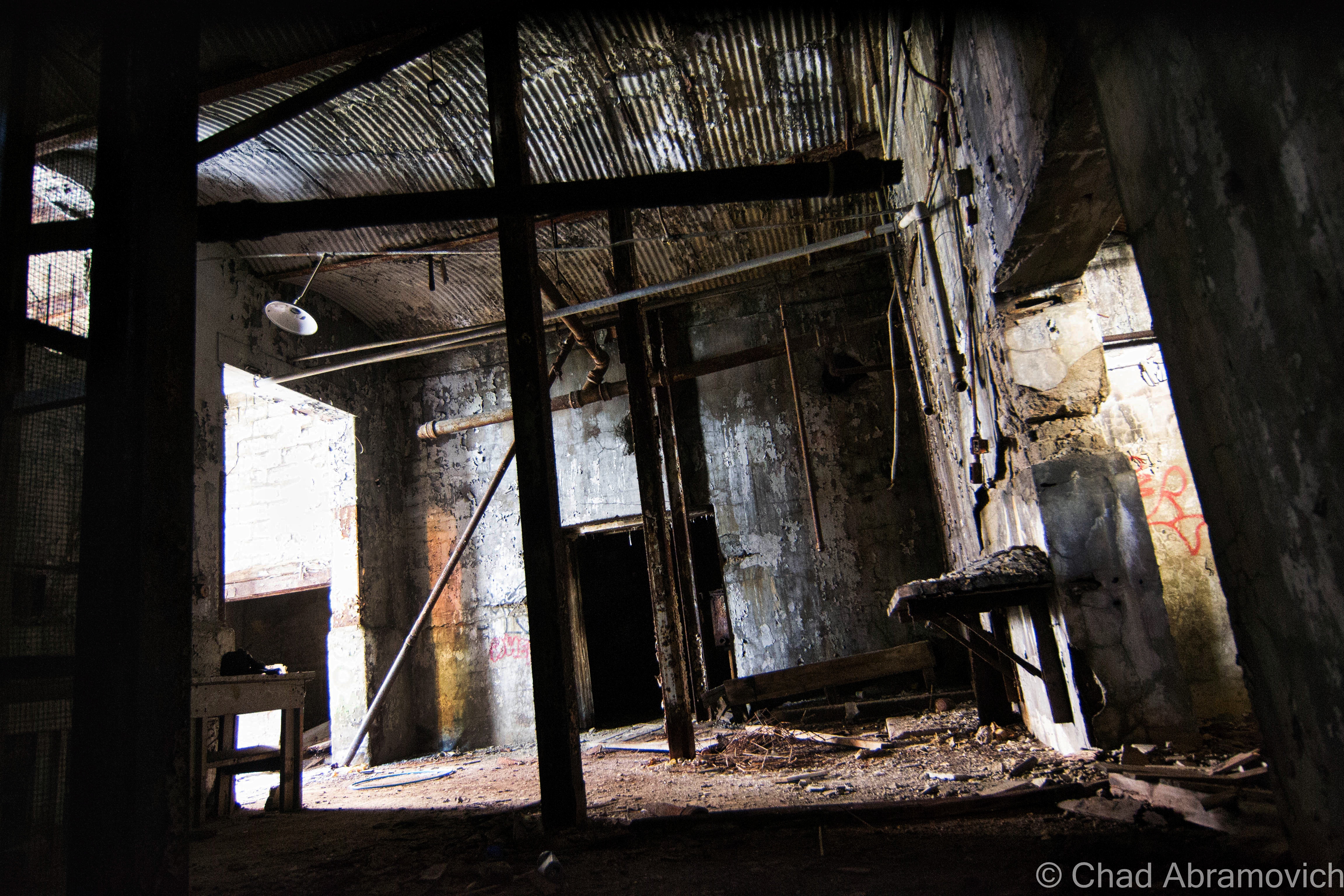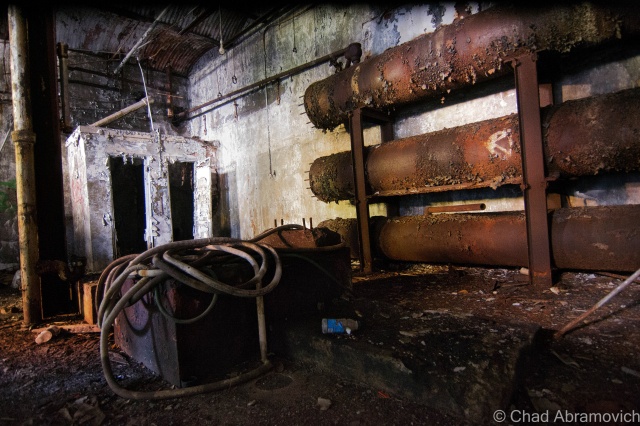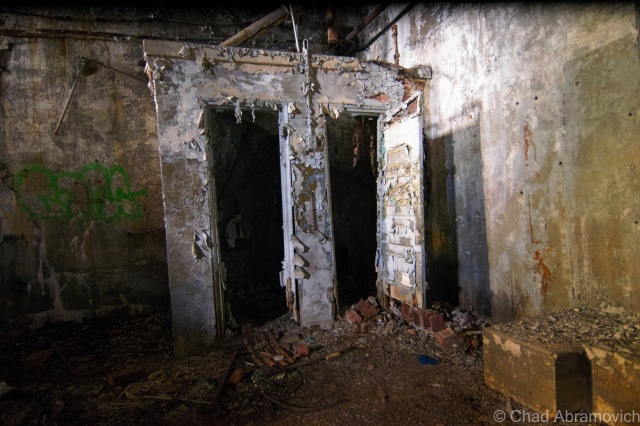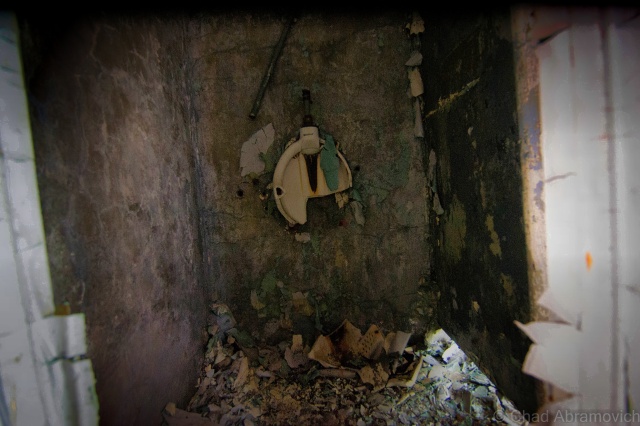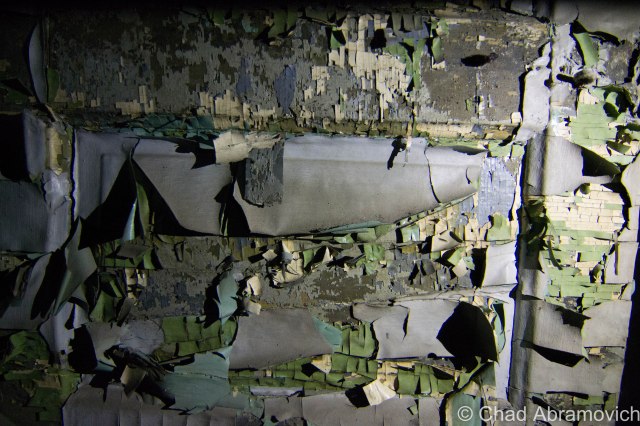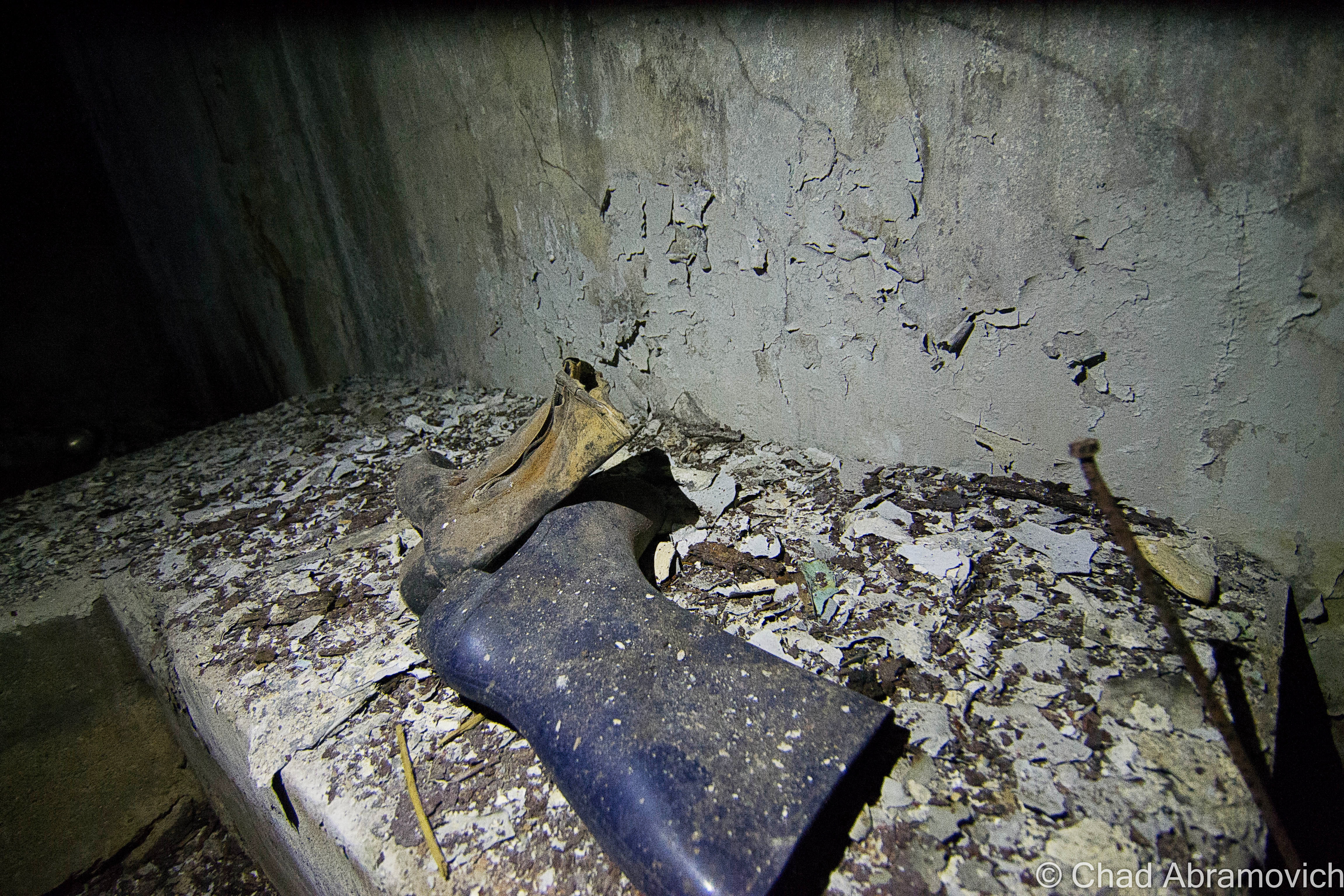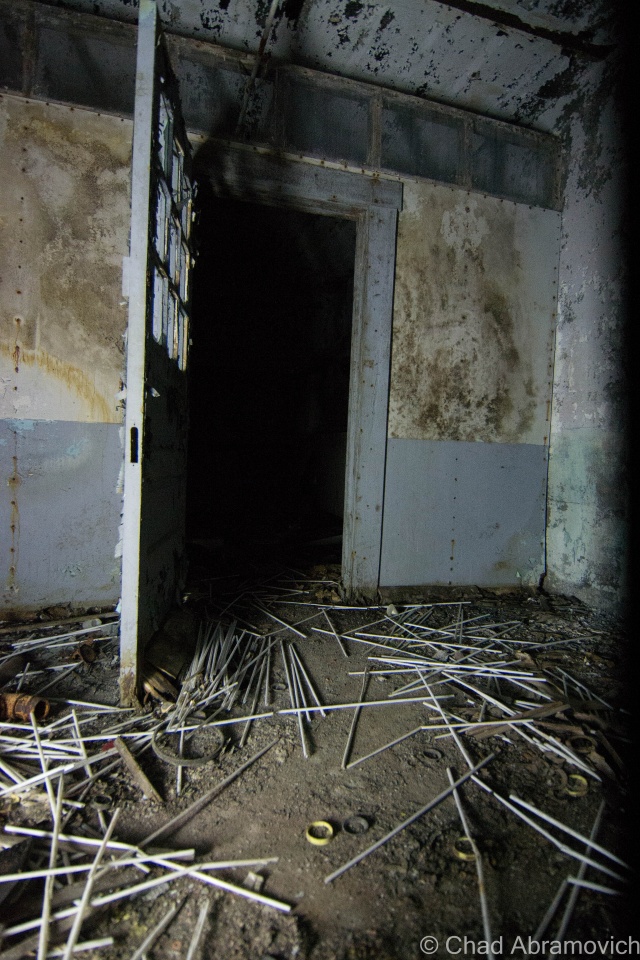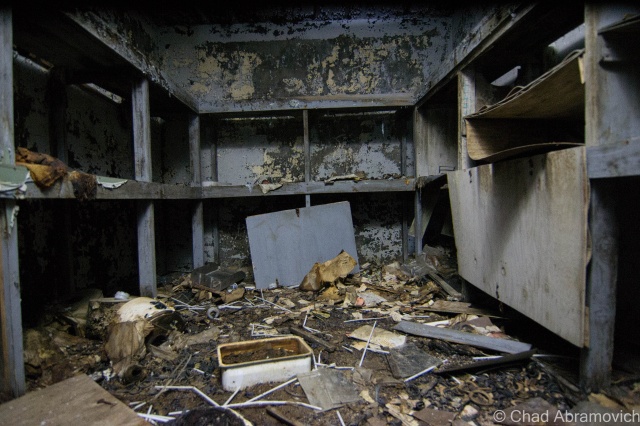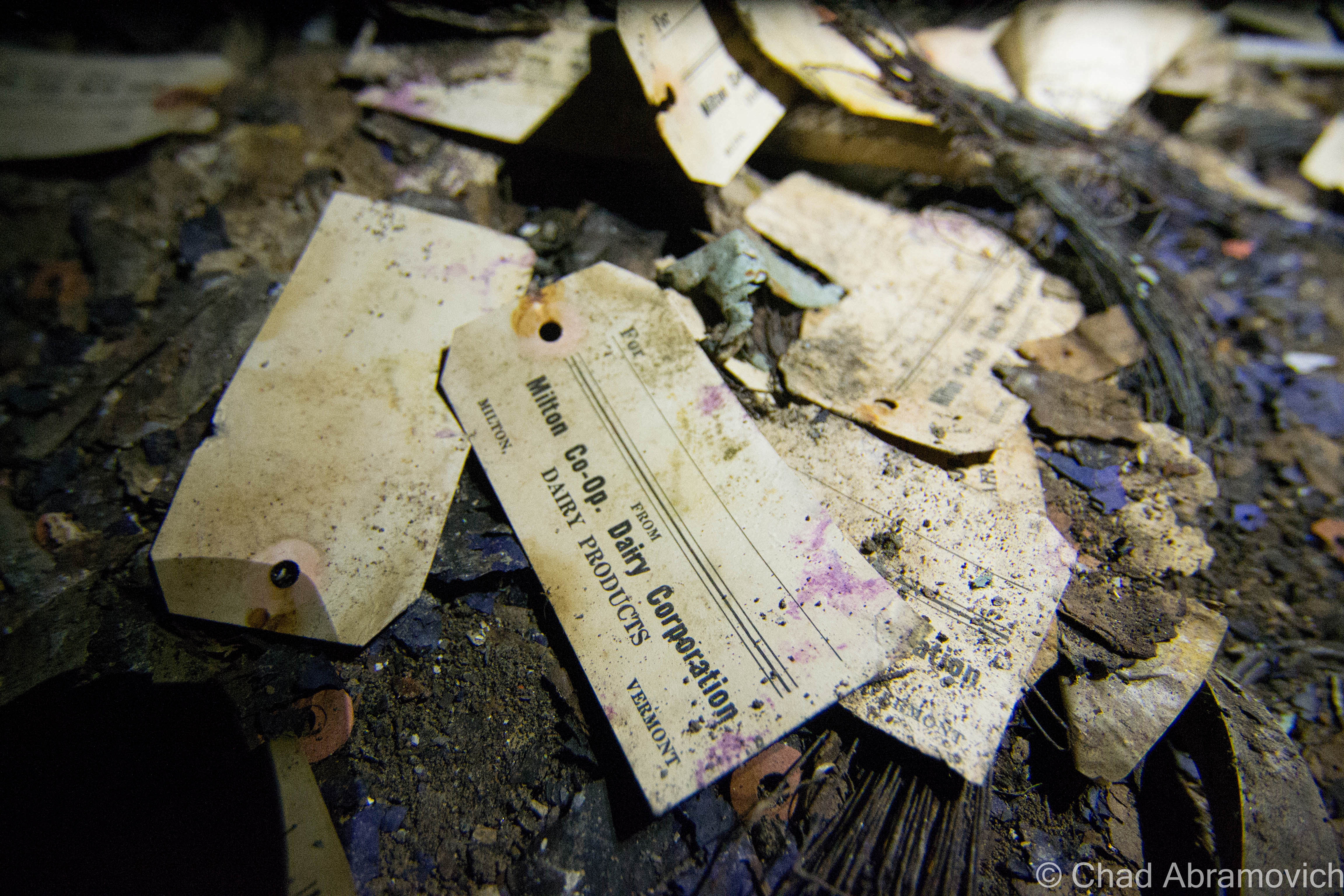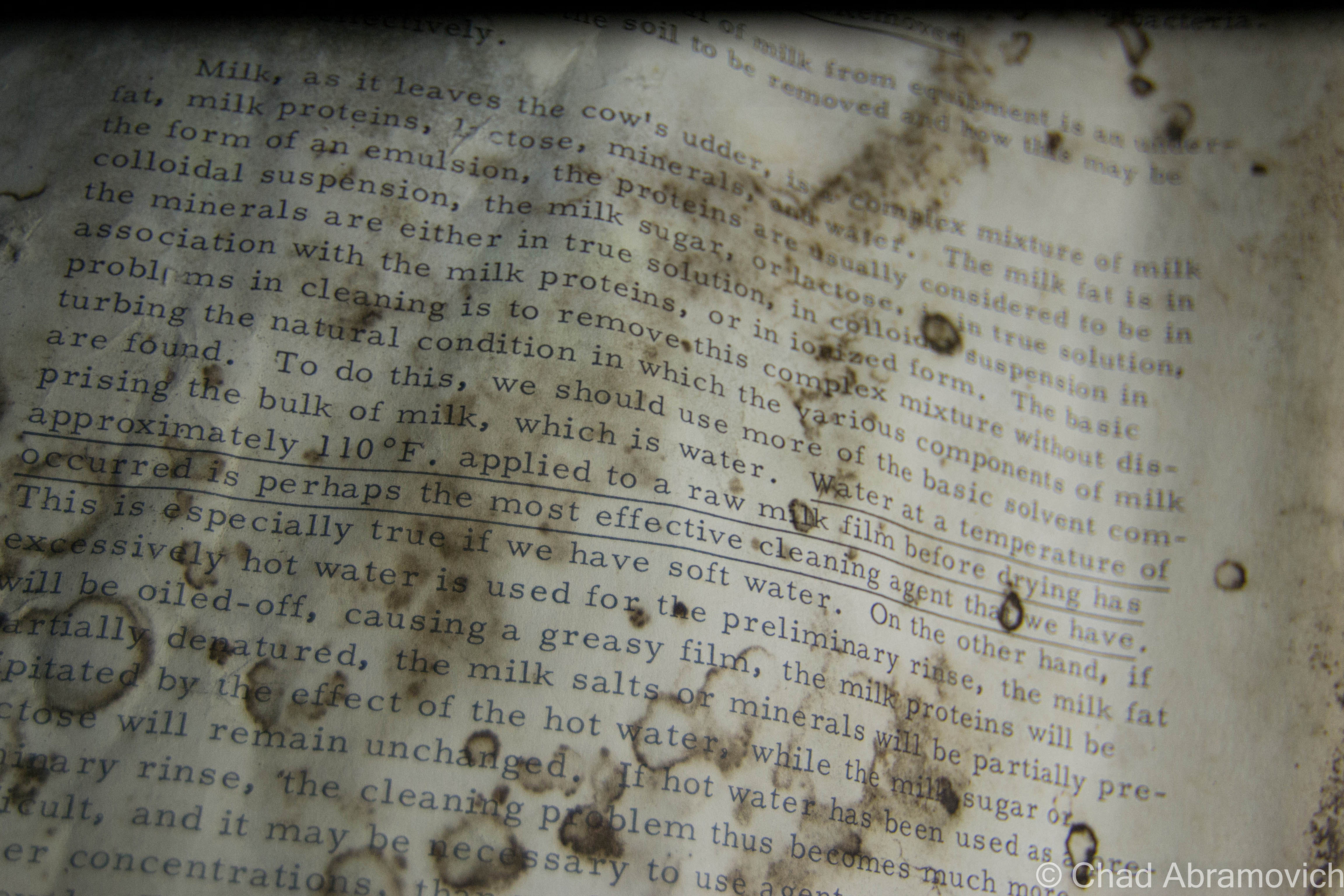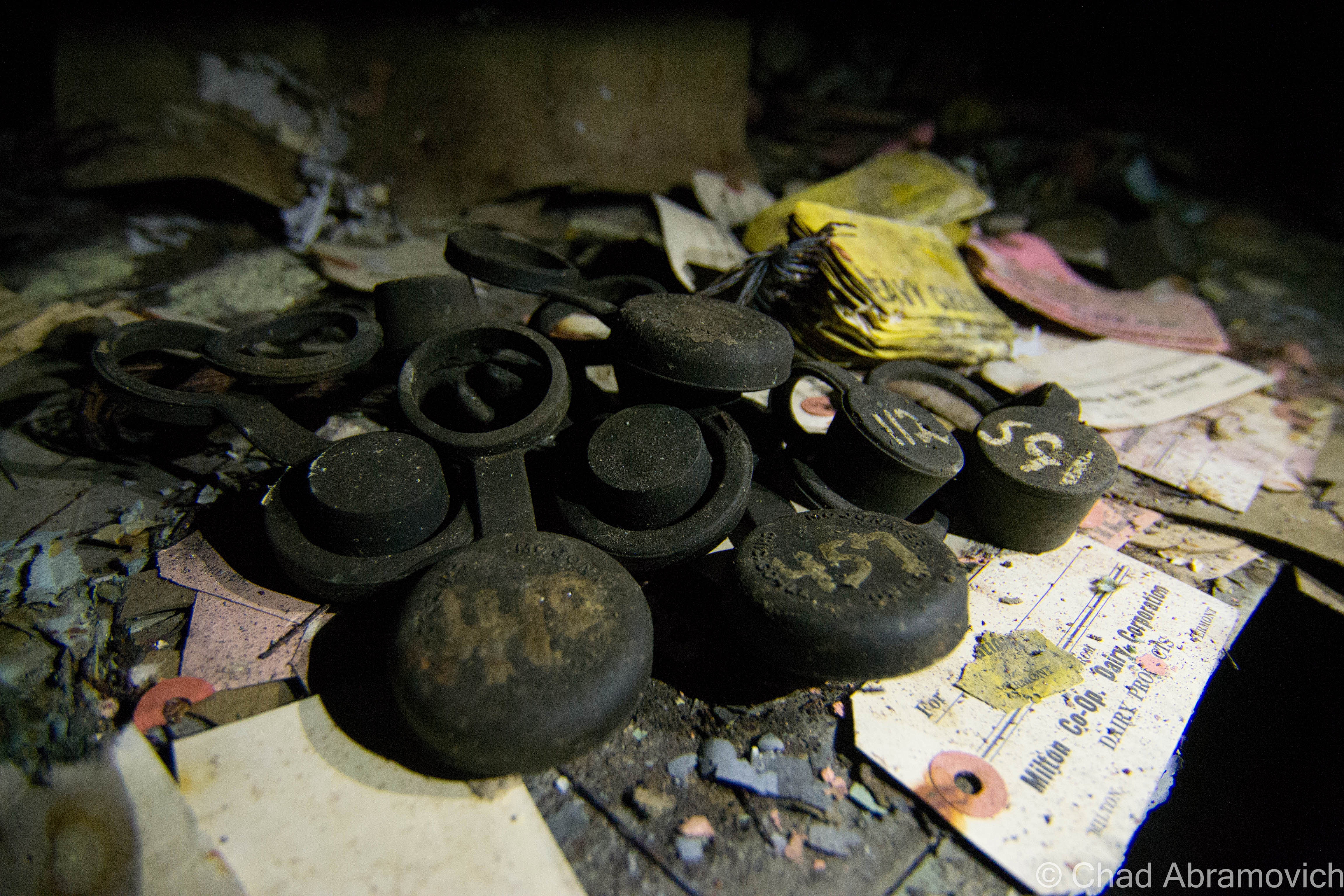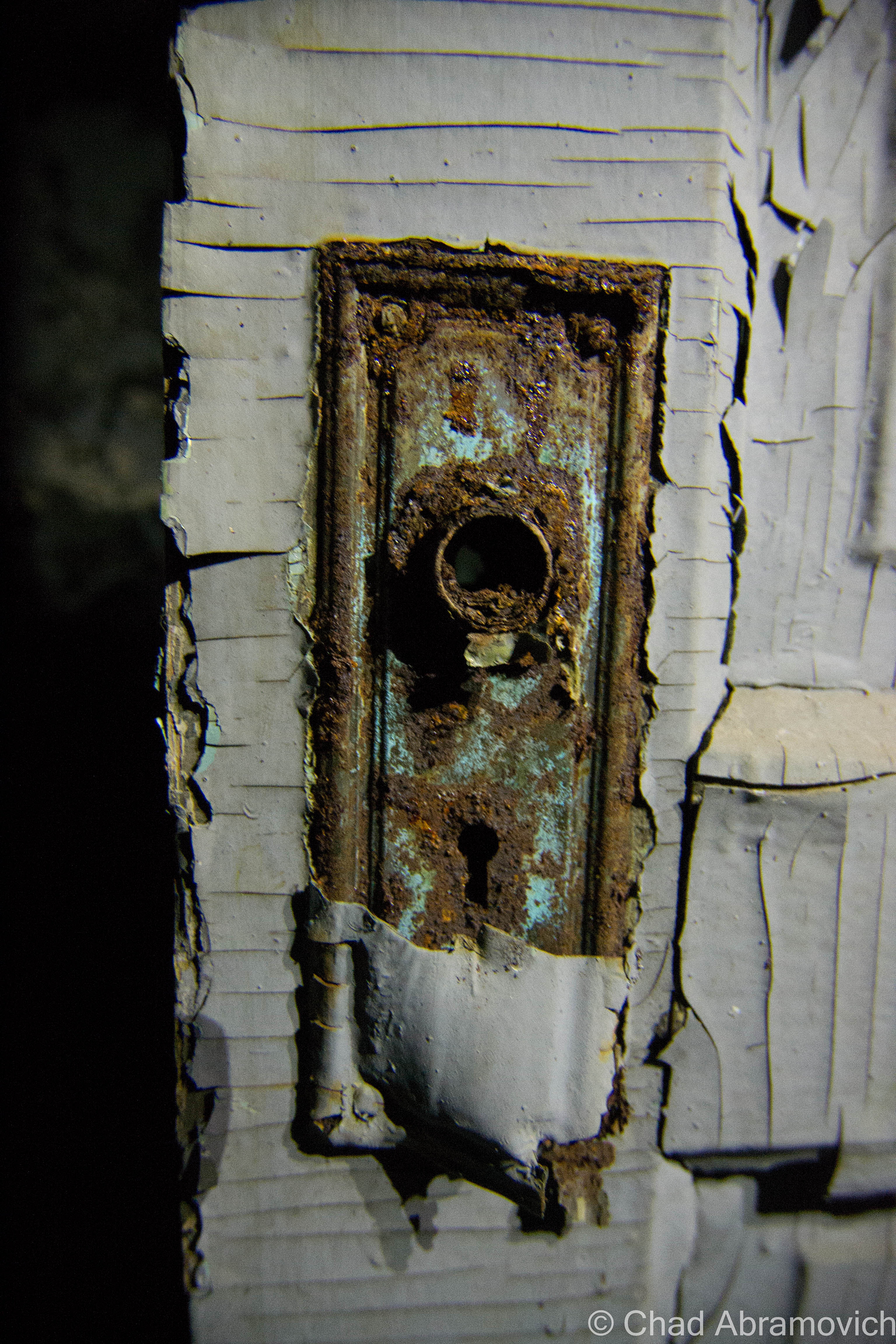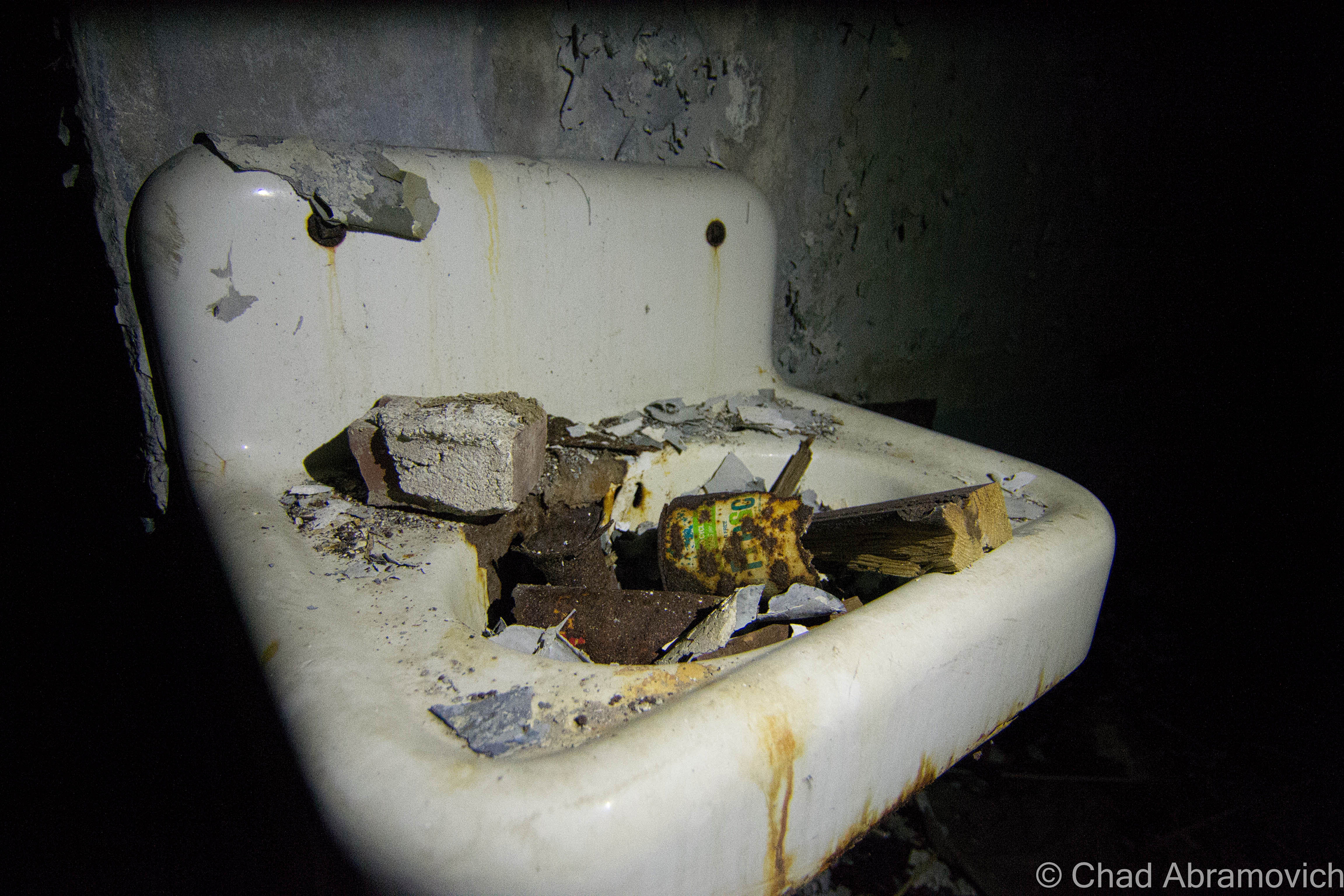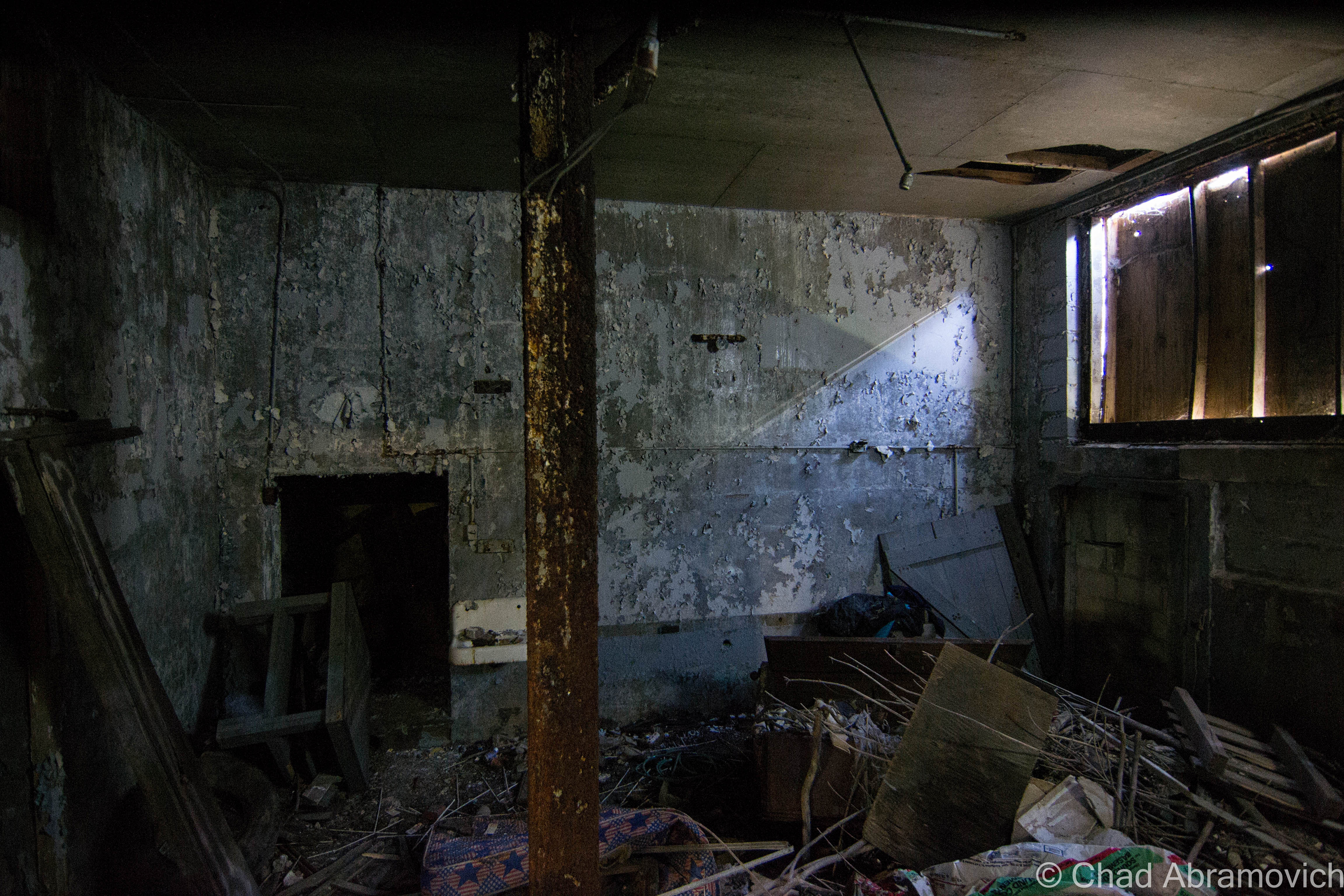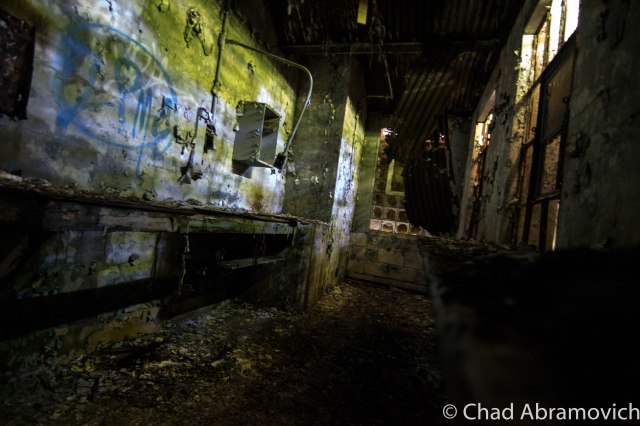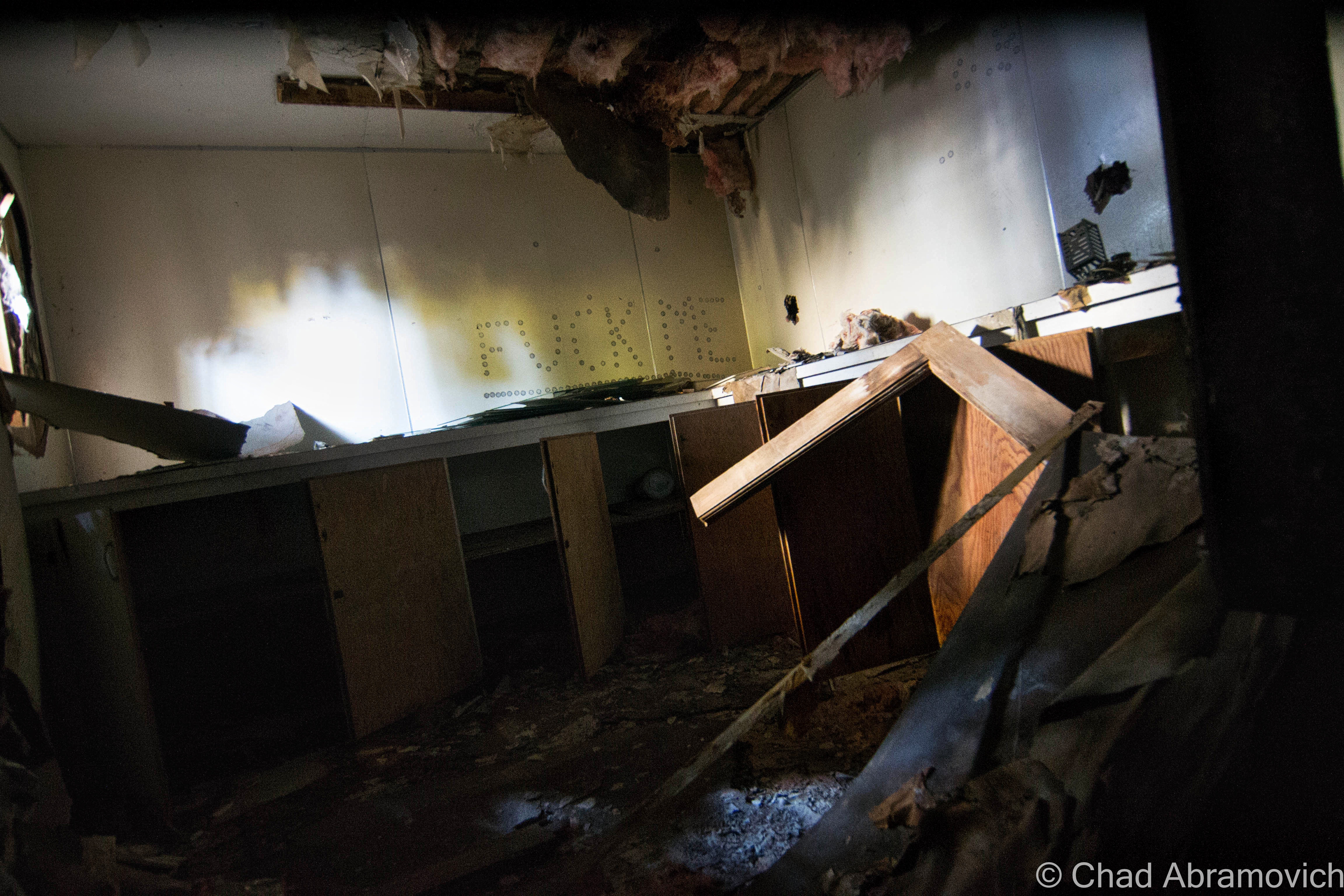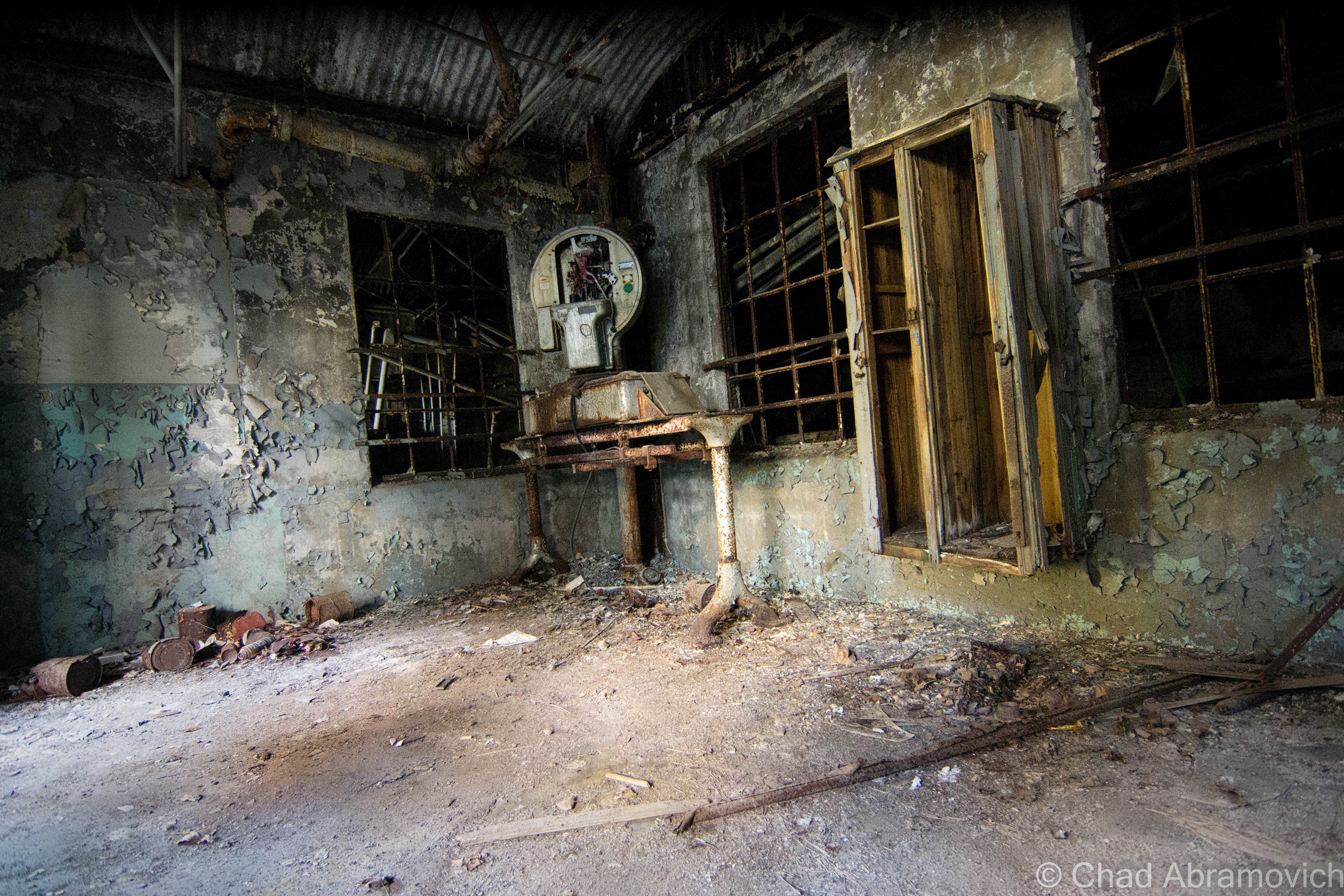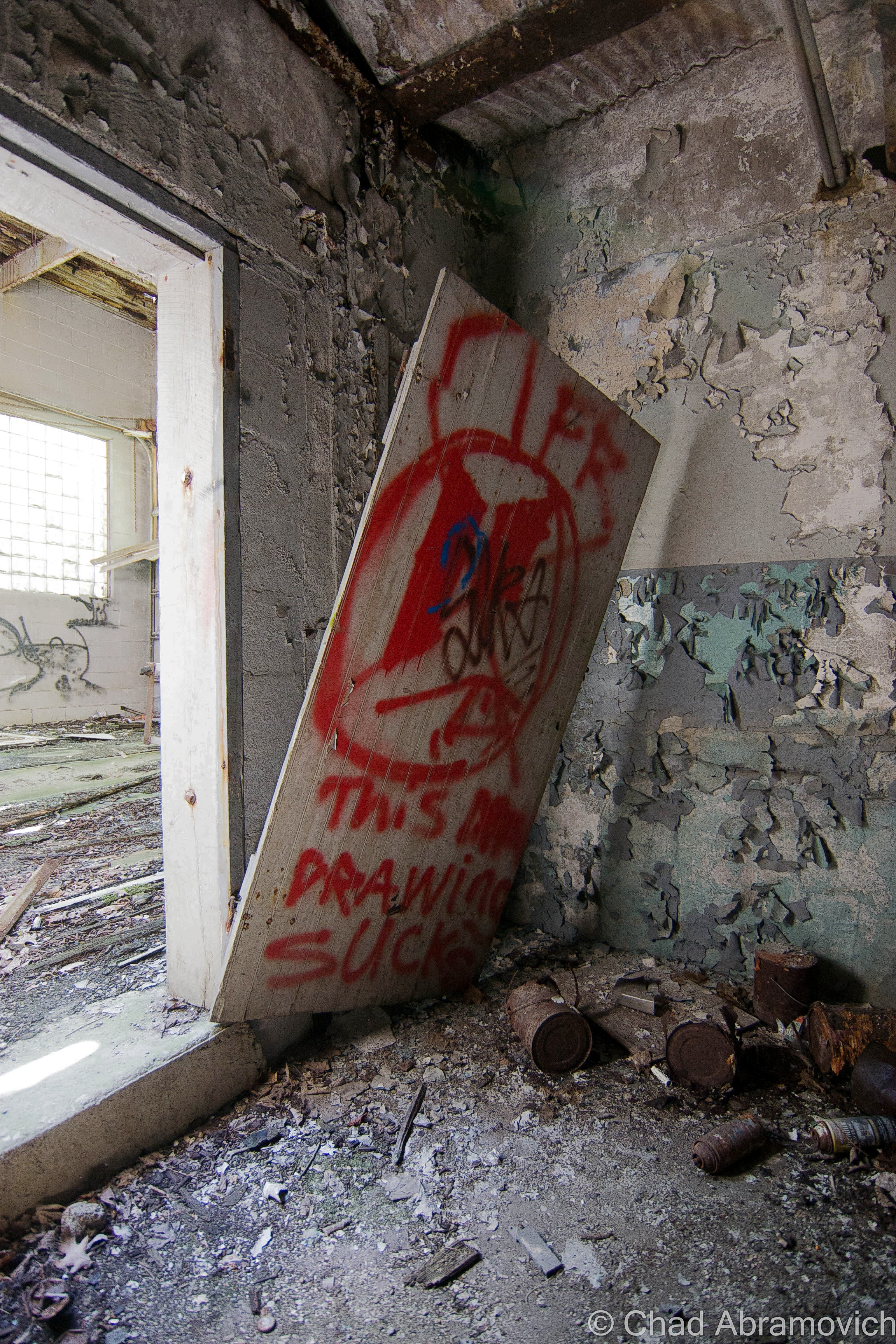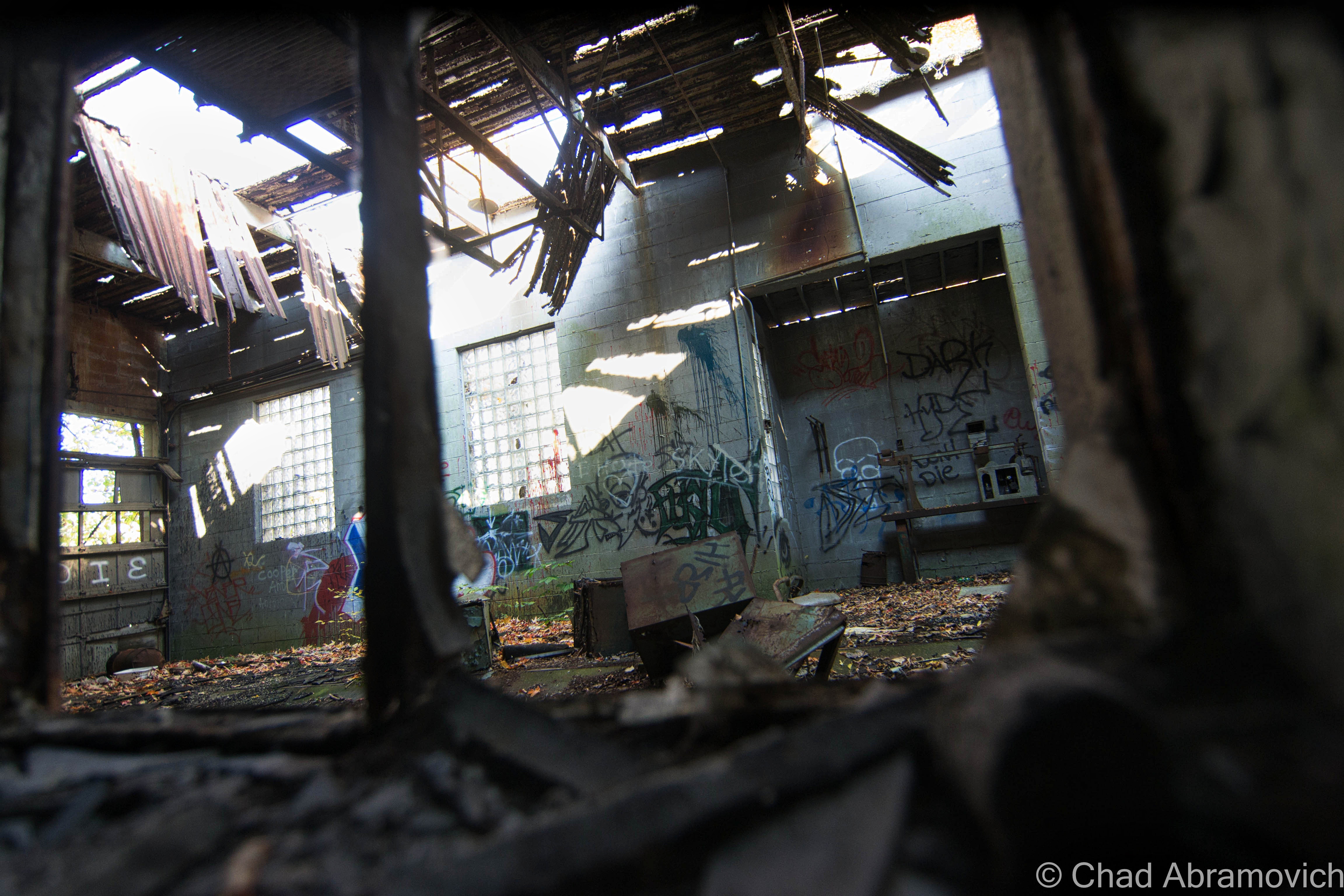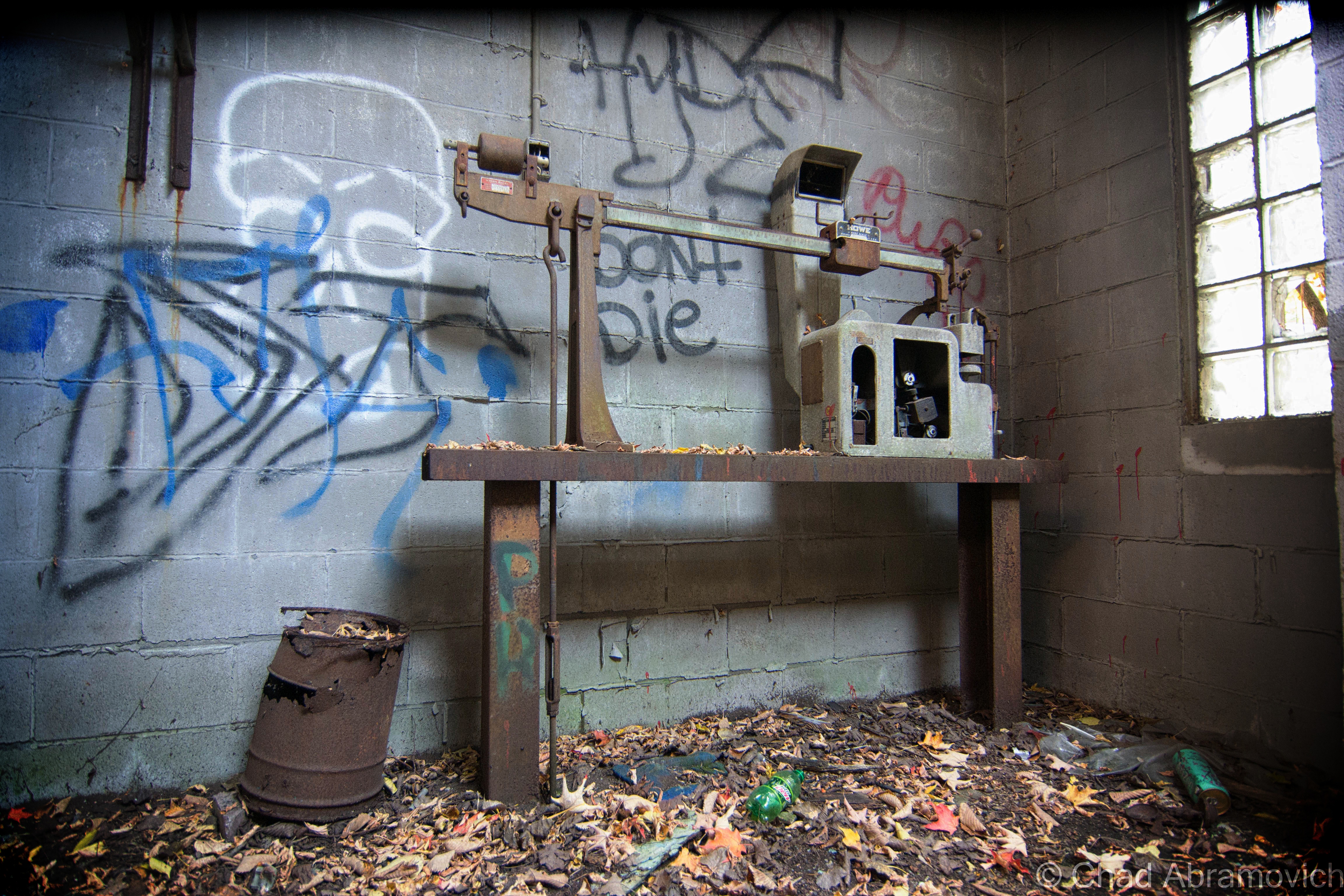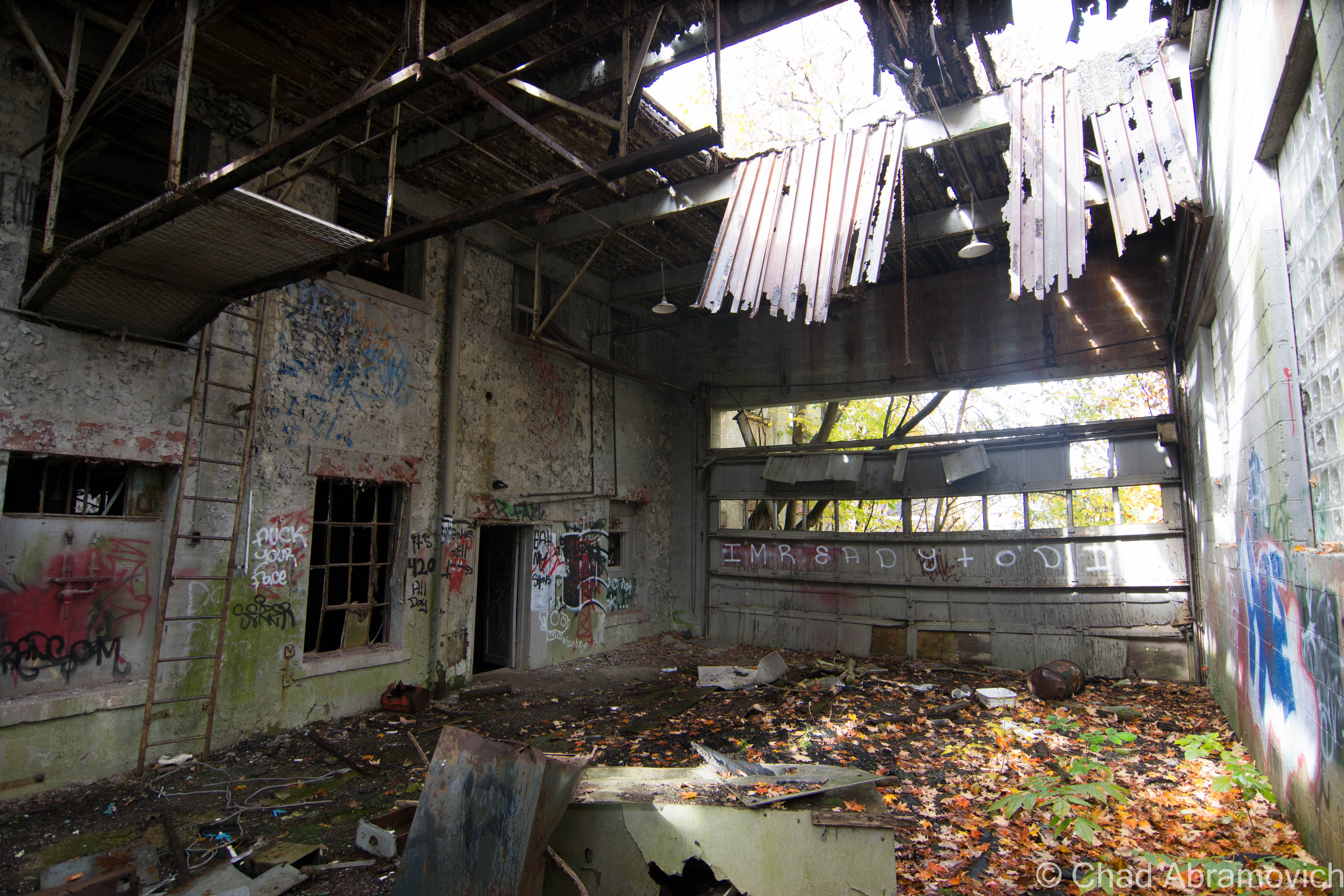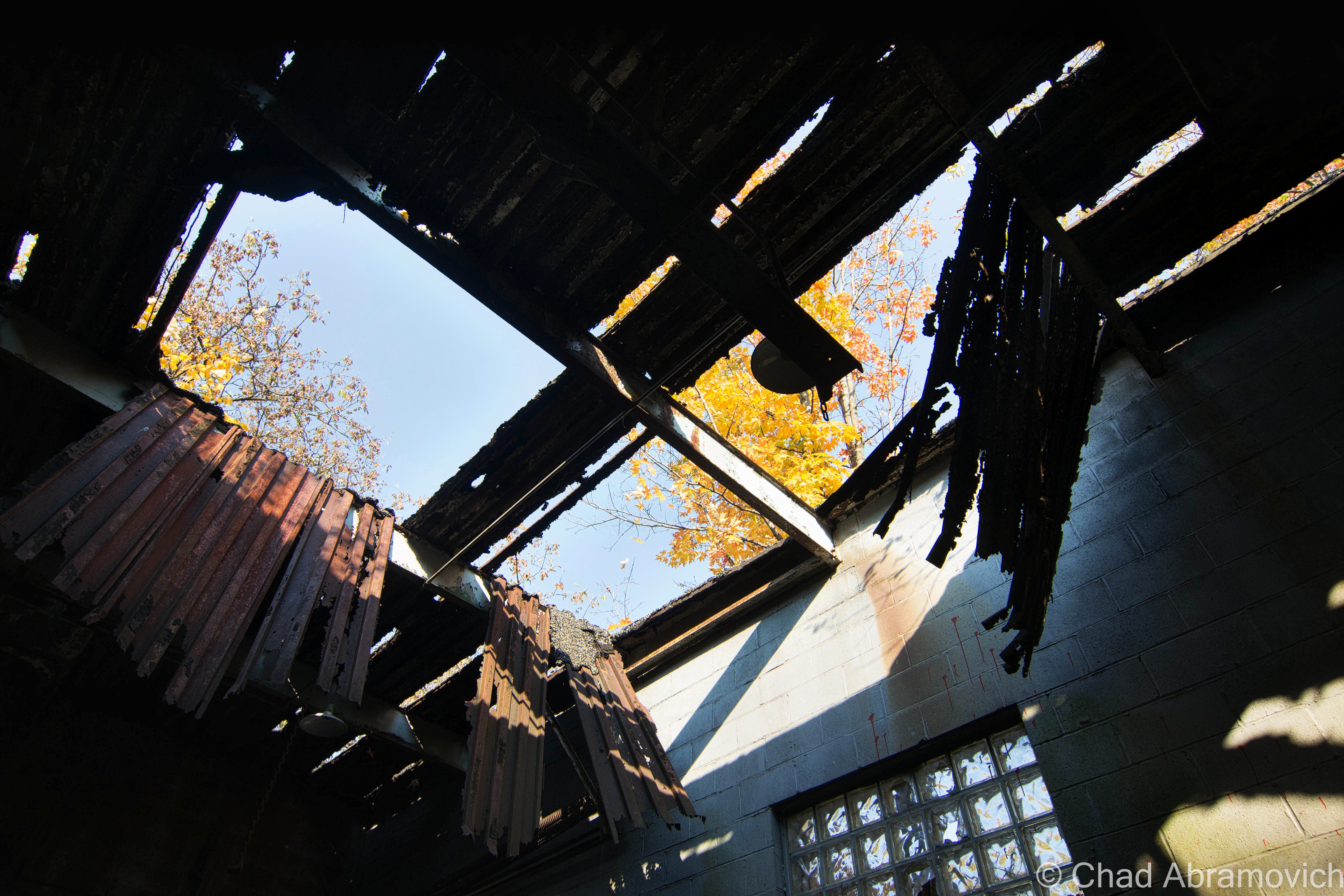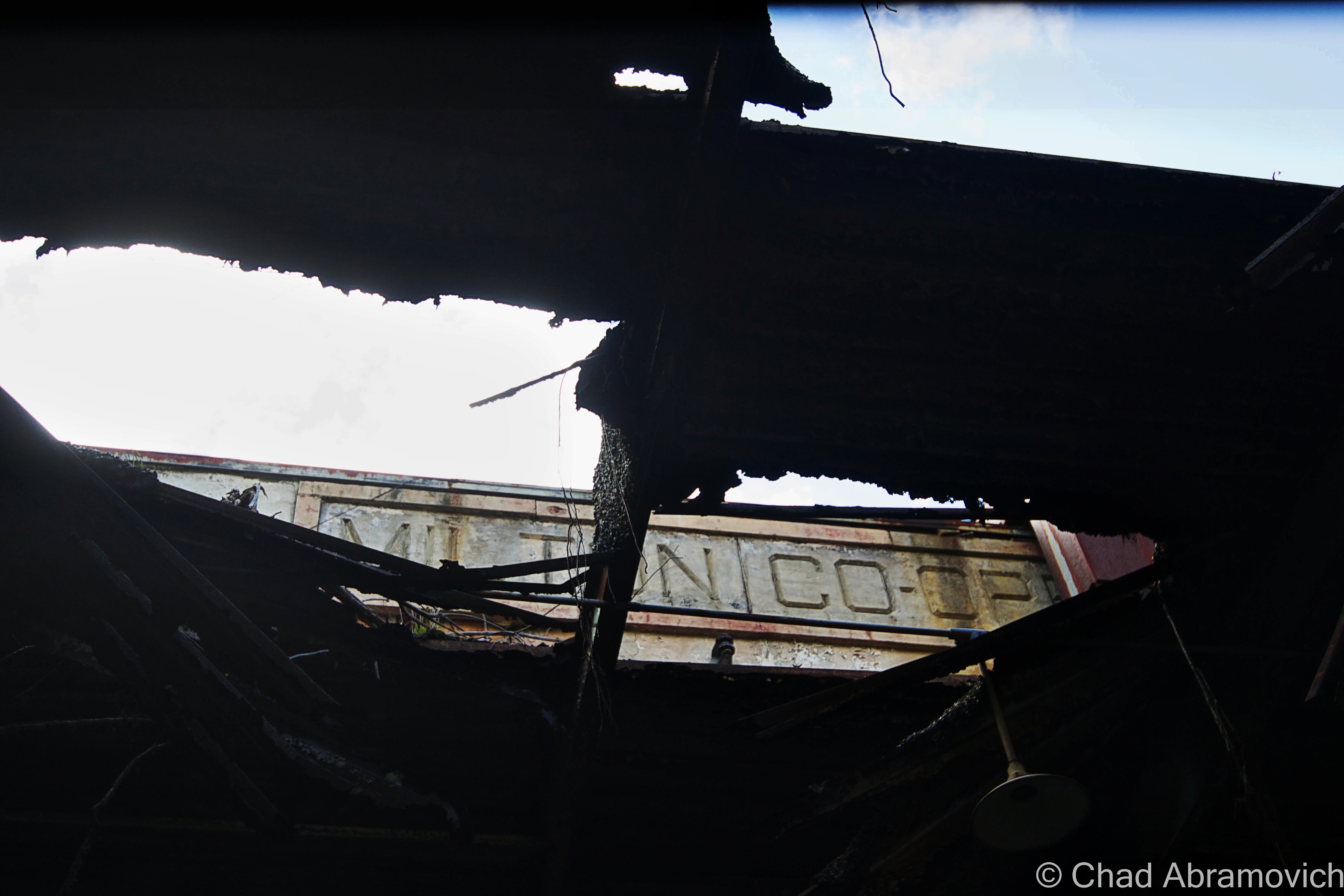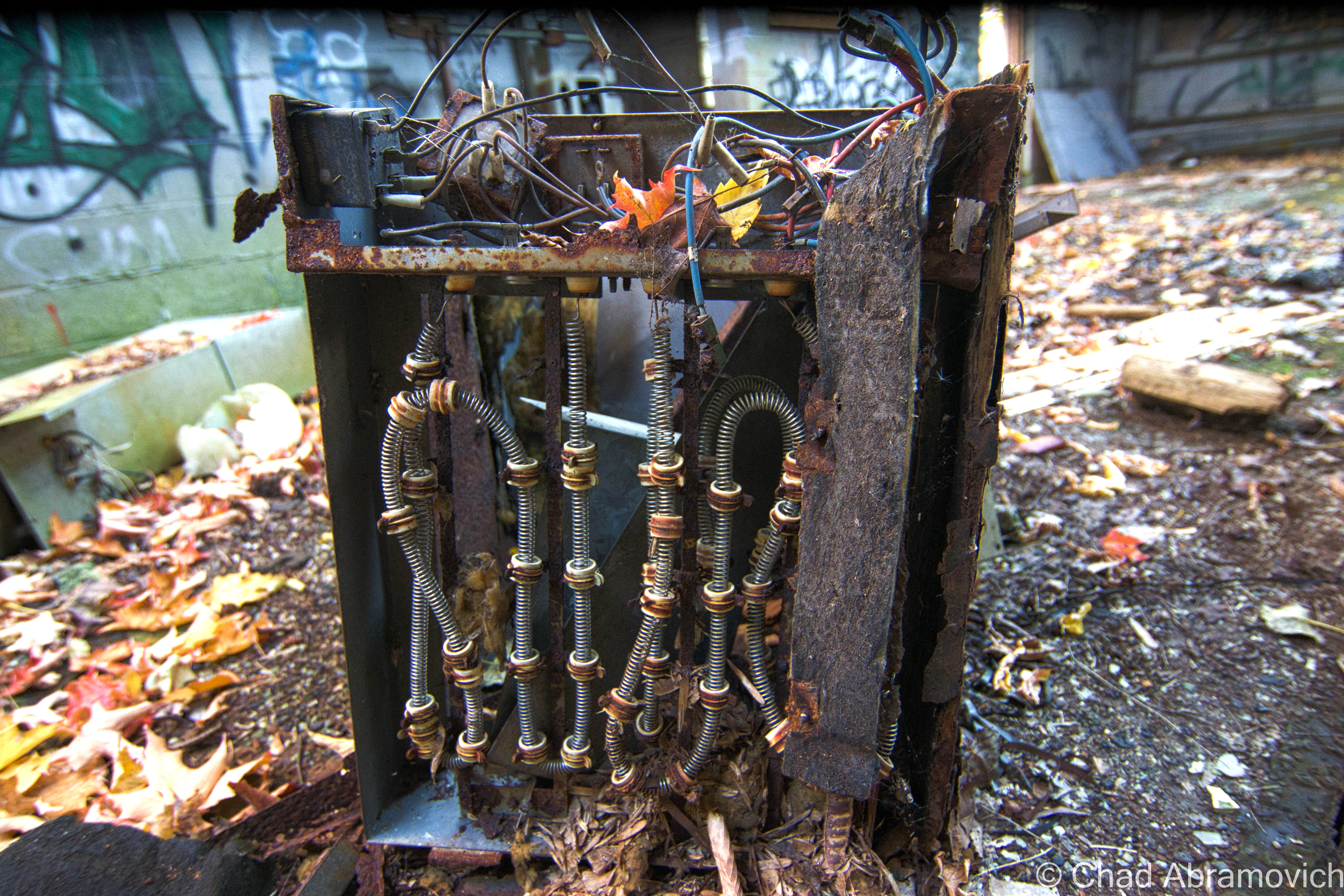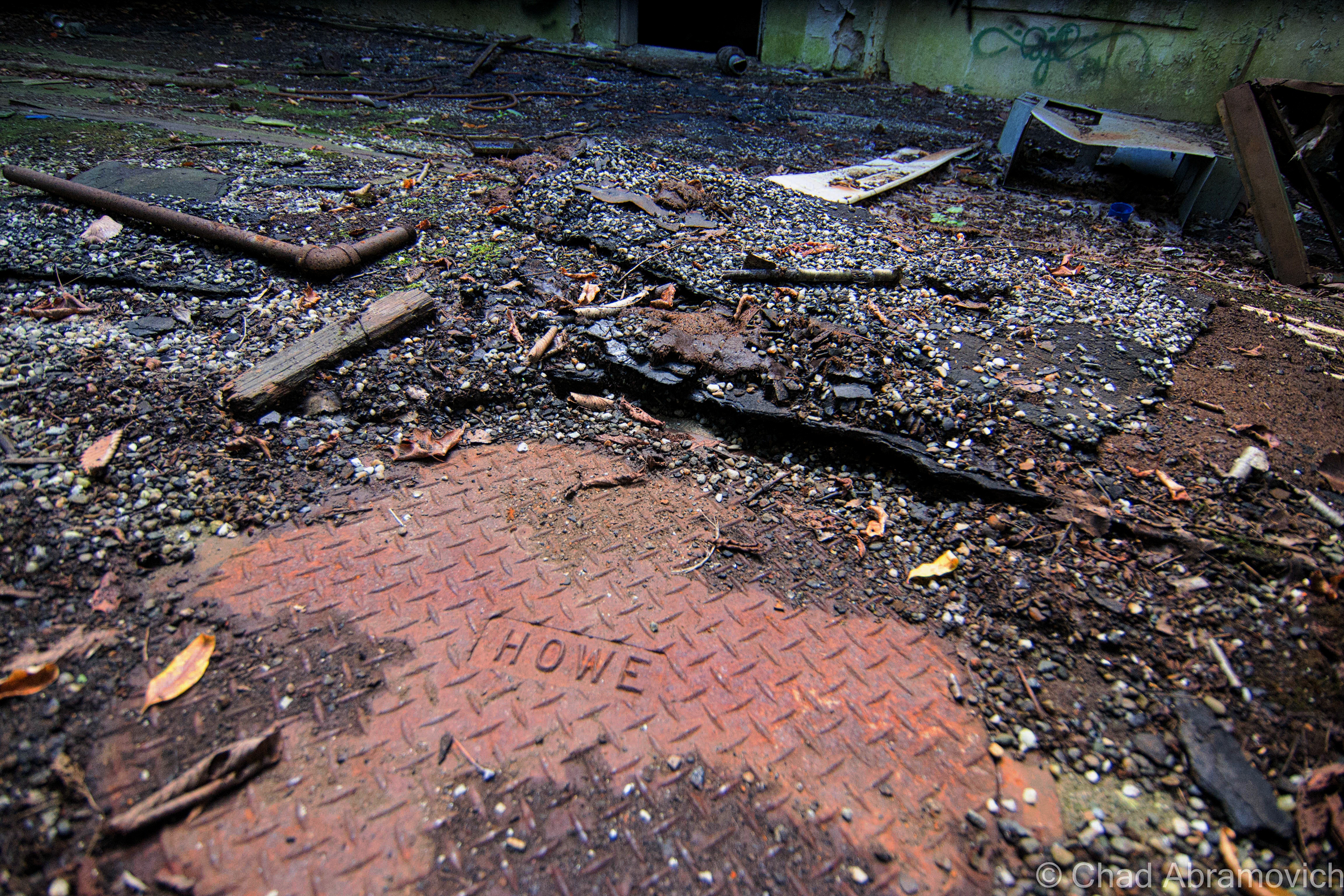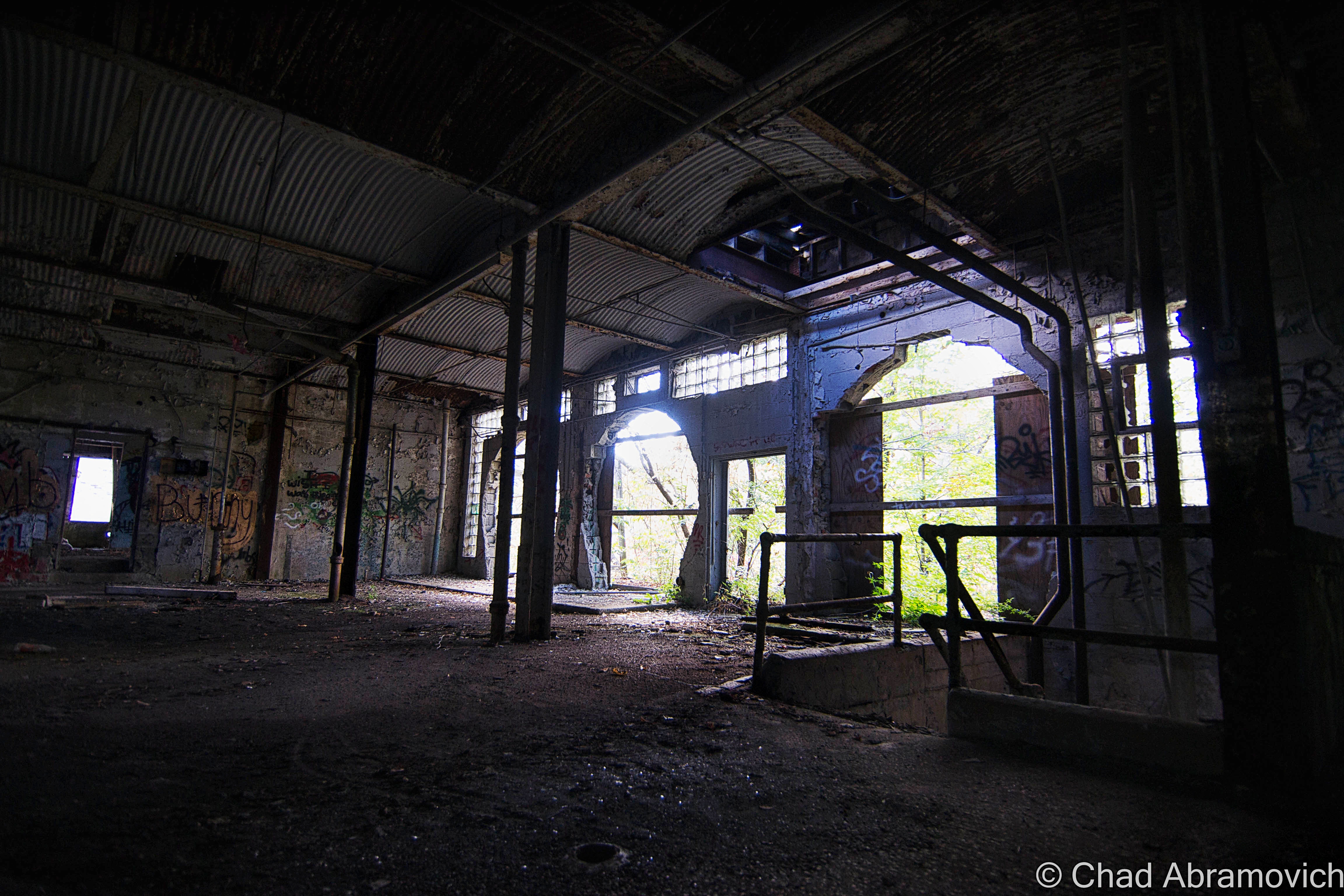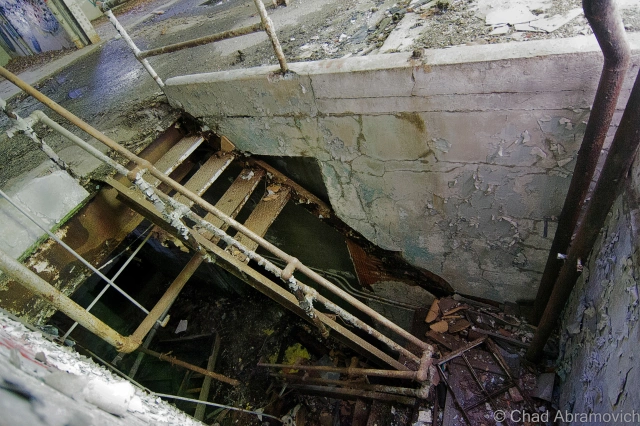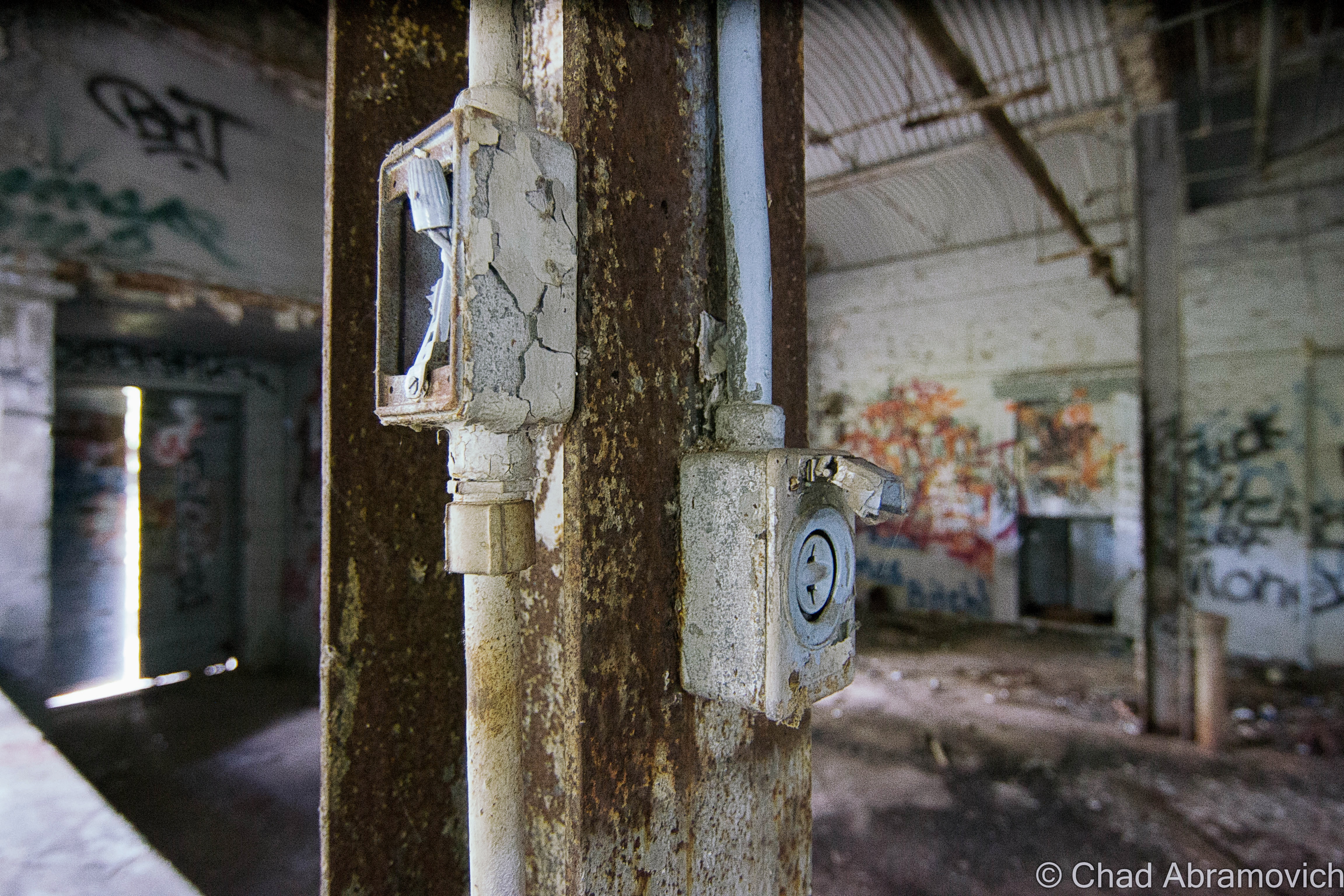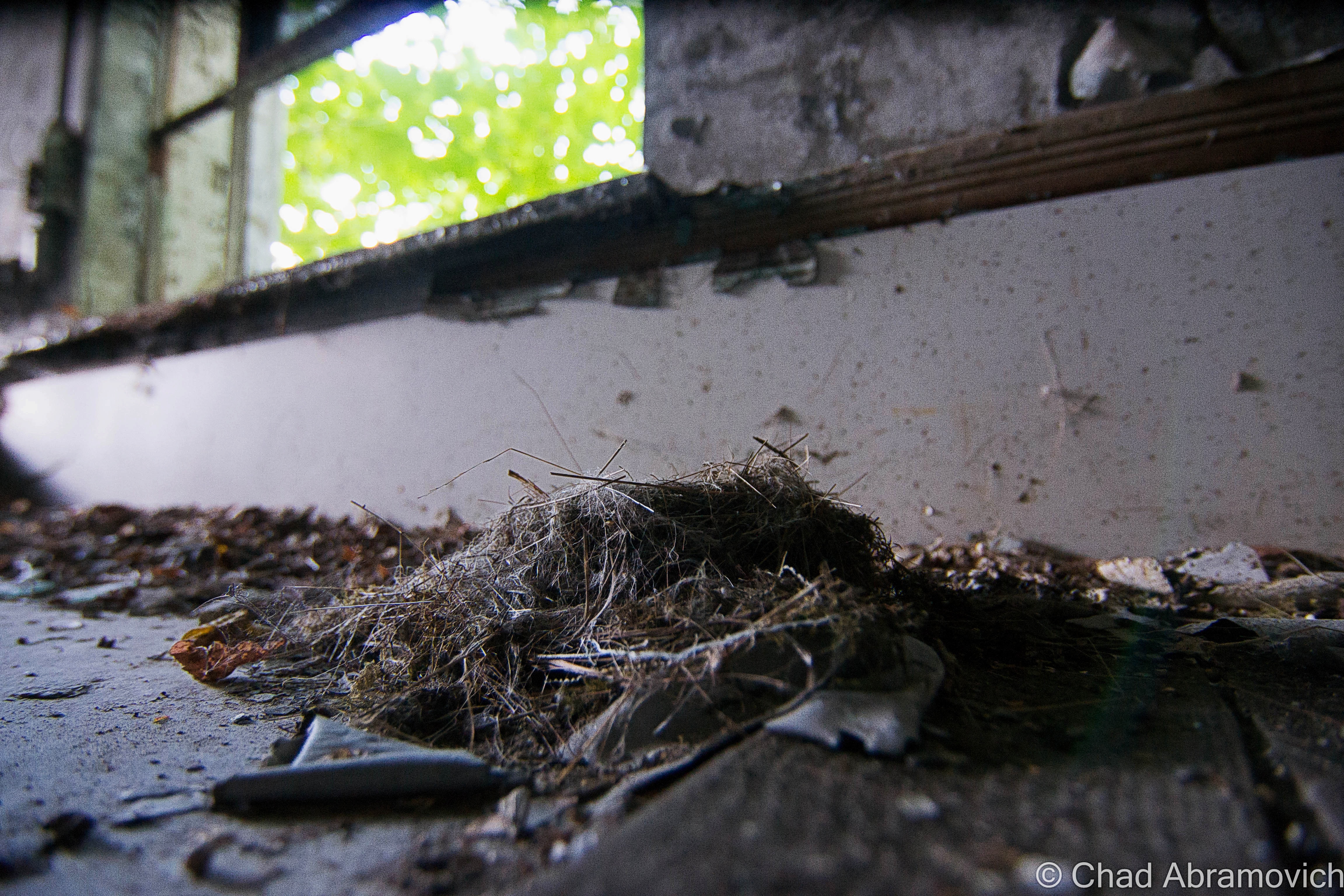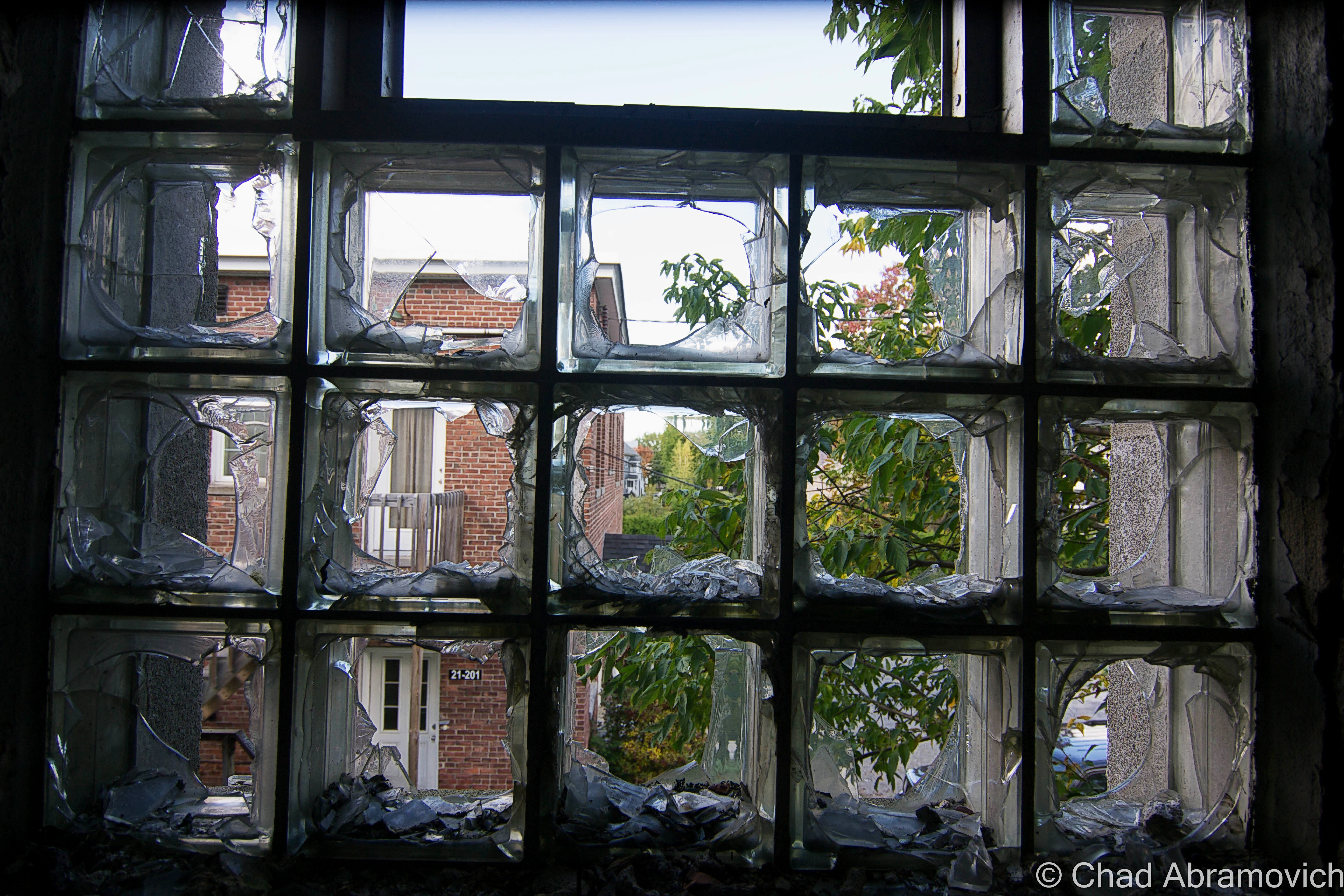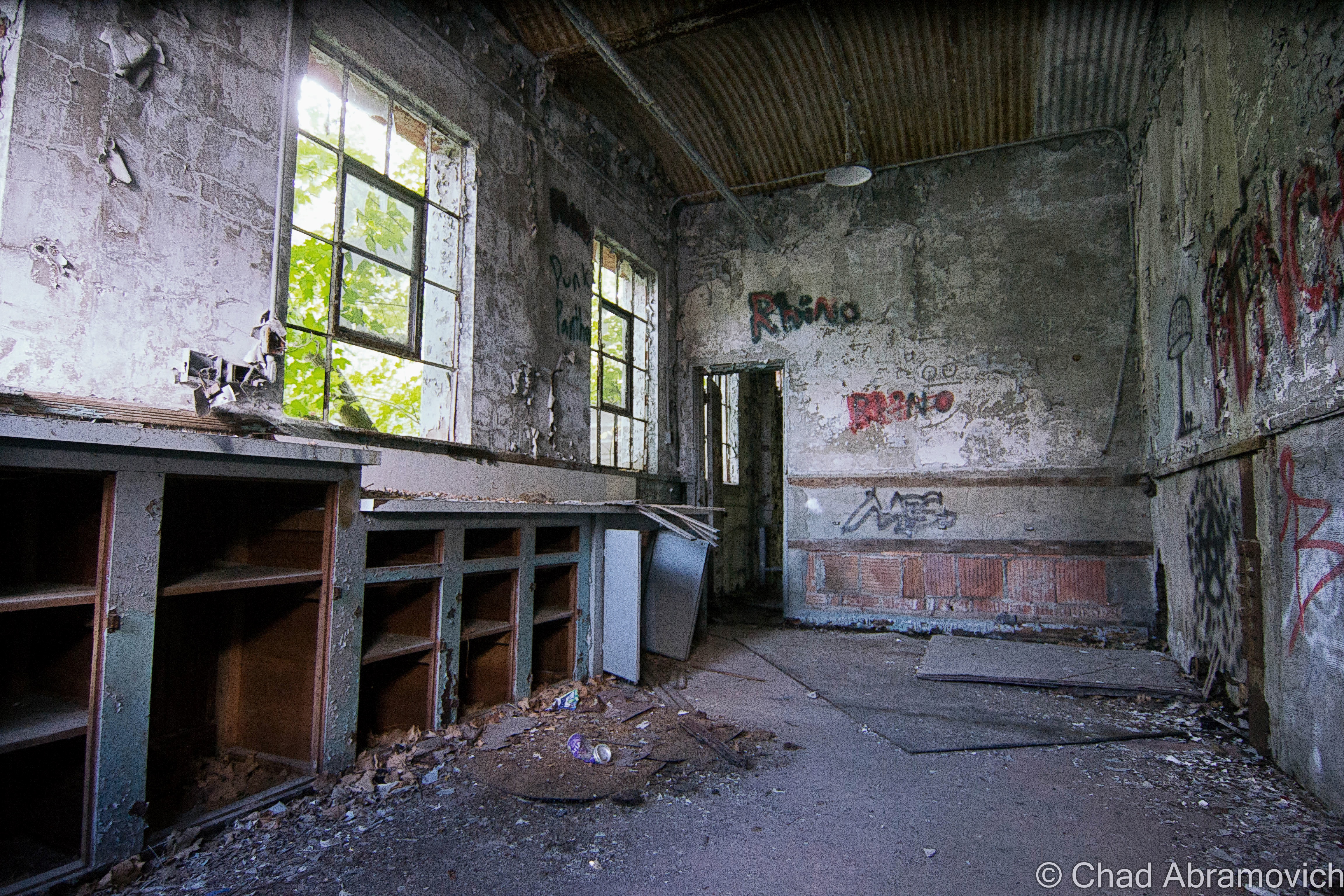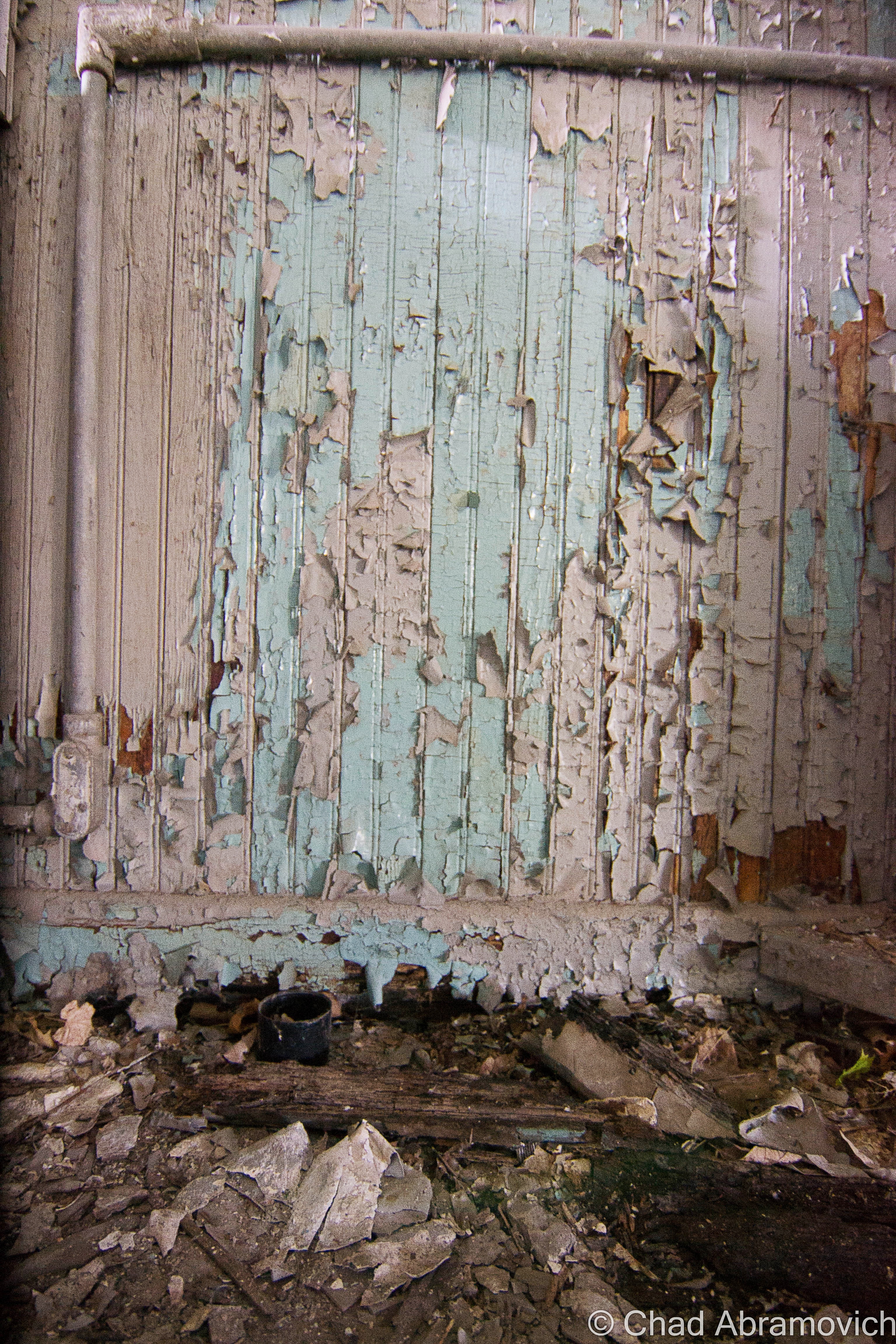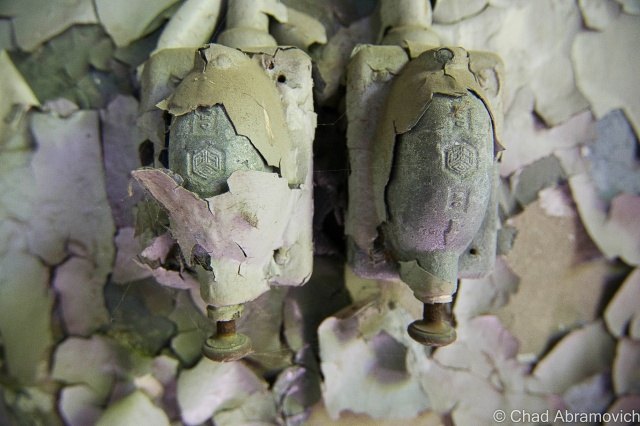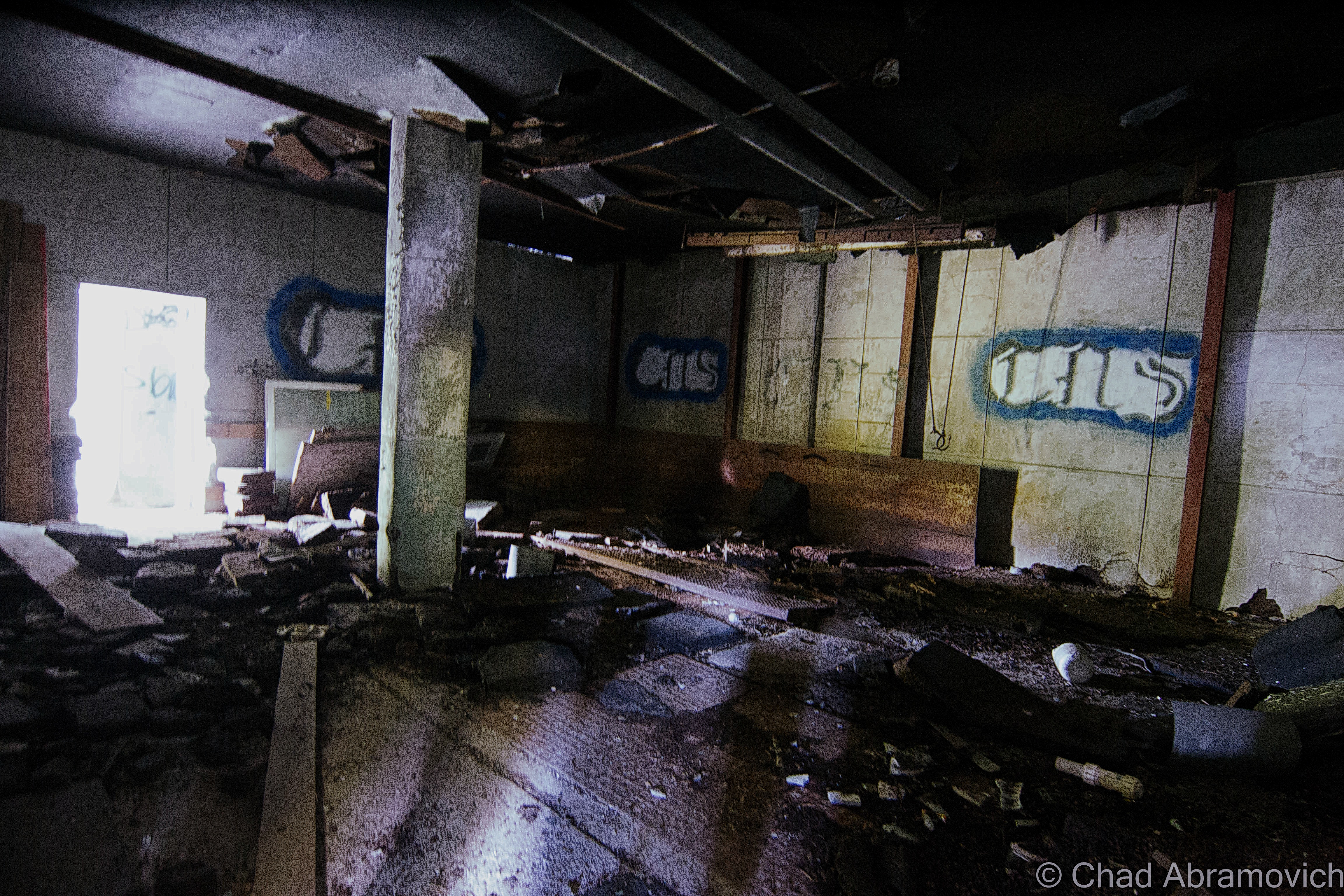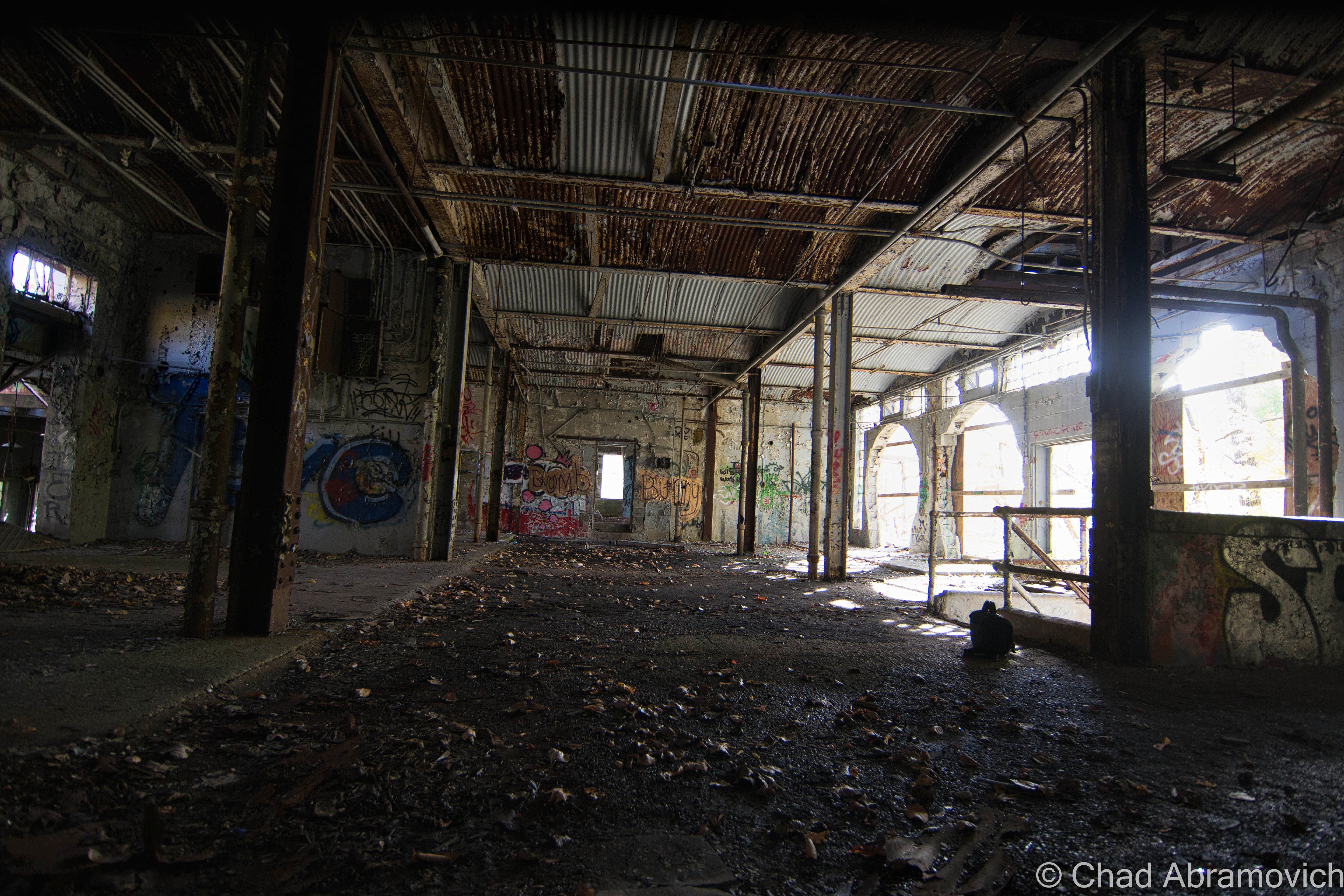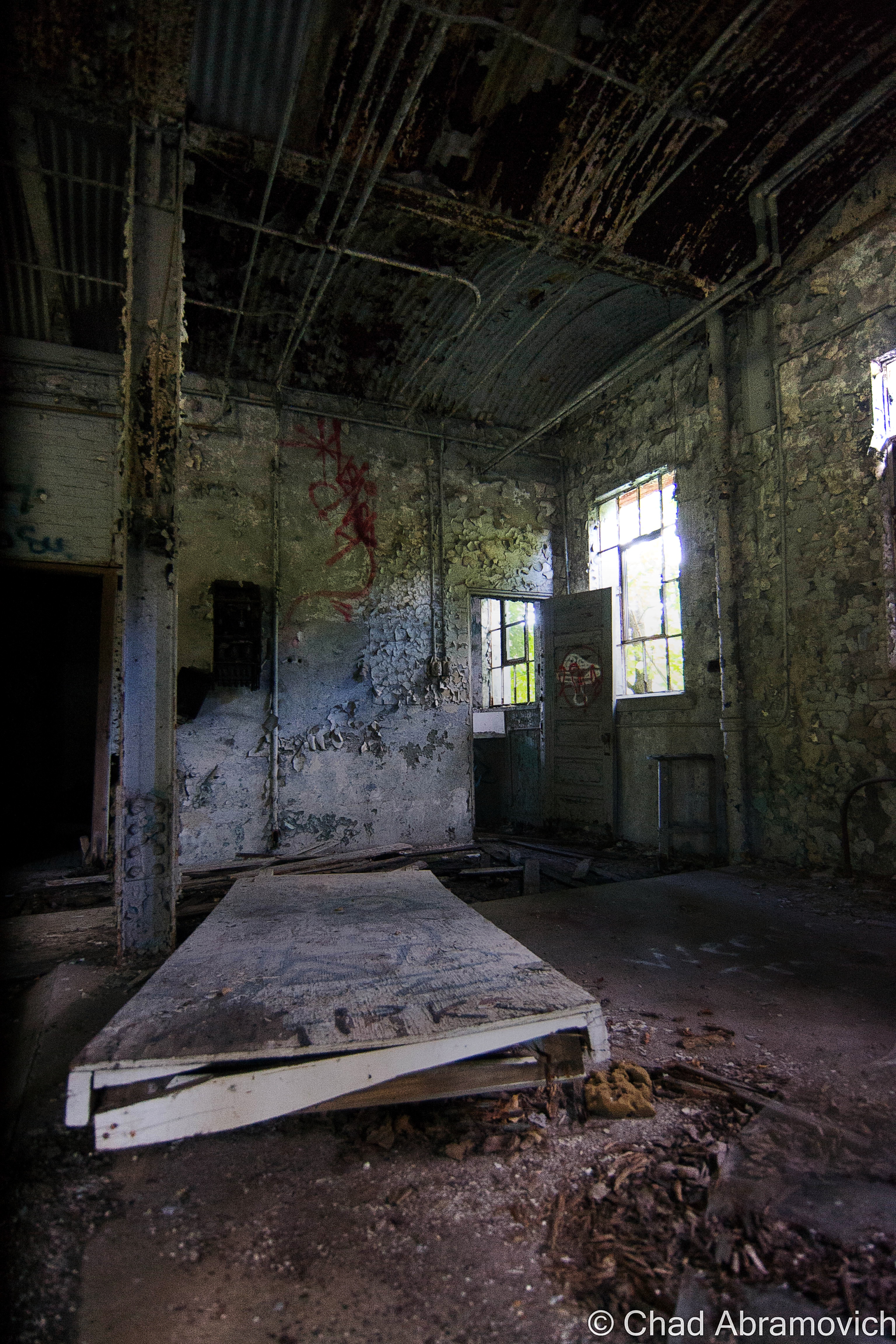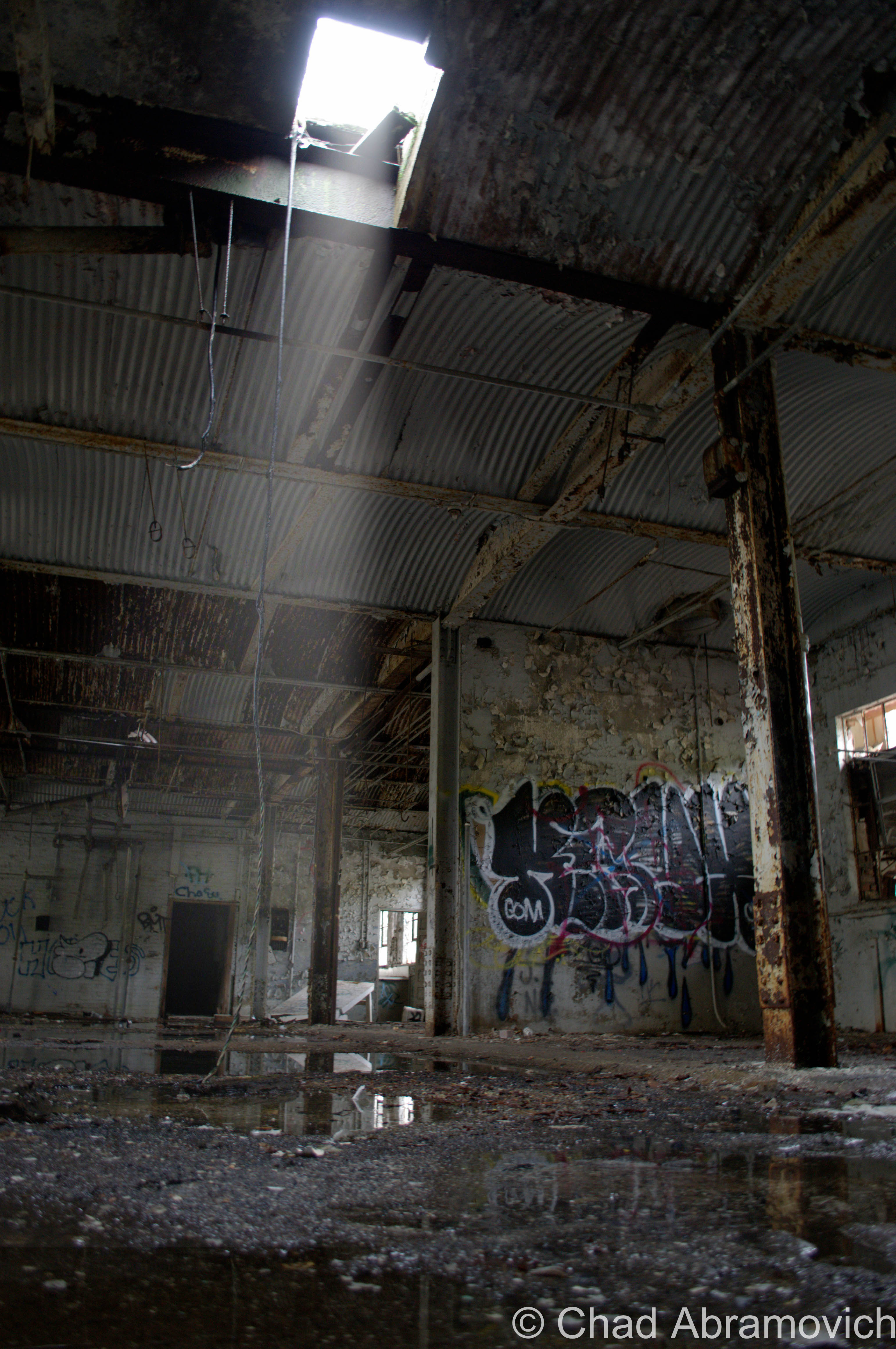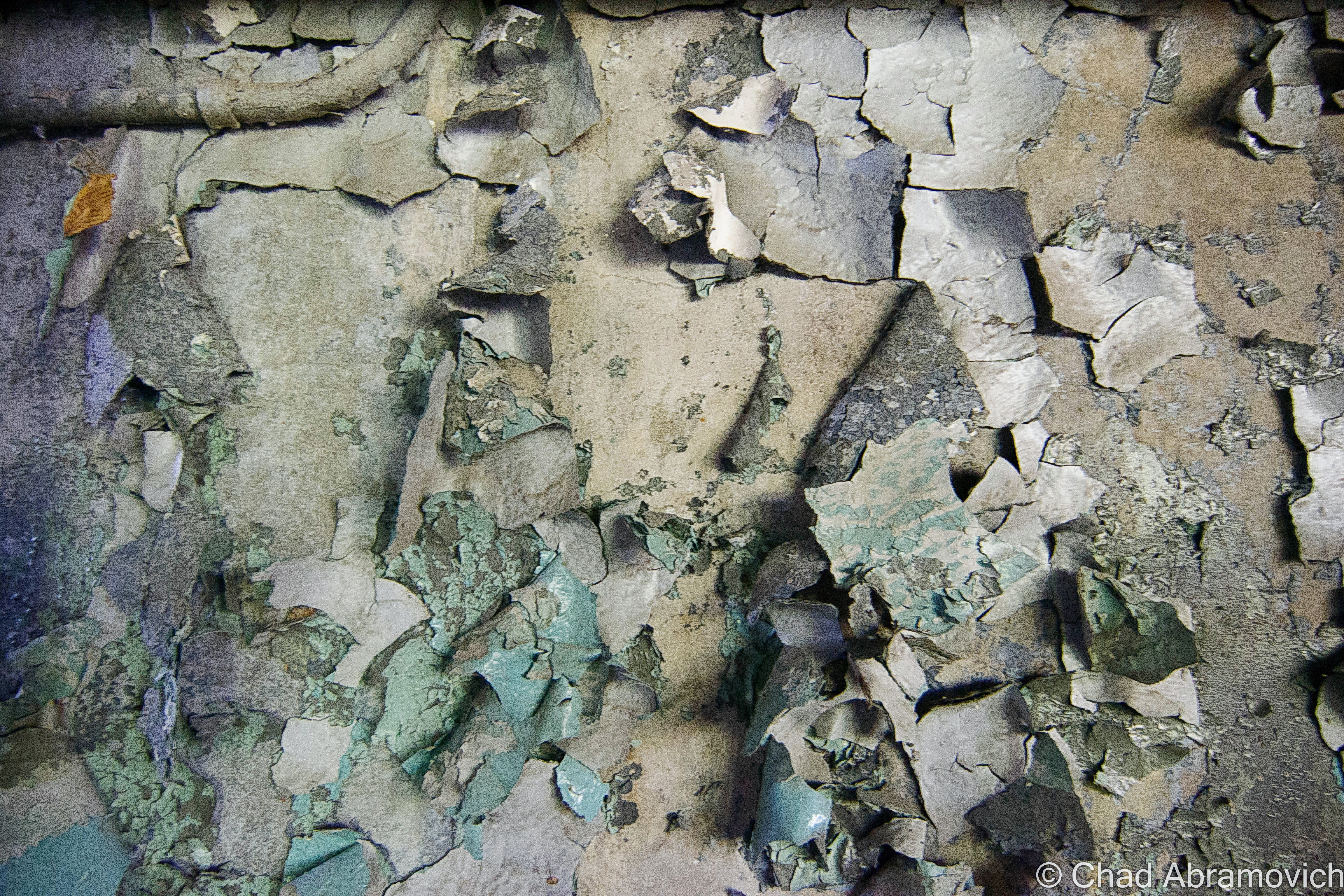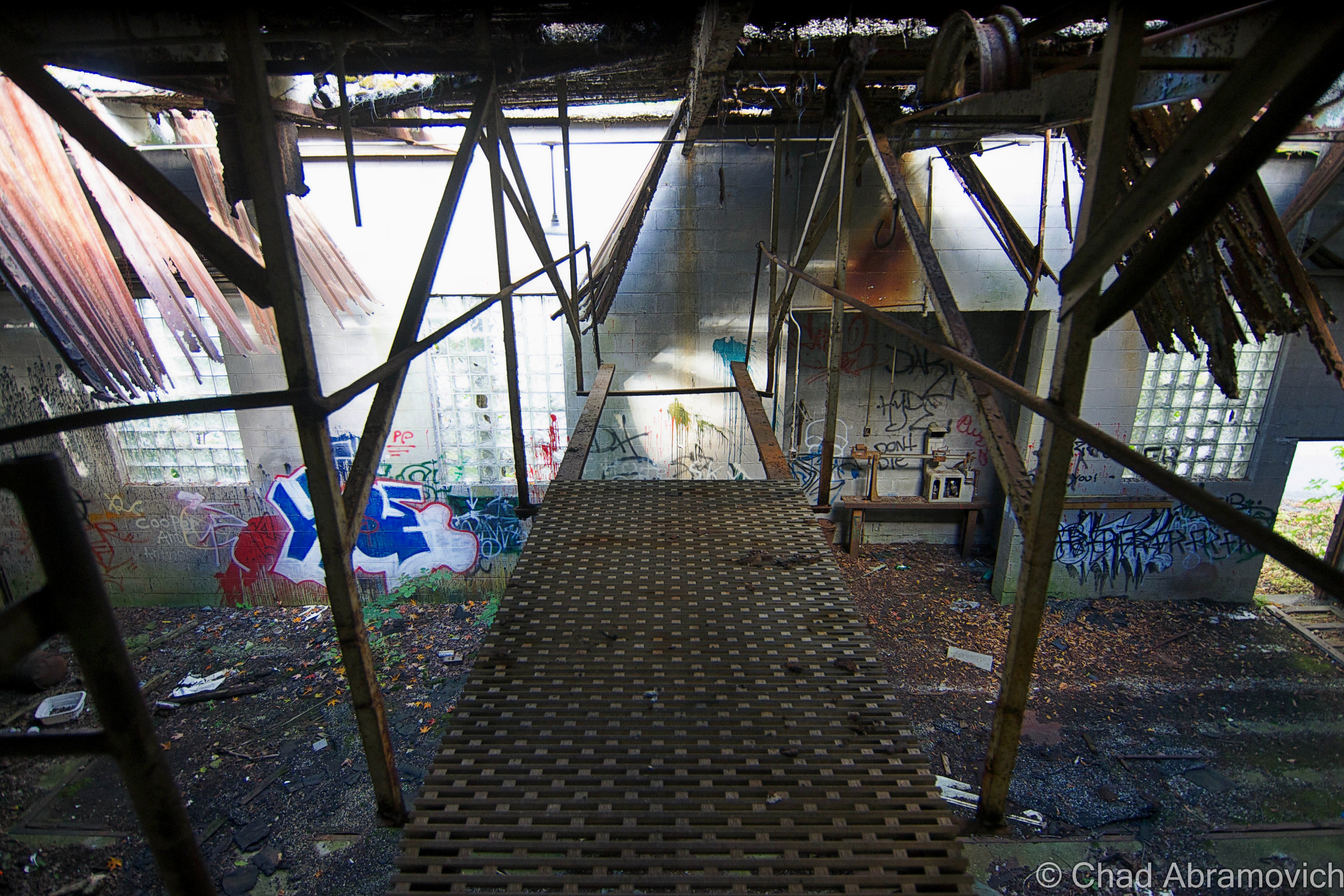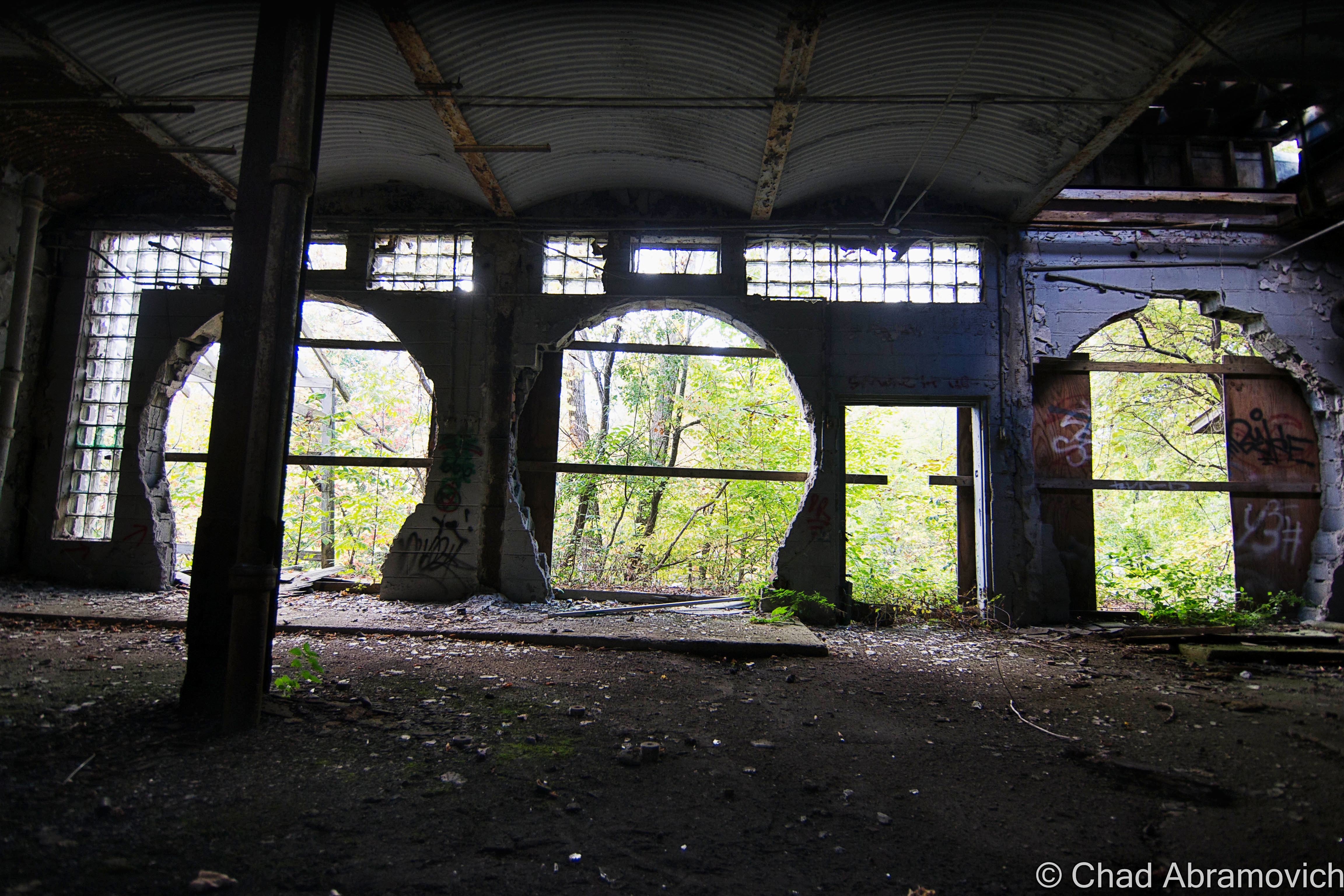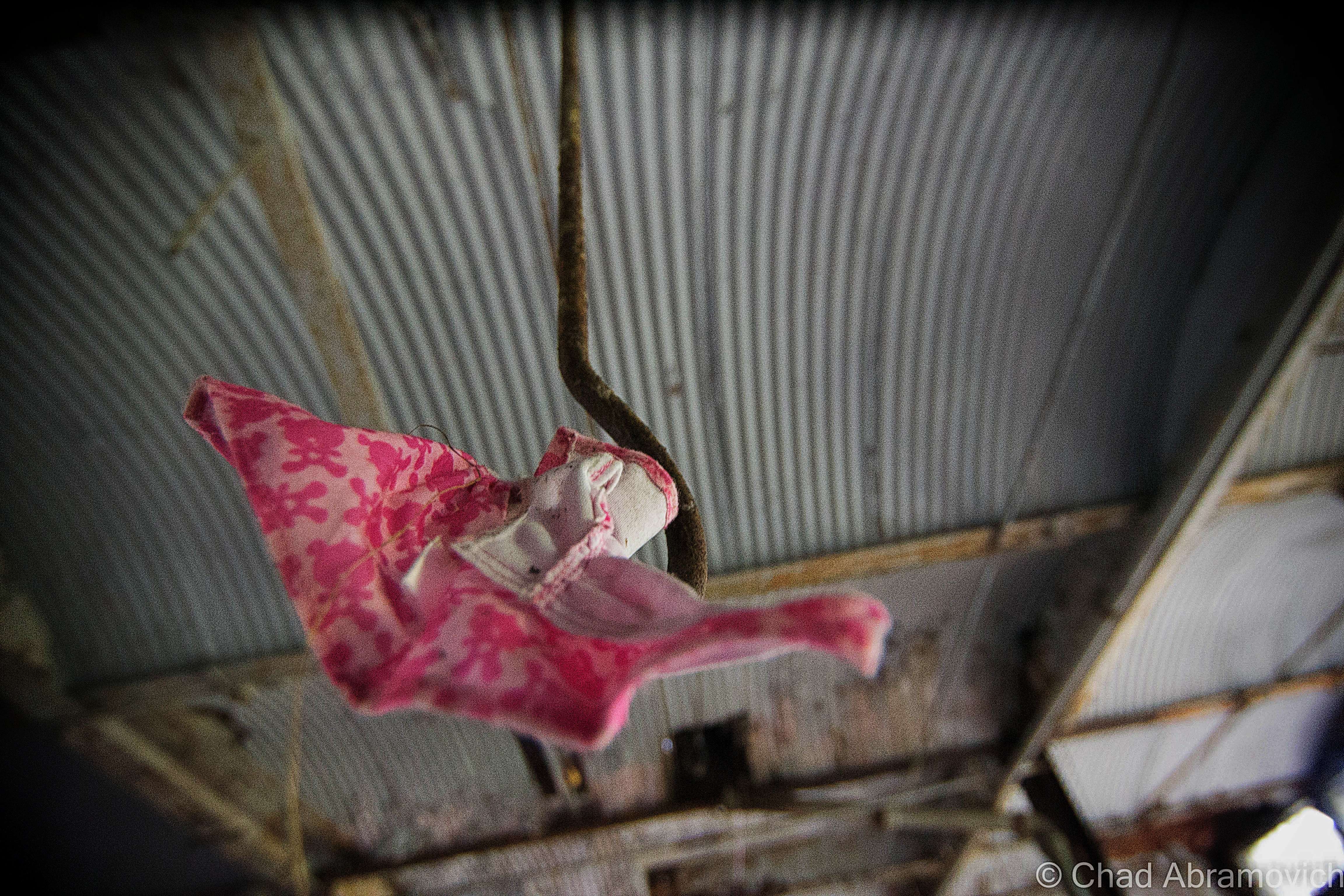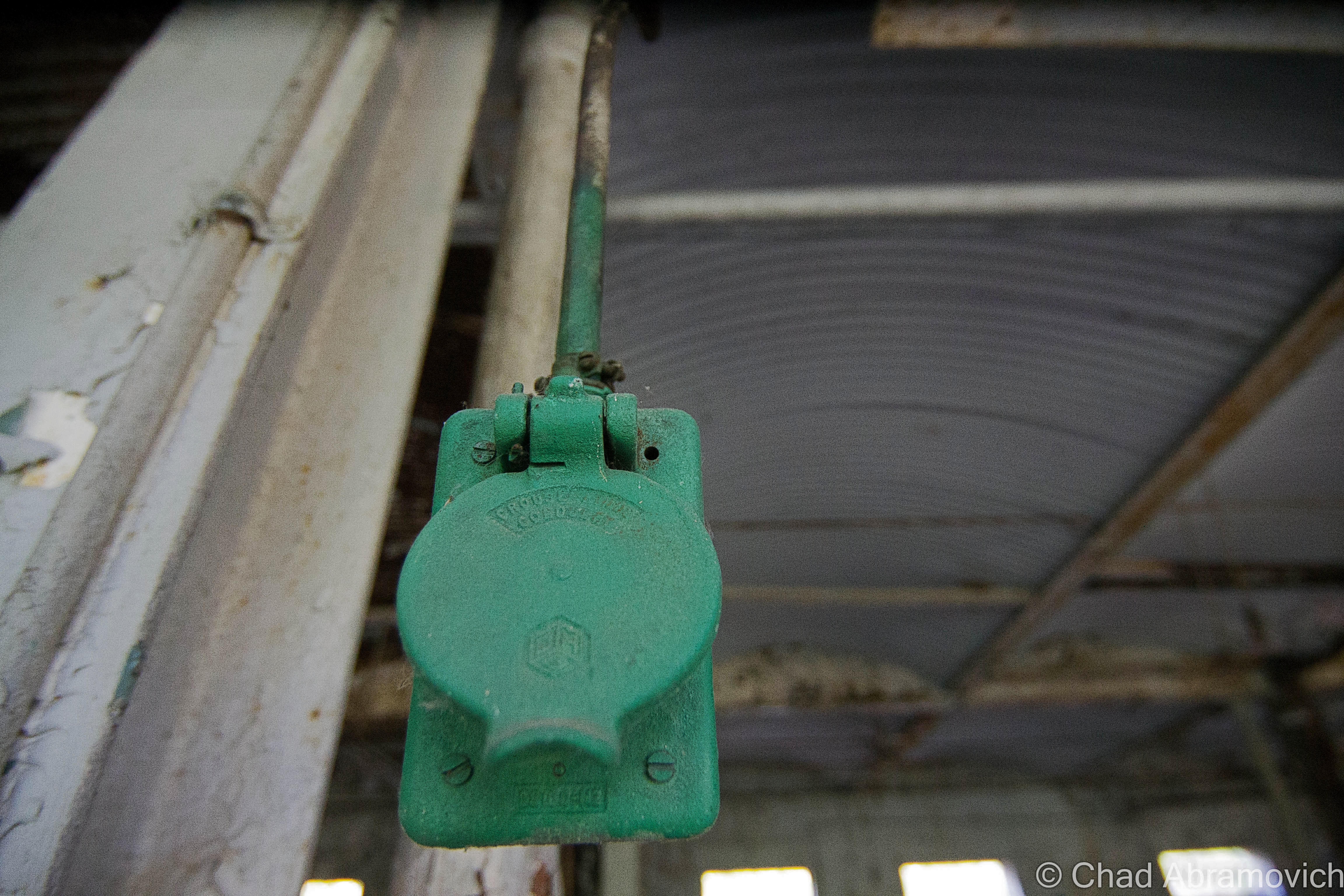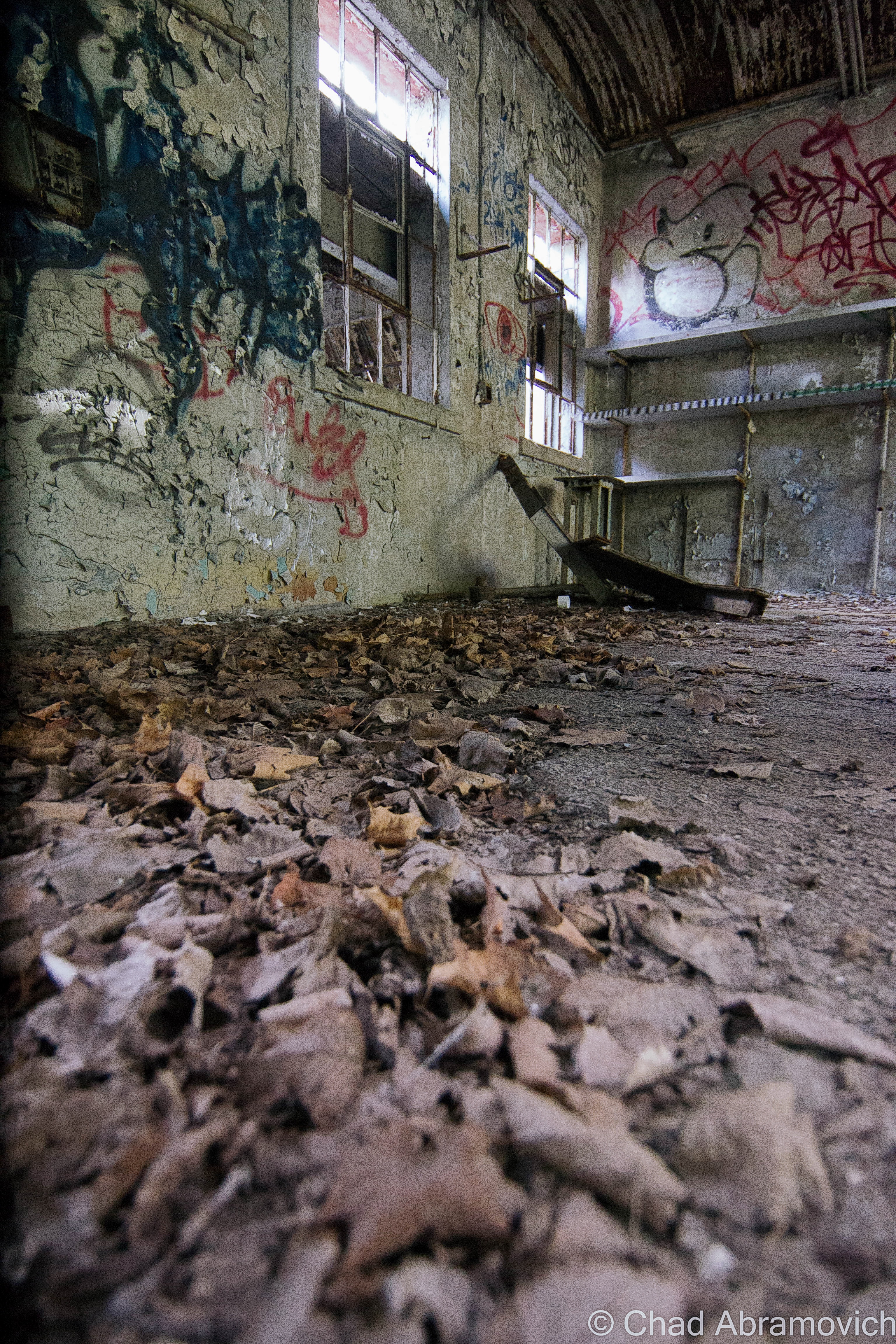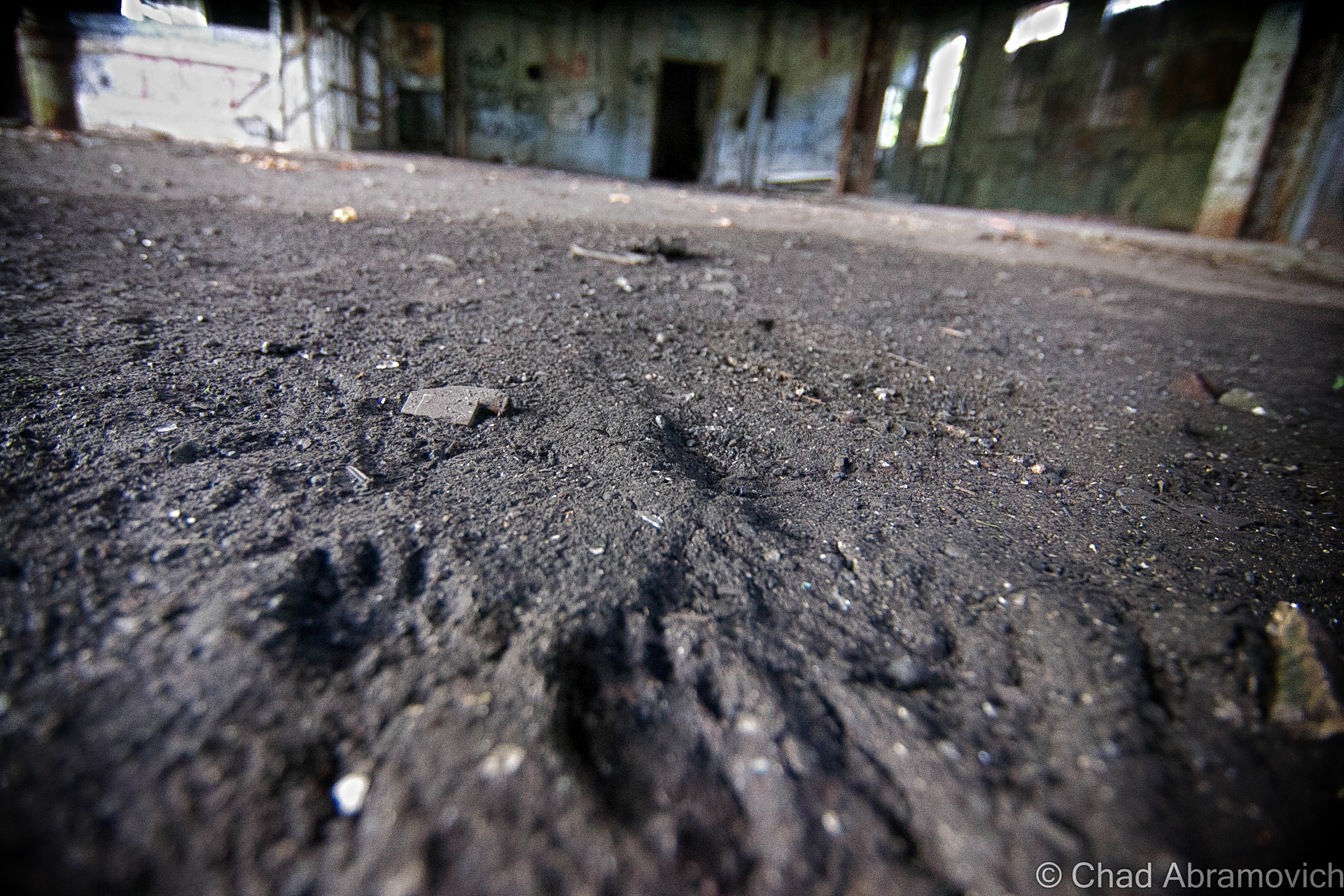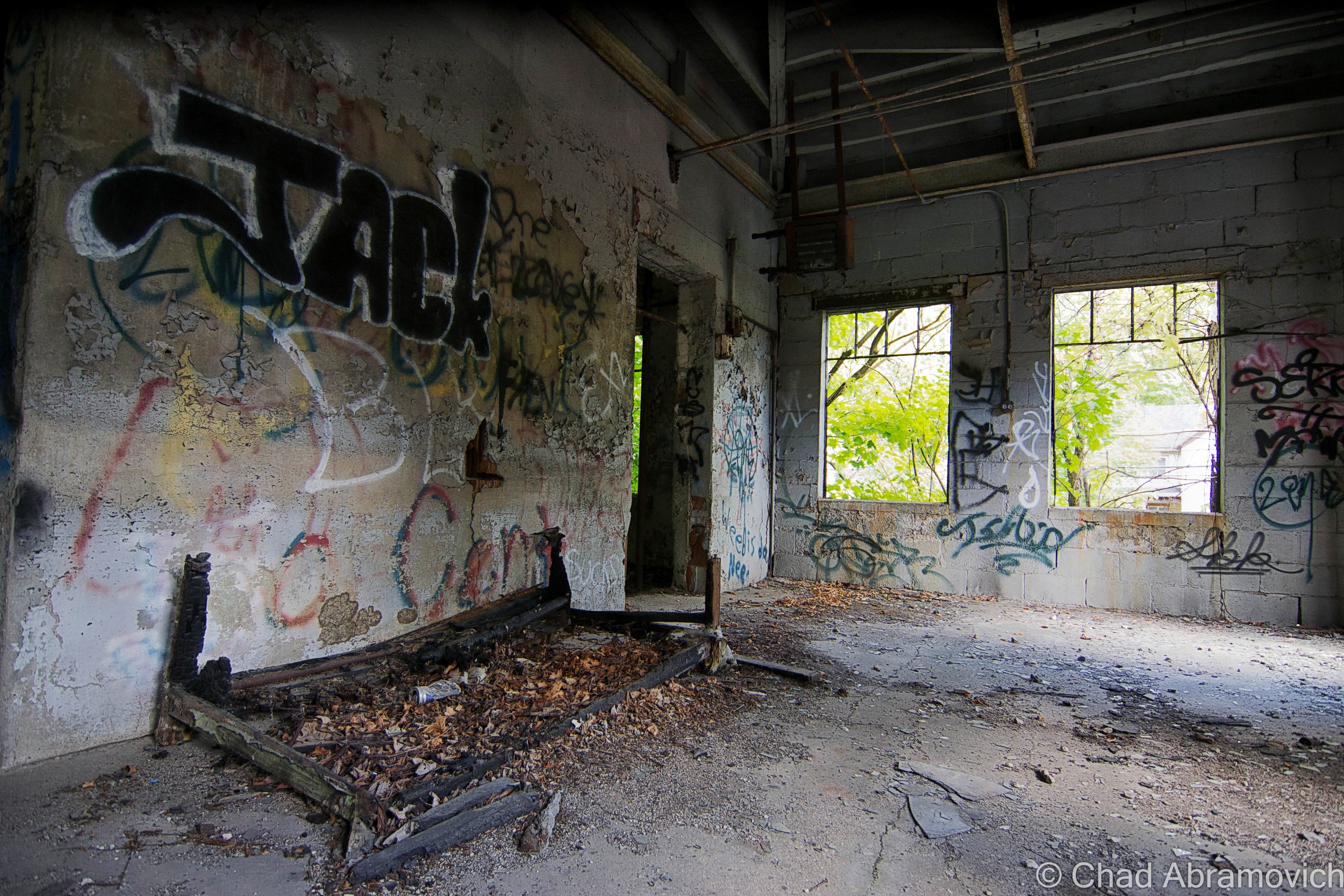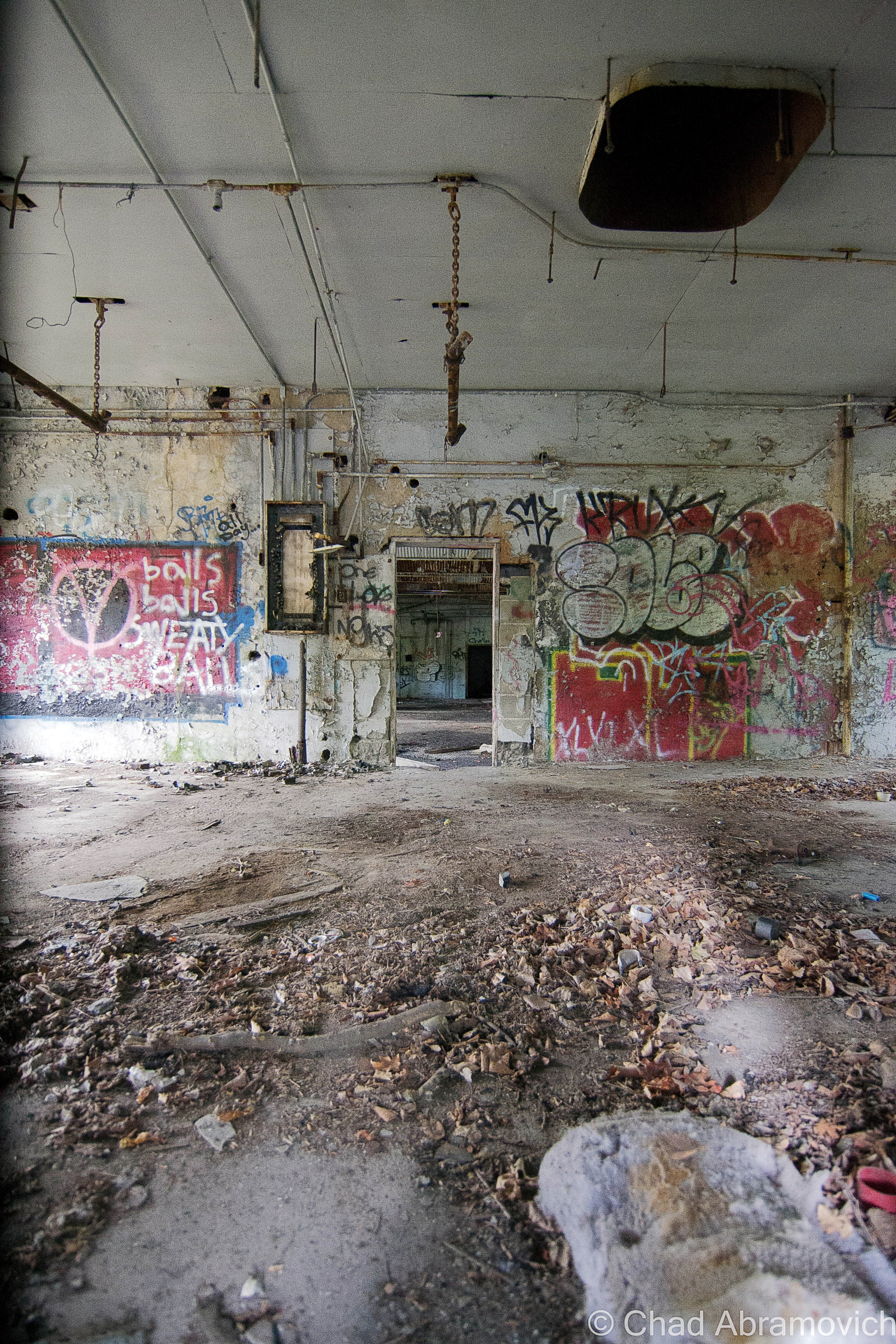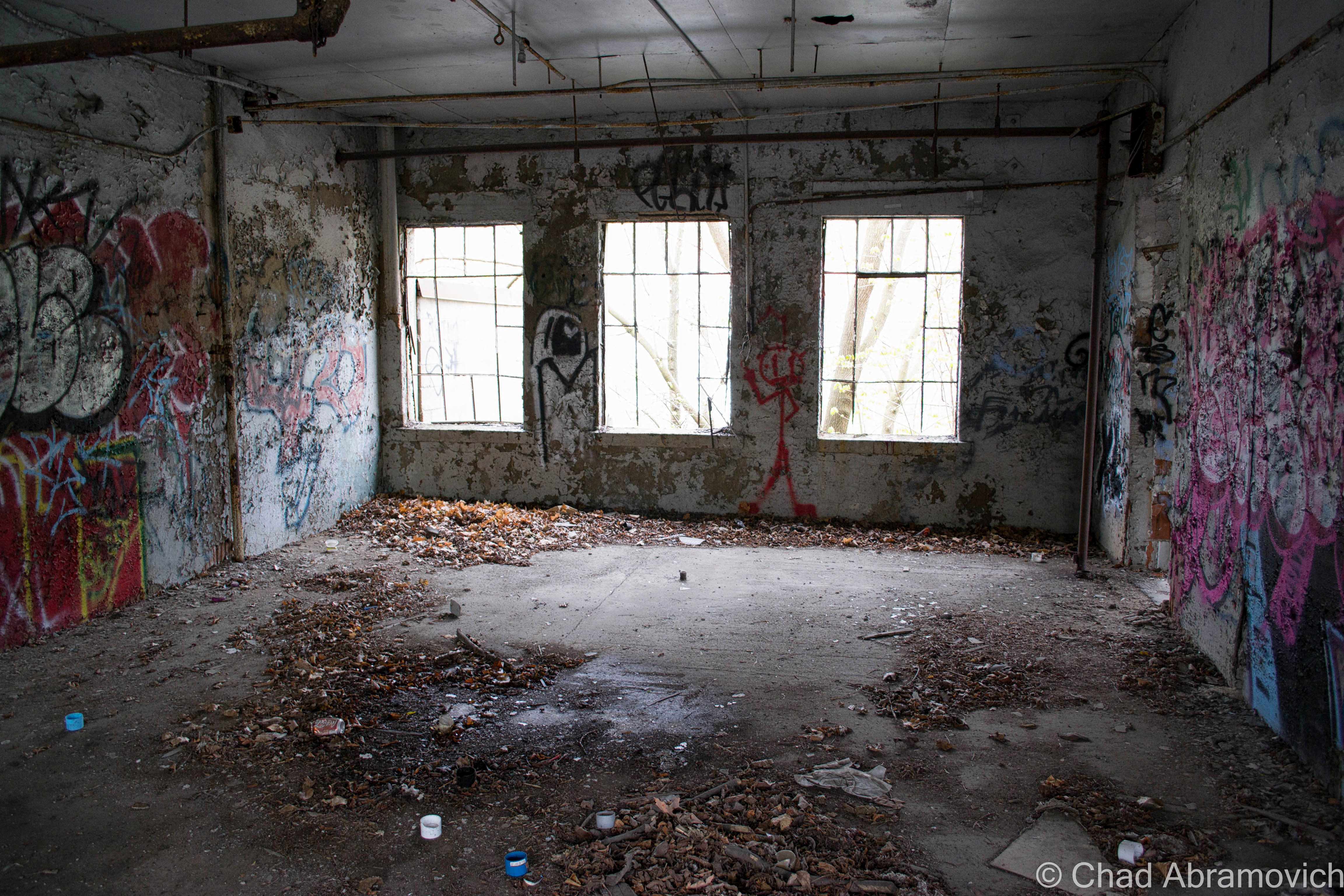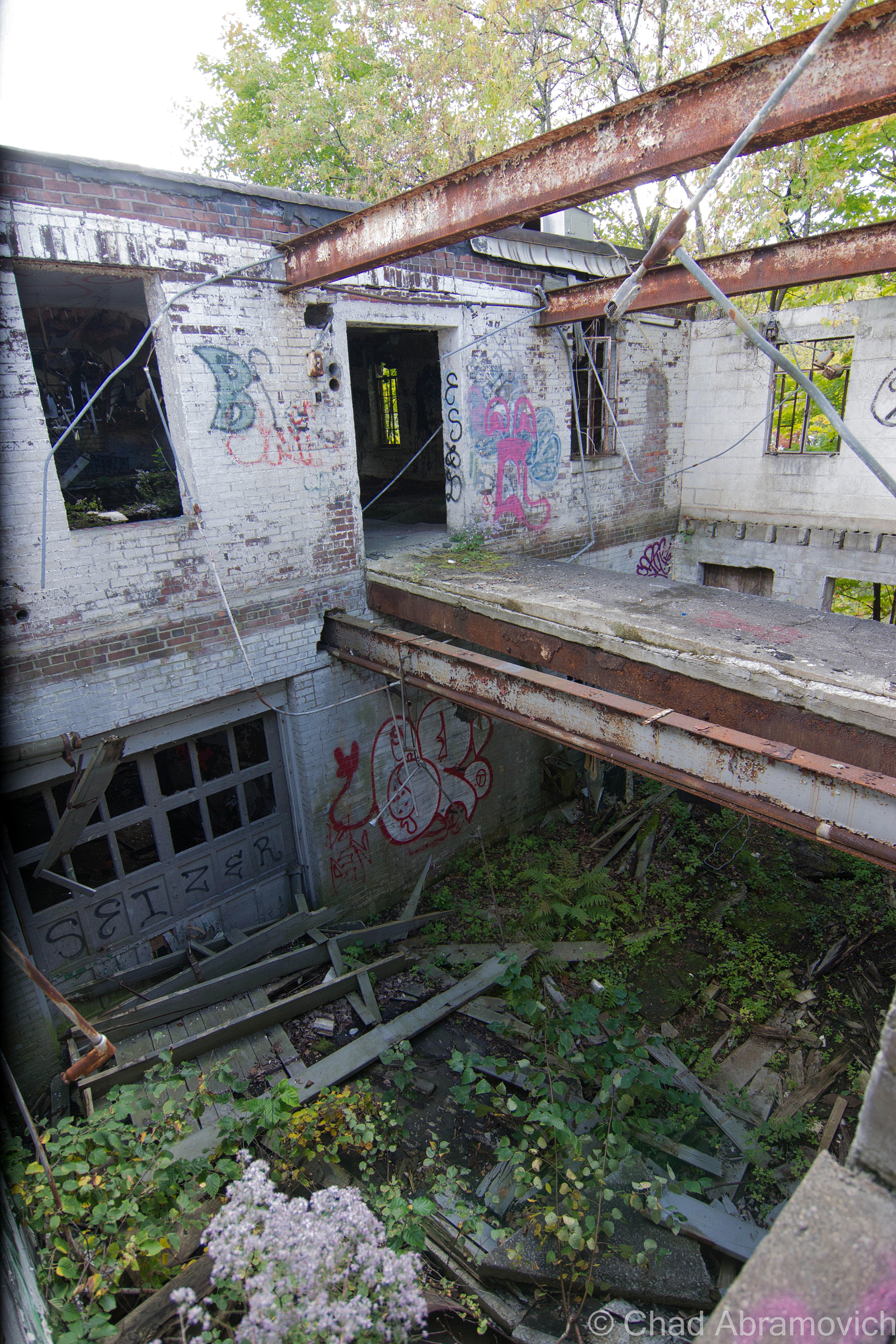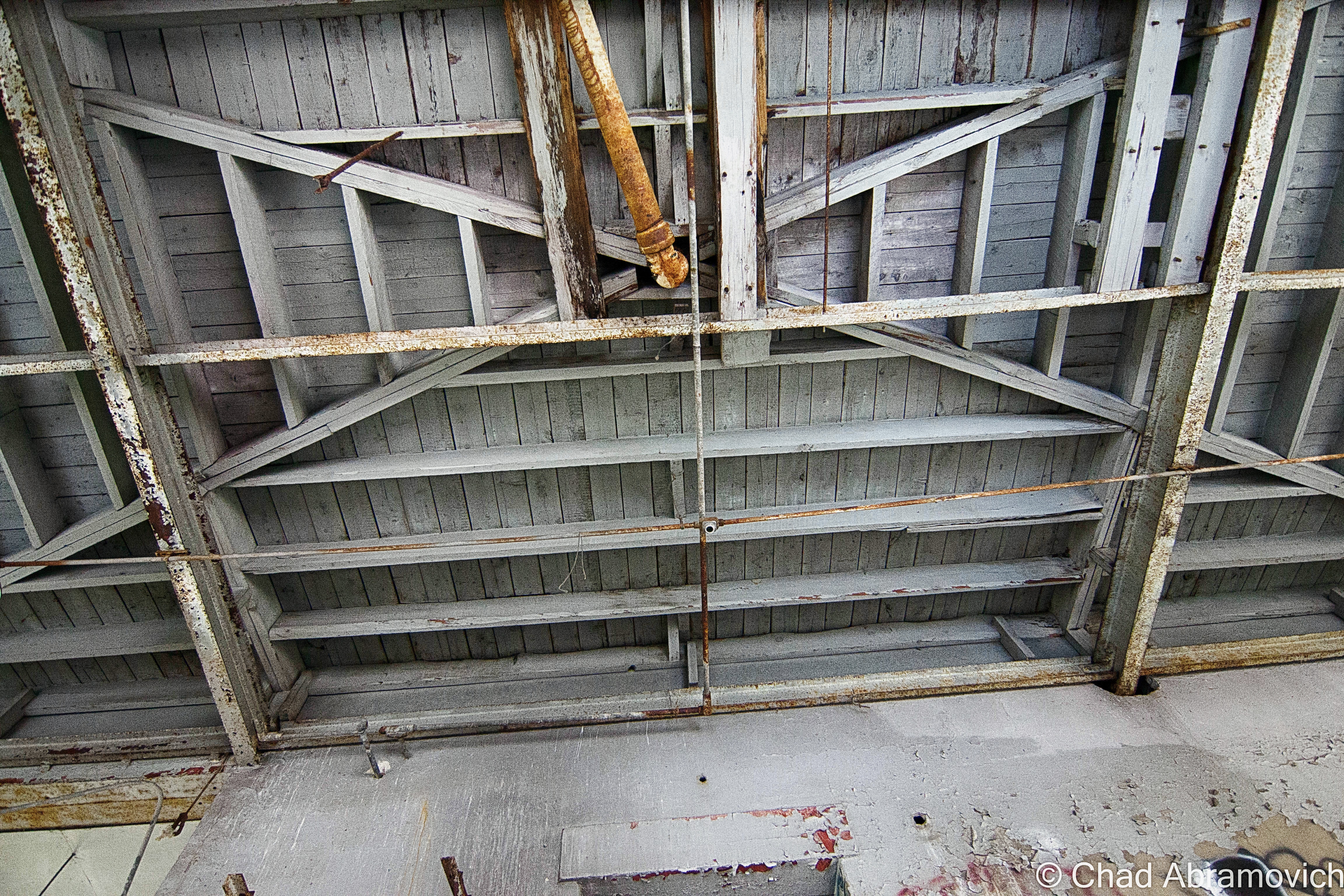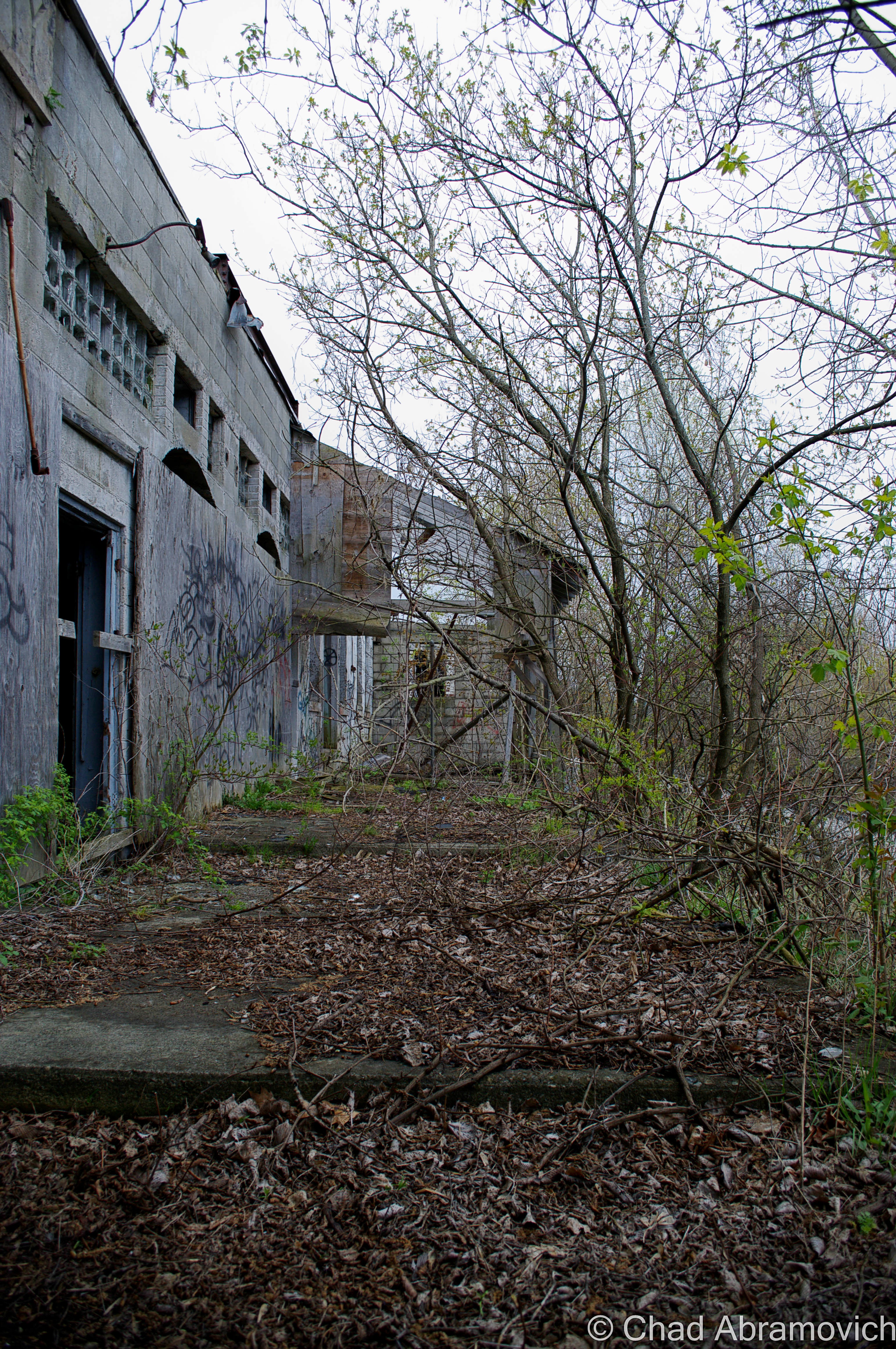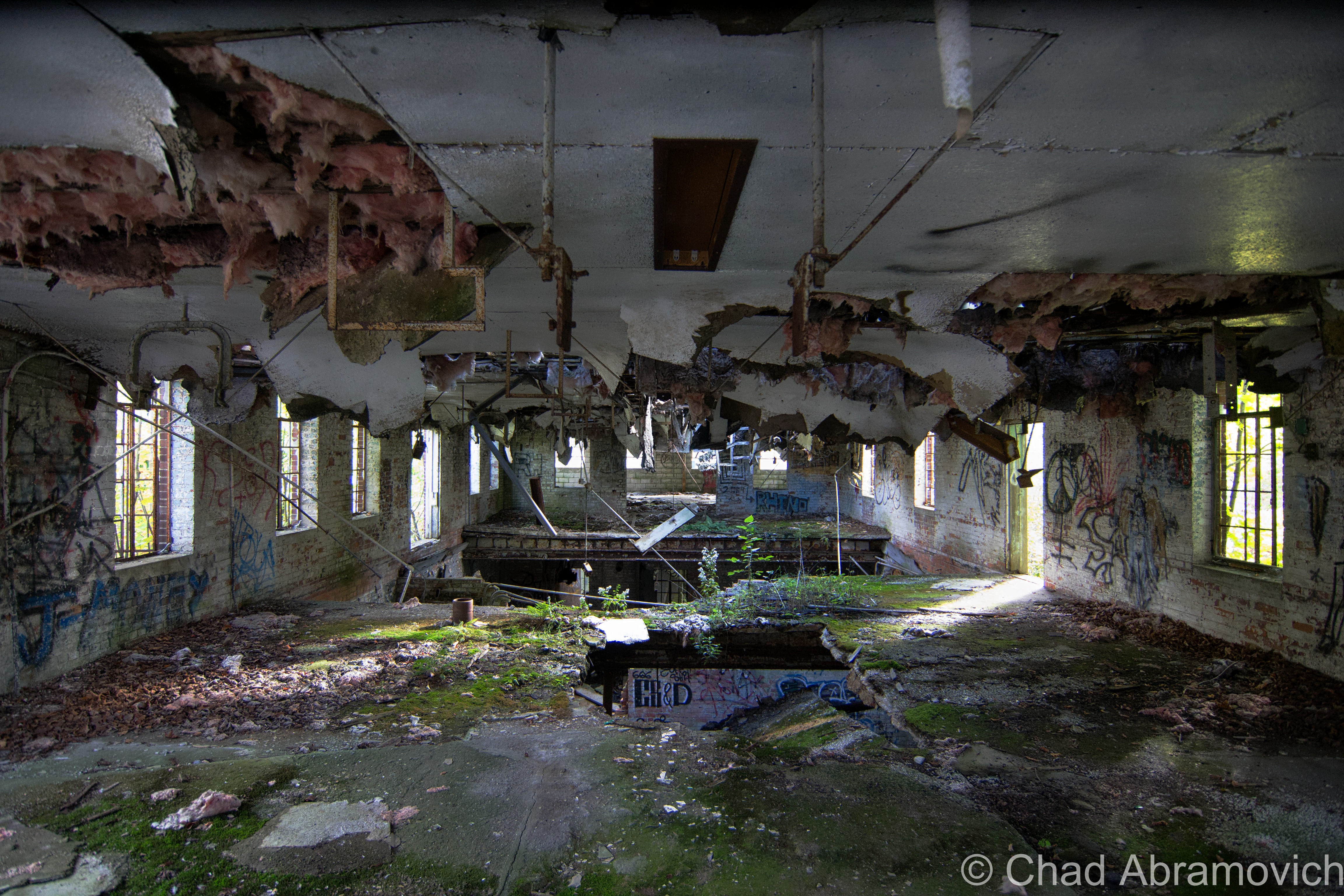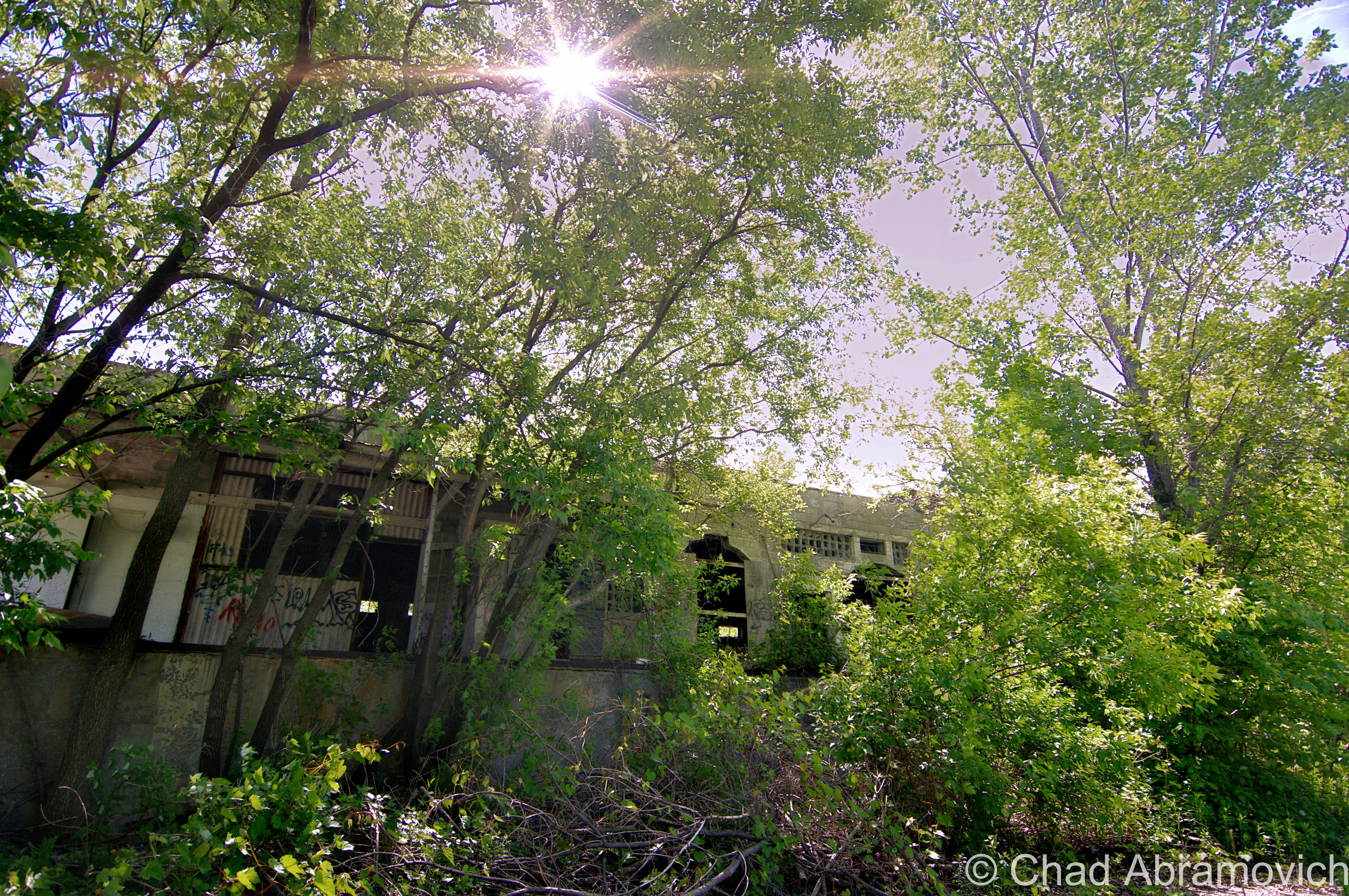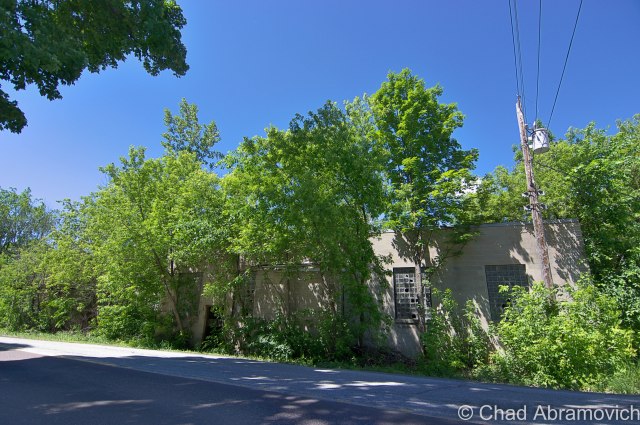Being a storyteller is somewhere in my framework. I’d like to think that’s the crux of this blog, to tell stories. This blog has lots of long-winded stories. It’s just one of those things that you’re gonna have to live with for giving an emotionally unstable person a keyboard and a WiFi connection. (That’s me) And whatever it is that I have to tell wouldn’t be complete without the mention of this place.
When I first started this blog, I made sure this was one of the first subjects I posted about, because it was, and still is such a big deal to me, following me around like a phantom through different stages of my life.
The chiseled granite block along the disintegrating roof line reads “Milton Co-operative Dairy Corporation”. Most folks in town call it “the creamery” unless you’re one of the few who are unaware of what the corroding property used to be. I’ve heard people speculate plenty of things, including a train station, a munitions factory or an armory.
The rambling building made of patchwork additions is off a side street in town, and the years run down its crumbling facade. Its forsakenness is obvious. Young trees have grown around and inside the building, disfiguring the structure. If you catch a glimpse through any of the broken windows or an open doorway, you witness a dark world made of peeling lead paint, reservoired floors and piles of fallen bricks, all cast in various shadows in the places the shine of the sun penetrates its way inside. In a state as non-industrial as Vermont, this location is truly a magnificent way to get your senses drunk. And it was this dangerous, virulent location that changed my life around age 12.
Around 1835, Milton’s agriculture scene shifted fads, from sheep based farming, to more profitable dairy. The town saw an increase in farming in the intervening years which began to put a strain on Milton’s original creamery, The Whiting Creamery, located off Main Street near where Oliver Seed is today. By 1919, many Milton farmers got together to form a dairy co-op. They built their headquarters on Railroad Street, a side street off Main Street, which today is one of the village’s primary thoroughfares. At the time, Main Street was actually the Main Street in town, and because titular Railroad Street paralleled the tracks, it was practical real estate.

The building was done unconventionally, with a steel I-beam construction and stucco facade installed over bricks, which according to the late owner of the ruins, was a design unique for anywhere in Vermont at the time. Miltoner John McGrath would become the first president of the co-op. Over time, the creamery’s business ignited, as more farmers from Milton, and rural parts of northern Chittenden County and Southern Franklin County were sending their milk to be processed there – and shipped out. A lot of the revenue made by the creamery actually came from exotic foreign locations they shipped the milk to, like Boston and New York, via the aforementioned railroad that runs inches from behind the building.
In 1935, the creamery would expand for the first time at the height of the great depression in a conspicuous brick addition that today is the worst part of the complex. While most money-making things in the United States were prostrate in defeat, the railroads and the dairy industry seemed to be staying steady. Over the years, several more additions came along, and when cars became common, garages and a scale room were built, until the current uniquely shaped structure that exists today was finished. Those who can remember the creamery when it was functioning said that it was one of the largest creameries in western Vermont. During its most prosperous years, it would do over $5 million worth of business in a year, and employed 50 people. According to a homeless fella I accidentally met that briefly lived in a tent near the tracks behind the building, he recalled his father working there. “I remember how bad the milk lab used to smell” he said in fervent disgust at the memory. “Used to stink so bad, you could smell it down Railroad Street!”
During the cold war, the basement area was also designated as a fallout shelter, an appointed place to seek safety in case of nuclear destruction. Though, a practical observation at the grimy basement now days tells the visitor that the apocalyptic urgency so many people in the 50s were subscribing to would have easily vaporized anyone who decided to wait it out down there. Until recently, a badly warped caution-yellow sign that read “Fallout Shelter” in black lettering could be seen crookedly hanging from a concrete wall. Some local kid most likely stole it for a memento and hung it in their bedroom.
However, as time flowed, business practices changed, and the creamery soon found itself cutting its teeth on the stone of the changing times. McGrath would resign as president in 1953, and Ray Rowley, from another long-standing dairy family in town, would take control. But the Co-Op was already shaking hands with its mortality.
By the 1960s, the creamery’s fate seemed poised to continue percolating in some downward lament. A decline in dairy farming led to a decline in dairy – the stuff that created the business in the first place. It was around this time when bigger monopolies began to appear on the scene, a trend which has only intensified since then. Larger and more resourced operations like HP Hood in Burlington were hard to compete with, and the growing struggle of irrelevancy disarmed many smaller businesses. Sort of ironic is that HP Hood is also long gone, the old plant on the corner of King and South Winooski has been modernly renovated into condos and mixed commercial space, as is the cool trend with defunct industrial properties.
The last 2 decades of the creamery’s life were slow death. Fluctuating milk prices and the cost of refining didn’t show up in the farmers’ paychecks, which irritated some of them. I can’t say I blame them, farming is hard work. A crude barn shaped structure was built next door, and was ran as “The Milton General Store” for a while – an appendage of the creamery. Those who still remember it, say that it was the kind of place where you could literally buy anything – from nails to maple syrup, and had a distinct “dusty workshop smell” inside. But that attempt at savior failed as well, and by 1974, the creamery became a ghost.
The building was put up for sale, and shortly afterward, was purchased by a local gentleman who used it as storage space for his many antiques and the miscellany he either collected or hoarded. That line was a blurry one. But it was clear that this guy was of his own sort. Sadly, mental instability and his own demons got the best of him, and one of the consequences was that he neglected the place. His paraphernalia became either stolen by characters who have no moral issues with thievery, or what was left behind rotted away when the building began to progressively weaken, and rats began to nest inside.
I had struck up a few conversations with the owner before in my teenage years. I used to work at a local gas station then, which was a crash course on social skills for this young Aspergian and his seemingly incompetent switchboards, but the struggles also brought some worthy experiences. Like getting to know him a little better whenever he’d stop in. I knew who he was, but our getting acquainted was a bit coincidental. He’d see me working and just start chatting with me if he was in my proximity, but he seemed a bit lonely and he’d chat with anyone willing to lend an ear. Over time, he began to recognize me as a regular working stiff and always made a point to have some sort of small talk with me, on his own terms anyways. I found out that he was a pundit on Milton history, or really the old in general. I’d risk getting reprimanded by my shift manager and have conversations with him about local history and things I found to be fascinating – information that I didn’t have access to anywhere else. But due to his schizophrenic-esque behaviors, I had to try to be mindful of how I engaged with him.
I found out about his death in the summer of 2016, which saddened me a little. I’m sure he had so many stories and secrets that he took to his grave with him that we’ll just never know. I always contemplated taking the time to contact him and ask for an interview, but anxiety got the best of me. The creamery was hastily and quietly sold, and condos were spoken of. I suppose the momentum didn’t surprise me. Milton-ites have wanted to get rid of the scorned property for decades. Which is also why I’m re-submitting this blog post. The creamery wasn’t just the first place I had ever explored, it was a huge part of my adolescence. I’ve never dealt with change that well, so when I got word of a change coming up in the form of the creamery’s possible demolition, I decided I needed a fond farewell.
I’m going to borrow a quote from the late Leonard Cohen, when he said; “I’m interested in things that contribute to my survival”. The creamery (and Mr. Cohen) has contributed greatly and artfully to my survival and I’m forever grateful. It’s weird to think about as I’m reminiscing and drinking a beer right now – how different would my life have been if I didn’t grow up in walking distance of this place? Did any of you folks have an abandoned building in your hometown, or a place that was a local rite of passage to visit as a kid? Do you have any stories of your first adventure?
Over the years, I struck up a friendship with the great folks at the Milton Historical Society, and one of my first research topics was the creamery. Sadly, not a great deal of information about it really carried over the turn of the most recent century. For the most part, I compiled all the usable information I could in the paragraphs above this one. But that’s not all. Museum curator Lorinda Henry was kind enough to scan for me some historical photographs of the business in operation, and portraits of its employees.
Folklore
I think one of the most memorable things about the creamery, and my childhood affixion to it, were the ghastly urban legends and ghost stories that the older kids told me, a ritual I continued when I aged. Stories that created an inseparable impression about the place.
Murder
I still remember the first story I was told, which I think is also the most popular one in some variation or another. The story of the murdered janitor. Essentially, two custodians were working graveyard shift, and a known rivalry was between them. That particular night, one of them would let all of his animosity towards the other cut loose like a pressure valve. Somehow, one of them fell off of a two story catwalk which is suspended above the scale room, broke his neck when he hit the concrete, and died in the building. The motive, whether it was preempted murder or a moment of unchecked anger isn’t translated into this tale. But the aftermath is. The other employee realized the gravity of what just happened, and he was frightened. He’d be blamed. He’d go to prison! No, he couldn’t let that happen. So, he decided to make his co-worker’s death look like a suicide.
Transporting the body upstairs, he hung him from a meat hook in one of the coolers, hoping when the corpse was discovered the next day, that’s exactly what the shocked observers would believe. Only, they didn’t, and apparently, according to an increasingly vague story line, the assaulting janitor was accused of the crime. The story splits into a few endings from here. One says he was arrested, acquitted and sentenced to prison. Another version tells that he skipped town, and successfully vanished from those who wished to prosecute him. As the older kids told me, the residue of the departed janitor still skulks around the building, which seems to be his tomb in the afterlife. Though not much is known about his apparent haunting, people have admitted to feeling uncomfortable inside, like they were being watched by some unknown specter, especially by the room where his body was hung. Phantom chills and disembodied noises have also been reported, but whoever was the one coming forth with these claims remain a mystery. The historical society couldn’t give me any hard evidence of a murder at the creamery, or even a death, so this spook tale remains in the realm of urban legend.
Broiled Alive
I remember another, far more ghastly story. I was shown a large rusted vat inside one of the many dark rooms of the basement, leprous with peeling paint, dankness and dripping water trickling down overhead. A dim mag light beam illuminated the robust fixture, and it was filled with some sort of unidentifiable glish. As the story goes, sometime in the 30s or 40s, a young man was tasked with making powdered milk, and somehow, fell into a vat of product heated to boiling temperatures. His skin was filleted from his body and was unable to be saved. A more macabre version of the story was that crooked business practices just distributed the milk afterward because losing money was a more grim thought than their customers drinking liquefied employee.
Well, I couldn’t find any validation on that story either – but the historical society did help me dig up a very brief newspaper snippet from the 1940s, about a boy who did die in the creamery in those days before child work regulations, but the cause of his death wasn’t specified. But one look at the gross vat today does make a good totem for a story like this one, and the basement is a creepy place. Not surprisingly, there have been quite a few reports of feelings of unease down there.
The Homeless Man
Another notable story did happen, and is documented. Sort of. In the 1980s, recently after the building had been abandoned, a homeless man got inside and planned on spending the night. But nothing stays warm in the wintery cold, and he decided to get a fire started. The details here vary on what happened, but somehow, him and the old couch he was sleeping on, became engulfed in flame. The man died on site. Speculations vary on how he died, whether some flying cinders landed on his sleeping form and ignited his clothes, he was drunk and knocked over or fell into the barrel he used to put the fire in, or some hoodlum kids decided to harass the guy, and wound up setting him on fire. Either way, a dead vagabond was the result. Today, there is a pancaked and charred couch on the ground floor, which I was told was the very same one he died on. Though that too is unverifiable. Some ghost enthusiasts like to think that the homeless man adds to the creamery’s fabled layers of ghosts.
That may account for a claim I heard around 2009, when someone told me of a strange experience of theirs. As he was walking by the creamery at night, he saw a ‘black cloaked figure – almost like a robed monk’, moving in the same direction as him as he walked by the building down the railroad tracks on his way home. He could easily distinguish the thing thanks to the dirty yellow glow of the street lights coming through the second-floor windows, giving the figure a distinct outline from the shadows. His claim wouldn’t have been as weird if it weren’t for the fact that he saw it walking in a part of the second story that didn’t have a floor.
The Tunnel
My favorite hearsay was of the old tunnel. In my teenage years, when I began to become more intimate with the building, I was acquainted with a piece of Milton lore; about a tunnel, which supposedly led from the creamery, all the way down Main Street underneath several of the old houses before dumping out near the Lamoille River. My teenage mind sort of just took that in as fact, and I began making trips down to the basement trying to find the opening, or a trace of a sealed up door. I did find something, a door below ground level, that had been cinderblocked off. Most likely, that was the old tunnel, and years later, parts of the blockade were sledgehammered through, giving me a glimpse. The tunnel was there all right, but didn’t run all that far. I could see the collapsed section yards from my position. It actually ran to the brick building next door. Today, its apartments, but it was originally built as another part of the creamery, which is why the tunnel was there, and which is why it was sealed off. I spoke to a few Milton old timers, who smirked and recalled breaking into the tunnel when they were younger, and sneaking beer and cigarettes down there. But was there ever a passageway that ran all the way under Main Street? Well, I wrote about that, if you’re curious.
As for me? Well, I’ll admit that my experiences being a tourist to this old building haven’t been all that paranormal. I generally don’t concern myself with hauntings or ghosts anyways, unless one of them walks right up to me and says hi. It’s not that I don’t believe in those things (I write about weird stuff after all!), I just try to take an agnostic approach first. I do have one strange personal account though. In 2011, I was walking up to take some photos, and found a very strangely placed mannequin inside one of the old coolers upstairs, propped right in the doorway so whoever walks by would notice it. This one was particularly creepy. It looked old and decayed and yellowed, and dressed in a patchwork of old clothes. There was also a pentagram carved into its neck. I went to other parts of the building and doubled back about 40 minutes later, and the thing was gone. I never heard or saw anyone come for it. To this day, I still don’t have much of an explanation for that weird event.
I still recall one person writing to me when my old post was live, and told me how they found old co-op milk jugs that had been found underneath their old concrete front steps. They had apparently been used to help build the framework for them, which wasn’t an unusual practice for old Vermonters, who used their ingenuity to use whatever materials they could for their benefits. Milton’s Main and Railroad Streets are old. It makes me wonder what else is found within these old homes.
Painkillers and a Purpose.
This is the section where I get emotional and hash out my scars. If you don’t dig personal backstories or revelations, skip down to the pictures. There’s lots.
Growing up in Milton, I was a shy, creatively maladjusted boy. As the years and my youth passed on, not much changed, apart from my curiosity, and me never feeling like I was comfortable in my own skin. I was always thinking there was something wrong with me. Being diagnosed with Aspergers at a young age, I quickly found out that I was a pundit on certain things, but hopelessly inept with others, like social skills. It was an unhappy balance, and that led to a coming of age where I was bullied and timid.
I suppose it’s fitting that I began to take interest in what we perceive as oddities, or things that don’t fit our conception of the illusion of normal – and their captivating stories. Abandoned places fell into that category for me. The creamery was the first. And better yet, it was easily accessible.
I first dared to cross that threshold into a world that conventional wisdom told me was dangerous and forbidden. And that’s partially why I wanted to venture inside, and why I decided to repeat that ritual for years to come, because people frowned on those sort of behaviors, and I wanted answers for myself.
The thing is, I’ve never been like everyone else or satisfied with the pre-prescribed banalities of everyday life, things that are all too generic and sanitized. Whether it had to do with growing up Aspergian, or be it something in my framework, I never fit in. So I decided to put myself in haunted waters, and see what happened. Turns out, bending the rules, thinking for myself and daring to go against what I was taught was one of the best things I ever turned into a habit – and is some of the best advice I can give to anyone, assuming I’m asked for my opinion on these things.
Everything is a language, everything is constantly trying to tell us something or express itself in its own way. The trick was learning how to discern the signals from the din of chaos. It was the first abandoned building I ever explored that fired the engines of desire and curiosity in my mind. It was in those precious hours inside where I heard an obsession being born amidst the damp cold and watchful eye of wild shadows that would haunt me for years to come. Treading over the debris littered floors, slowly opening crumbling doors, peering into a vast basement filled with water and intimidation, the dark becomes your hunting grounds, in the foreground of endlessly dripping water.
I spent most of my 20s in dislocation and learning about the blues while slowly murdered by my anxiety. I was depressed, lonely, still trying to figure out my autism diagnosis, and going through the trials and tribulations of several different antidepressants or booze. Sometime in between all of that, I lost myself trying to please everyone. In those years of learning what heartache brings, I waltzed between things that I did that brought regret and just trying to get by. By age 25, I had given up on myself. I spent years running from nothing but those vicious, self-depreciating thoughts in my mind and not only did I feel inferior to everyone in the world, but I lost faith in people, and hoping that anyone would understand. I even attempted suicide. They say that you grow up believing the narrative we’re told by society, and how people treat you. Either you had it or you didn’t, I guess. I couldn’t be the only one who felt there had to be something better than the imposed adult lifestyle that was bounded by convention. I knew I wanted more.
My tendencies to escape from the pressures of a judgemental society raging over me and all my failures brought me to these forsaken locations. When things got too rough outside, my earnest self climbed inside. My time hanging out in them not only became like therapy for me, but it also picked me up like a drug as unacquainted fires lit sparks in me that took me years just to understand their ways. Urban exploration helped me confront social and emotional turmoil, as I’d disappear into a sea of rebirth, or at least a change of scenery.
It was here where I could try on my heart, and let my walls down. Over time, I didn’t really mind that I was lonely because it felt like home. Whatever things ran through my mind I could keep for myself. I could learn about myself and my environment and observe both and how they changed with the weather. I could study these ruins and what was left behind, getting an extraordinary and authentic look at a sort of museum of humankind than I could ever learn elsewhere as I picked at the bones. Building materials, architecture, electrical and plumbing, amateur archeology, hazardous side effects, irrelevant culture – all things that would give me a better understanding of the world around me, and conjure more questions and a desire to learn. I could learn to gauge my anxiety and problem solve in different ways.
Little did I know that while I spent so much time in the edges between self-awareness and self-loathing, I grew as a person.
Photography was something I picked up in relation to urban exploration, as I pushed myself to learn the mechanics and how to capture this world that I saw. I really digged the feelings I was receiving, that excitement, that push to keep trying, to keep dreaming. I wanted to get lost because I couldn’t be found. When we’re presented with things that we don’t see in our routine days, we get curious and we look. Social norms often tend to discourage looking closer in real life, and that’s why I love photography. It allows us to do so freely.
I still remember the satisfied grin on my face when I first bought my own camera with money that I had worked so long to save. And the creamery was where I honed those skills. Exploring enhanced and enlightened by appreciation for the landscape around me, and matured a sense of wonder in these everyday spaces. Being a photographer really enhanced my self-esteem and gave me a distraction from everything that was bringing me down. Every photo tells a story. Every photo was taken by someone who had to be at that place, who did the planning, who had an experience to share.
In college, I majored in graphic design, which, despite me falling out of love with it after I became wise to how the industry works and how that didn’t fit me, has greatly influenced and improved my imagery and my hobby. I could further my creativity with all that was still stuck in my head.
Writing has something that always came sort of naturally to me I guess, but it’s still something I’m pretty self-conscious about and always trying to develop. Twisting the night away in front of the comforting glow of a computer screen as I listened to those records that almost hit harder than my pain, I tried to translate and find a meaning in my thoughts and experiences and explores. Especially as I grew older, I wanted to spin a thread from my past into my present and try to find a meaning to my suffering, to these forsaken locations, and how being a human is one complicated gig.
I definitely wore my heart on my sleeve, and I remember all the things I felt discovering my favorite albums, the heroes I would worship, fascinating local weirdness and just about anything else that made me shiver. Part of me wanted to contribute, to create, to make sense of everything I could. What do I do with all these feelings and experiences, these things that are crawling up inside my head in my 20 something-year-old wasteland?
I’m not sure what it is about the creamery, or these temples that are a relief to me, but they make great atmospheres to drain my mind, all the more so when my cup is full.
Exploring ironically became some sort of a social endeavor for me in my young adult years when I was searching for friendships and other libertines. I’d often accidentally meet these amiable, intelligent people with the same interests, and I’d take the chance and meet them in person and go on adventures, and I’ve been lucky to form a few strong bonds because of it.
Before I had this blog, I had a Flickr account. In those days, Flickr was really a niche audience. But somehow, my Vermont-based photographs made their rounds, and over time, others started to reach out to me. We would bond over the places we’d shoot and our stories, and sometimes, if we really hit it off, we’d meet up in person and find new exploratory joys (but to be honest, the biggest thrill for me was to finding new places myself). I think any other explorers can vouch for this – that the conversations you have while adventuring are often the best, and the weirdest. I’ve had plenty of amusing chats underneath the creamery’s arched tin ceilings. That’s how I met my friends and role models Rusty and Christina who run Antiquity Echoes and Dan from Environmental Imagery, to name a few.
The internet introduced me to the “urban exploration” community, which was still emerging at the time and pretty underground, and I remember being curiously thrilled that there were other people out there who did what I did. The explorers (“urbexers”) who were creating websites and putting their photography online, I found, had scars, philosophies, and interests similar to mine. And their work was good, it was venerable, and it gave me a direction. I love people who add personality to their work.
That was also where I was introduced to the term “urbex”, something that attempted to categorize what I was doing. Way different than the modern day urbex explosion that has crawled all over the internet, and alongside the greats, an oversaturation of various disrespectful types who are more into their own vanity and bravado and taking pictures of them smoking vapor cigarettes than the tourism, which often brought drama and something pathetically similar to high school cliques in the social media groups I used to be apart of (another attempt at trying to fit in), so these things turned back into a private affair for me.
I don’t want to be a trite person because that’s unfulfilling and there is no point in following this blog if I sound like everyone else. I’m me, and my thing is to be upfront and honest about where I come from, and often, I talk too much. That may not be everyone’s scene, but I’m okay with it – it’s all I got. It took me years to find my words and a beat, and I’ve learned a murderers row of personal lessons from it.
I’ve been searching all my life for a purpose, some sort of connection to this “humanhood” we’re all supposedly a part of – but I never really found it until I started learning how to live in the present tense and brave through the pain and uncertainties. You have to be vulnerable to grow, and sometimes, letting down my guard was a significant and valuable thing. Proving the static in my head wrong, that I wasn’t too far gone to have a talent.
Exploring, photography, writing, they all sort of united together, and as I chased them, I fell for them. I wasn’t wasting away my soul anymore, and I learned to stand on my own and begin again as my purpose worked its way to the surface. I wanted my life to matter, and for my time to have a positive impact and not to simply pass me by, even if it costs me. I don’t want to just survive, I want to do the best that I can to create a wonderful life. Especially now as my youth and years are passing me by.
Nothing will ever be handed to you. You gotta work hard, or it will never happen. If you want to be an artist or wield a talent, you have to study that art. Get the books, the role models, the media that has to do with what sort of person or thing that you feel you want to become. Study it all the time. Practice, learn, stumble, keep practicing, go. Decide, who are you trying to be? And what’s the motive? Do you want to be an artist that cares about your art, or famous? Those are 2 completely different things. I’d rather be trying to be the best I can be at whatever I’m doing, even if I only have a few other people that happen to like it.
For someone who didn’t believe he had much of a future after he had left college and feels like he’s spent his whole life less up than his downs, this has turned my whole life around. It’s the long haul, but it’s worth it. I try not to put anything out there that I don’t believe is good. Even if that means a lot of time in between my newer posts. Quality is more important to me than success. And I’m still finding my beat and my voice (and still cringing at my earlier posts haha).
I learned that I can succeed even when I’m failing miserably. I learned not to be as negative as I used to be, and indulgence can be a good thing in moderation. Enjoying a little danger now and then is fun and beneficial, and remembering where I came from doesn’t have to be a condemnation. Being willfully ignorant will get me nowhere, and is counter-productive to the life I want to live, or the people that help me shine.
Others are imbued by my weather, and I flourish in the presence of love. Fear gets me nowhere. Anger and indignation can be useful and rejection can make you resilient. In pain there is wisdom. Waiting out my life to hold onto anything never worked.
I re-wrote this blog entry and re-photographed this place for myself, the people I know now, and those who became ghosts, because I think there is a great story being told here. Our beginnings and ends are all written in the choices we make, and they all lead us in a direction.
In this struggle, something can be found, and it shouldn’t be measured by what conventional wisdom has imposed or implied. It’s the experience that means everything. In some ways, I’d like to hope my story can be several of us. And after all I’ve said here, I’m still shaking as I consider hitting the publish button. If you don’t say anything, you’re not vulnerable.
It took me 28 years to stop playing my old records, to get beyond that point where I couldn’t seem to move on yet knew I couldn’t stay the same. Now, I’m writing this up in an apartment 24 miles away from where I grew up, and where I spent my youth in imagination or hopelessly devoted to misery. Life moves on and our stories are always more connected than distance implies.
Requiem Revisited
The town I grew up in left a long time ago, and we lost touch as I shed my skin. Now, with the creamery’s uncertain future and Hyde Manor’s weight taking over and speeding its collapse, I felt like two of the most influential figures of my past lives, things that really shaped the person that’s writing this right now, are vanishing. And they’re dying breeds – venerable buildings built with a motivation and with dignity, things that our new disposable and tawdry society shamefully doesn’t value. That’s more or less evident with all the pop-up cardboard condos appearing in town. It’s a shame that future generations of curious kids or explorers will loose these mysteries and interactions that are kept inside these constructions that they don’t build anymore.
Because I taught myself the basics of photography here, I thought it was ironic that all the photos I had of this place didn’t really reflect how much I feel I’ve progressed over the intervening years – and I definitely felt like out of all the locations I’ve documented, this deserved good representation. So I was on a bittersweet mission of reverence; to record every corner of the building and do a good job at doing so.
My friend Josh and I got together and decided to spend as many days as we could stomping around the creamery with camera equipment, our footsteps the only things haunting its rooms.
I wonder if I would have even gotten into exploring to the extent that I am now, if it wasn’t for my time spent here and the spell I was under. Would I have ever gone to Hyde Manor? Would this blog be existing? I can’t say if this place that has driven me crazy will fall and fade or not, but I’m glad we let our distress push us back to this old haunt and all my forgotten ghosts. But if I never see it again, well, I’m damn appreciative of my time here.
Thank you for the indulgence here. Part of me was almost against posting this last section, but my feelings that it was somehow meaningful and cathartic overpowered the fears of showing my scars.
I think the Lawrence Arms said it best; the time is never right, the words are never right. I hope it’s helpful. I hope it fires you up.
Historical Images




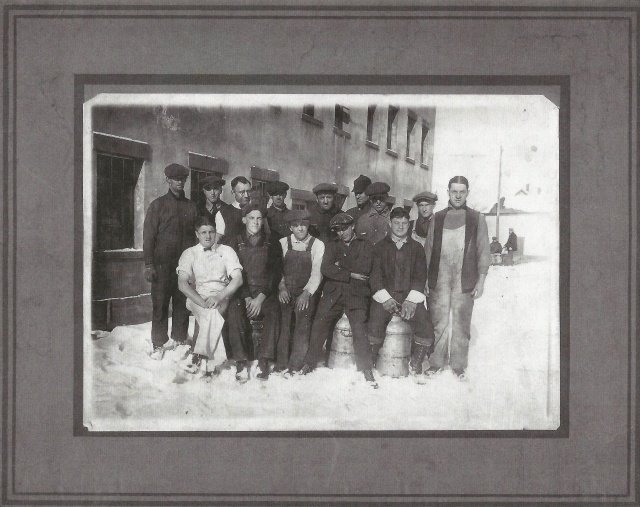
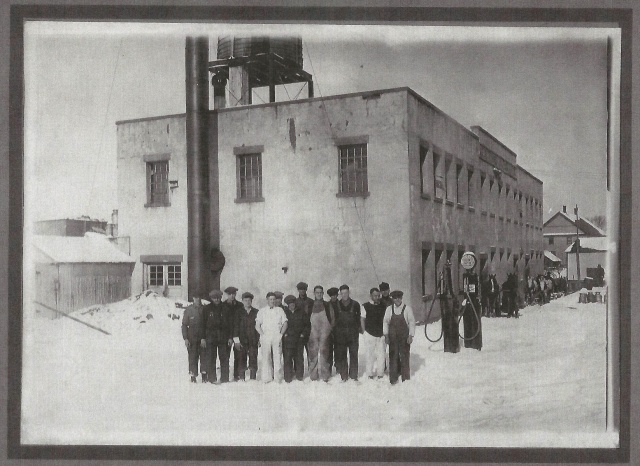

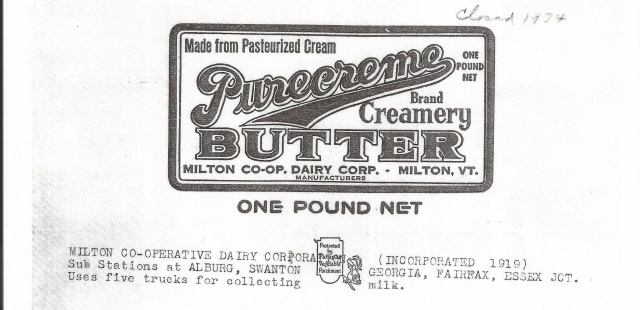
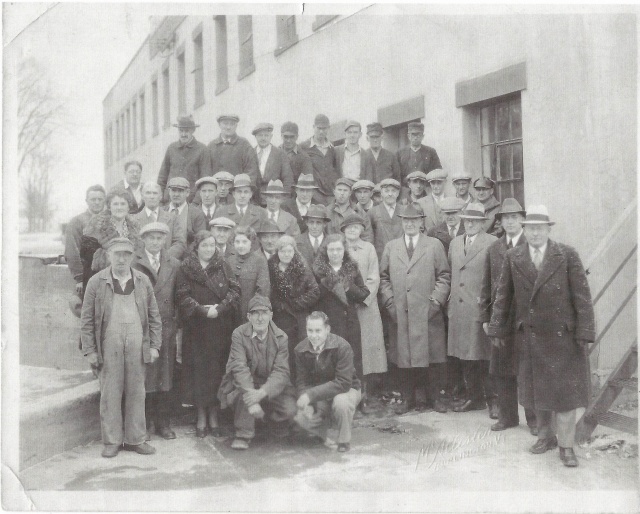
The Creamery Today
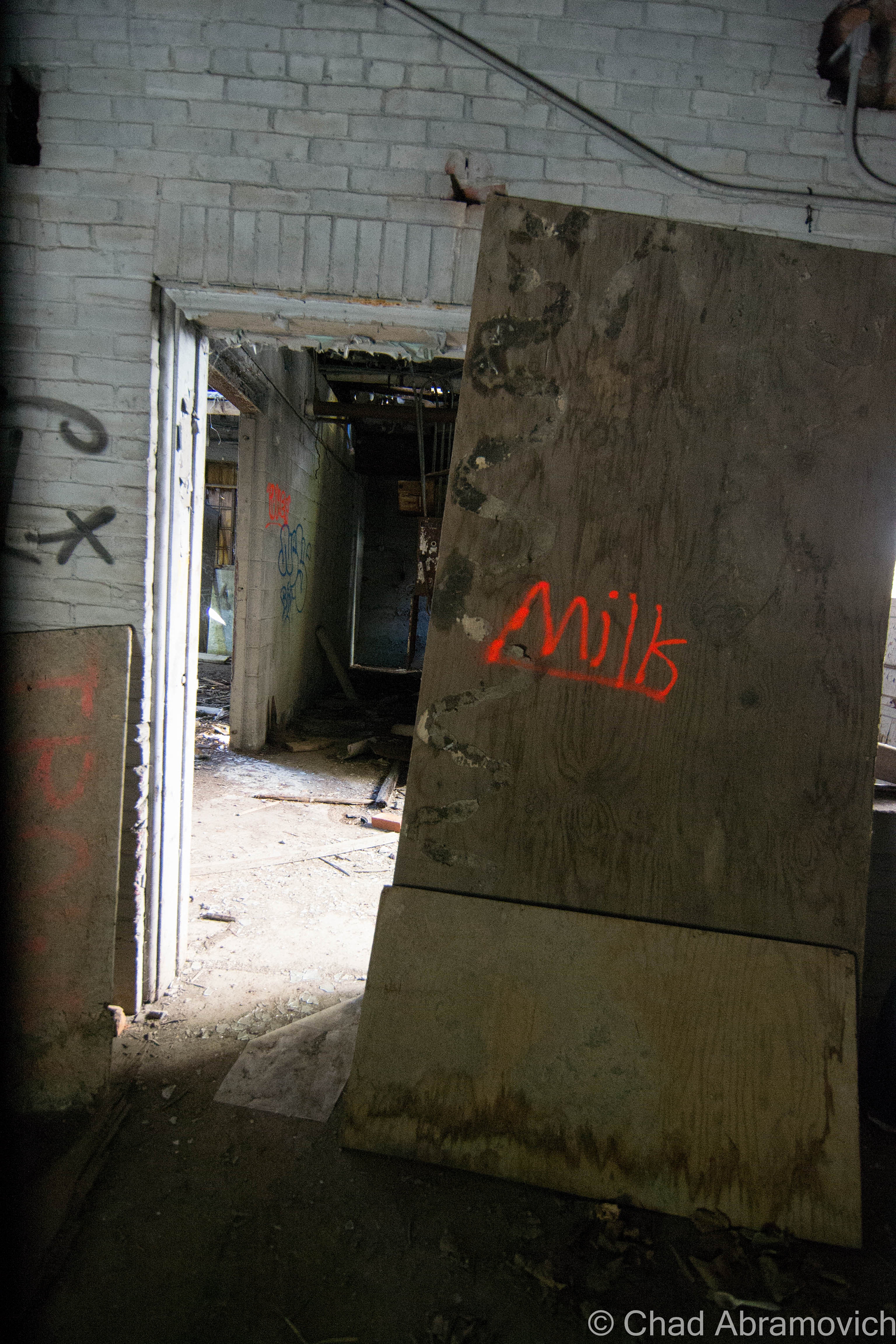
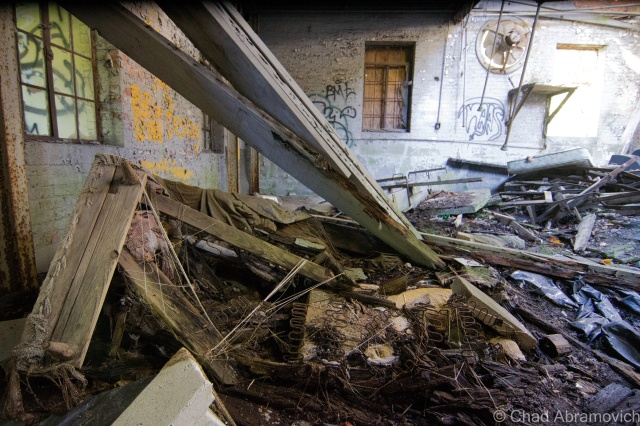

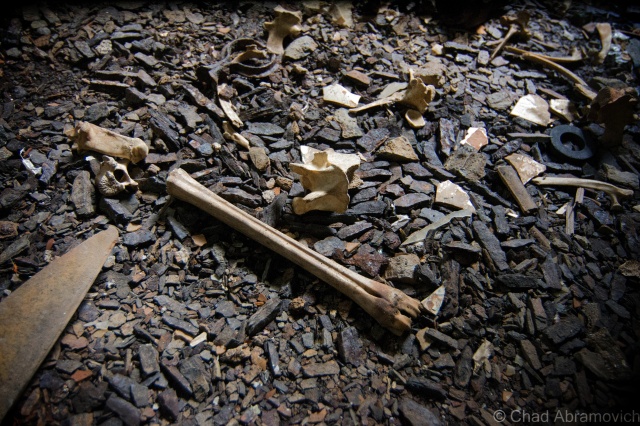
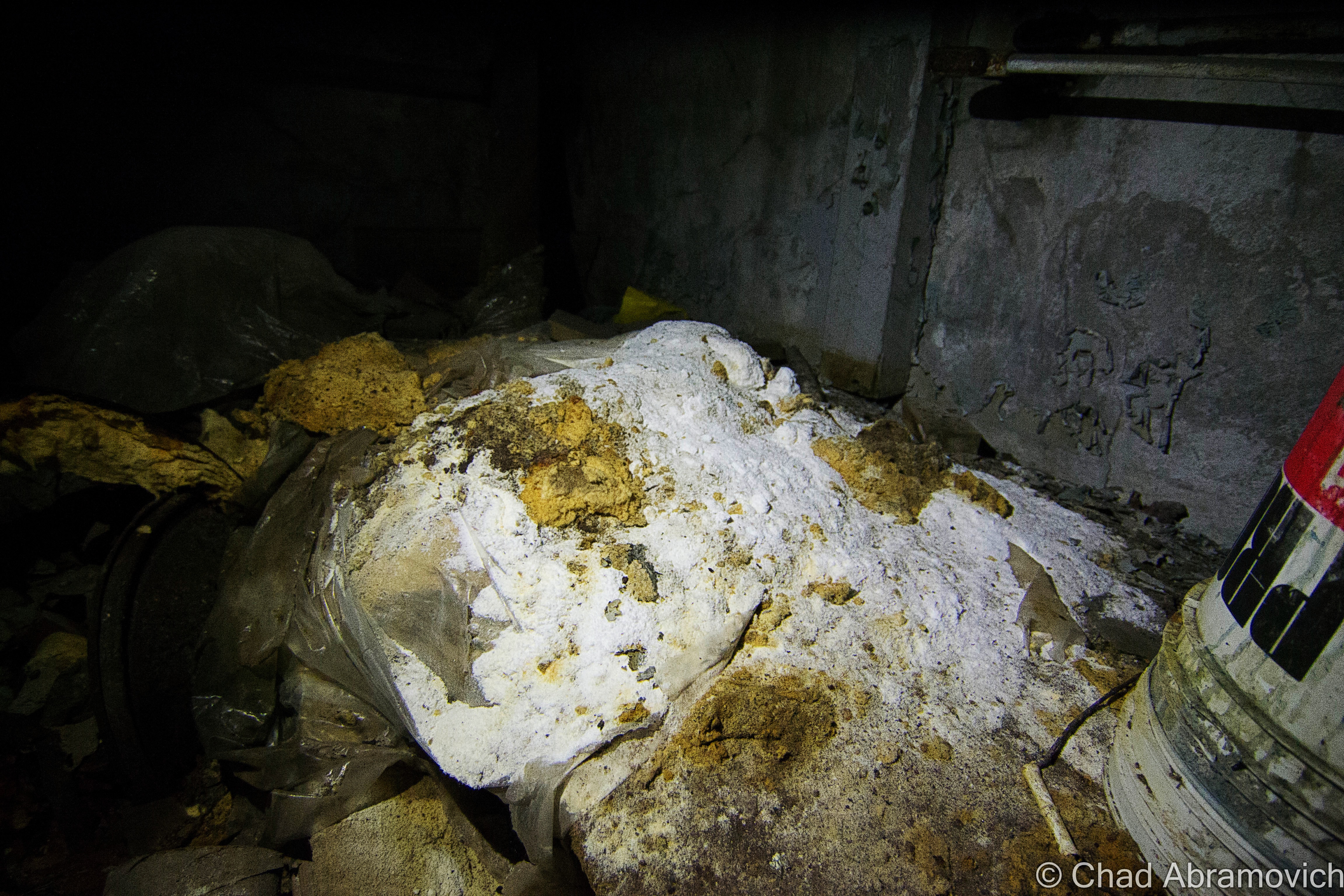
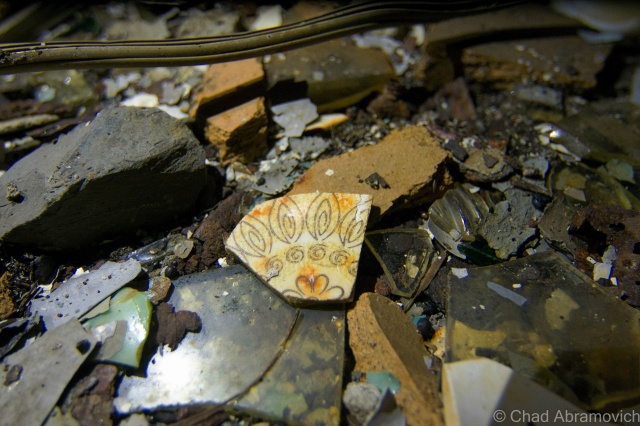
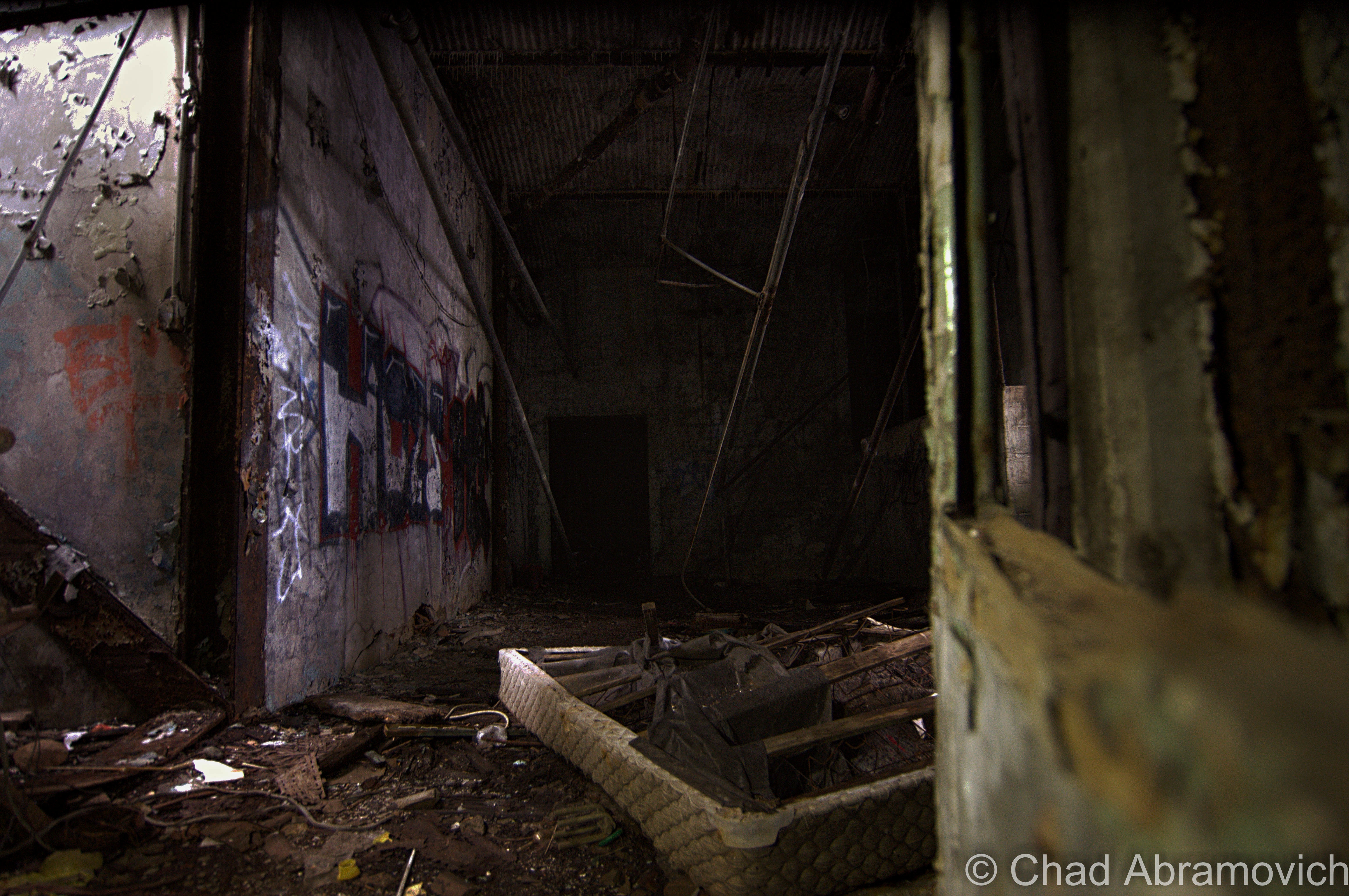
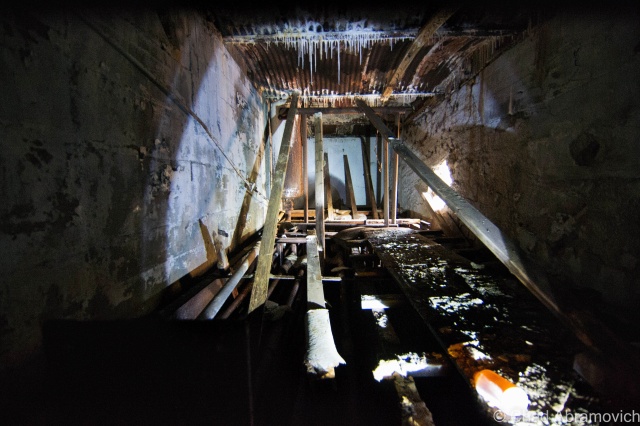
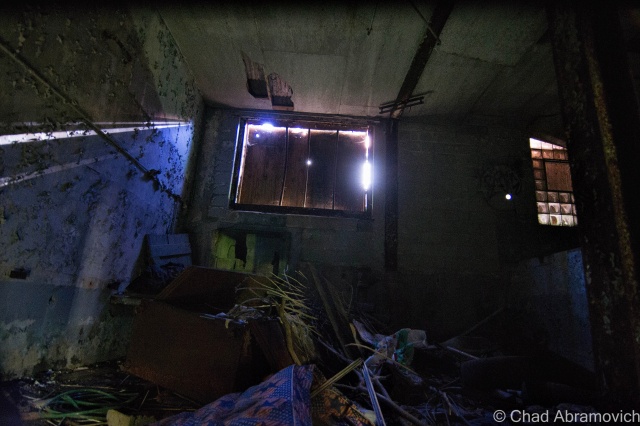
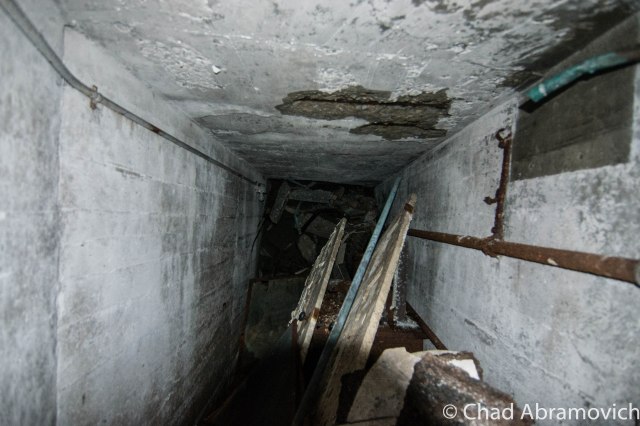
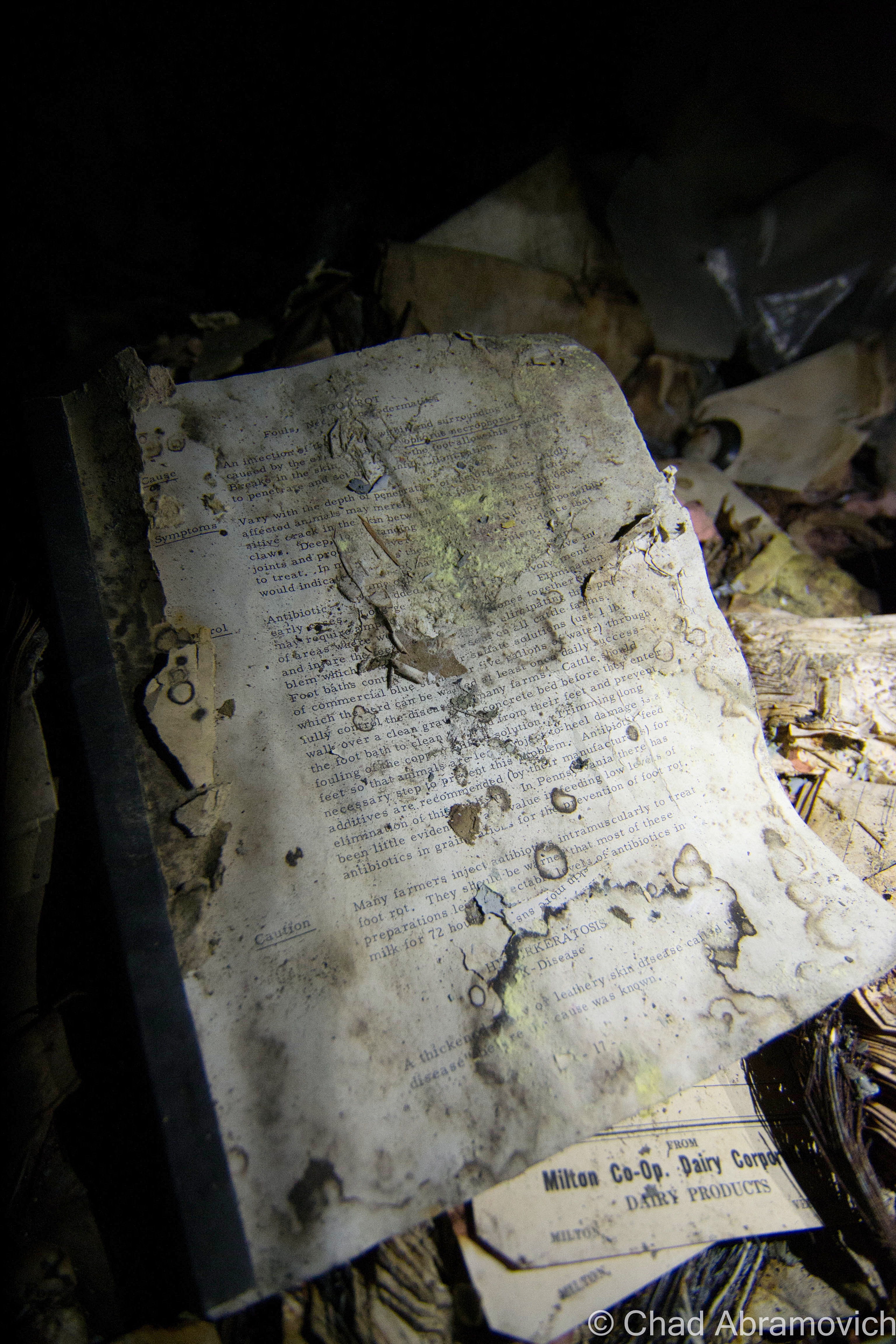
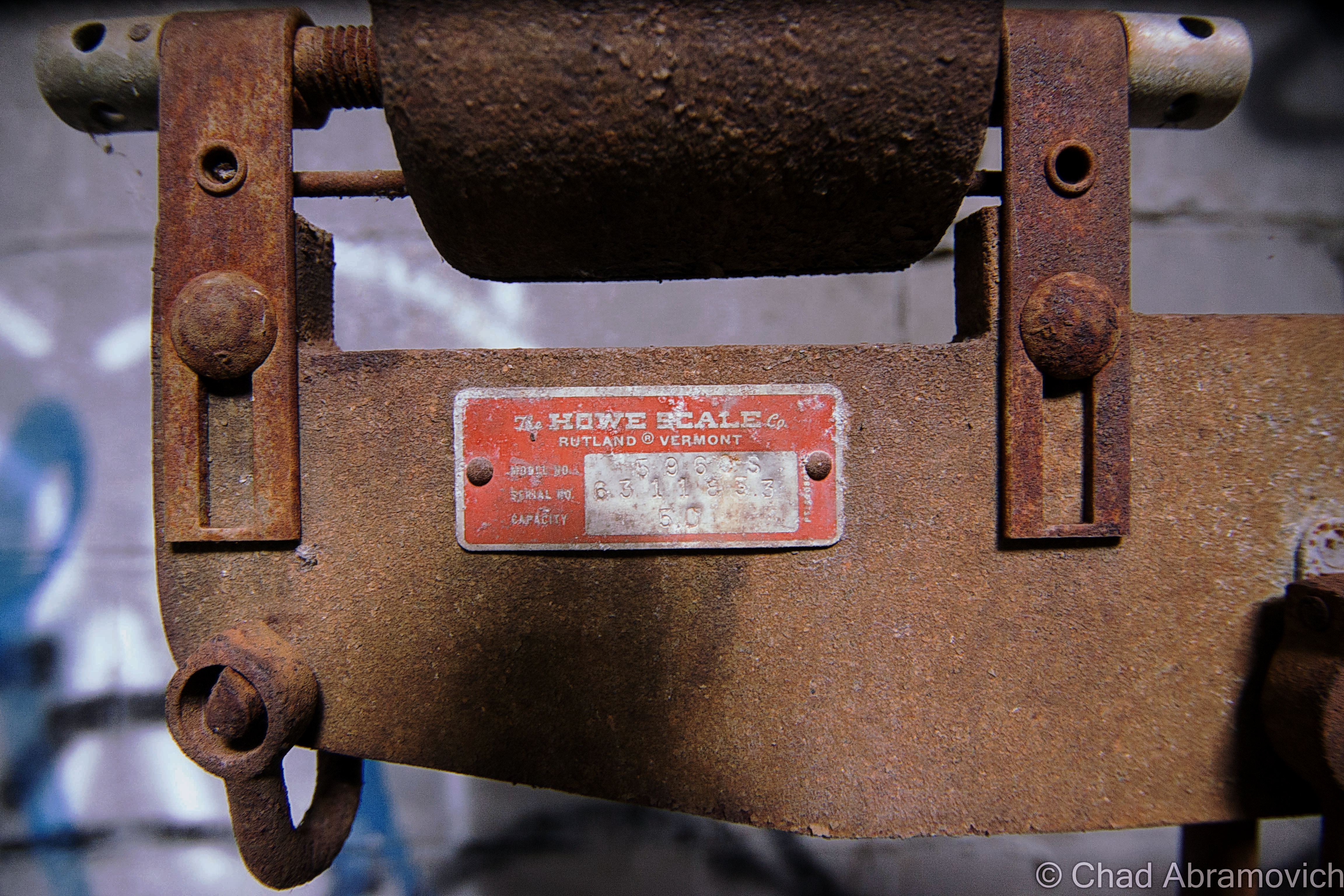
—————————————————————————————————————————————–
To all of my fans and supporters, I am truly grateful and humbled by all of the support and donations throughout the years that have kept Obscure Vermont up and running.
As you all know I spend countless hours researching, writing, and traveling to produce and sustain this blog. Obscure Vermont is funded entirely on generous donations that you the wonderful viewers and supporters have made. Expenses range from internet fees to host the blog, to investing in research materials, to traveling expenses. Also, donations help keep me current with my photography gear, computer, and computer software so that I can deliver the best quality possible. Seriously, even the small cost equivalent to a gas station cup of coffee would help greatly!
If you value, appreciate, and enjoy reading about my adventures please consider making a donation to my new Gofundme account or Paypal. Any donation would not only be greatly appreciated and help keep this blog going, it would also keep me doing what I love. Thank you!
Gofundme: https://www.gofundme.com/b5jp97d4


